Common Plants in Beijing Residential Areas | Shrubs (30 species)
This article is a follow-up to "Common Plants in Beijing Residential Communities | Trees " . The following plants are also based on the common shrubs in Huilongguan communities. It should be noted that summer is a season with few flowers. Most of the plants below have passed their flowering period. You can only identify the plants by carefully observing the leaves. See if you are good enough!
Note: Shrubs refer to those trees that have no obvious main trunk and are relatively short and grow in clusters. They can generally be divided into several categories, such as flower-viewing, fruit-viewing, and branch-viewing plants. They are short and clumping woody plants.
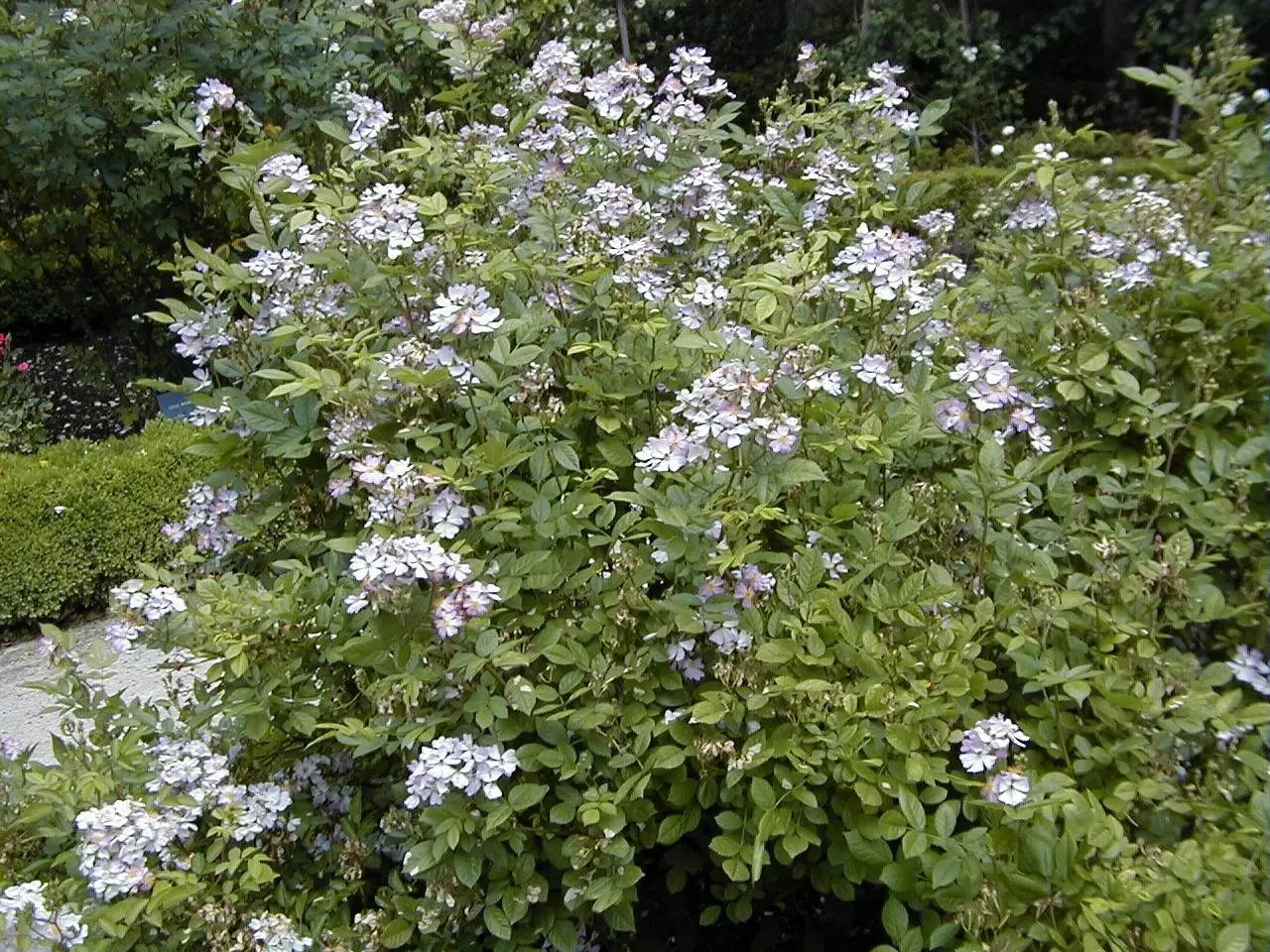
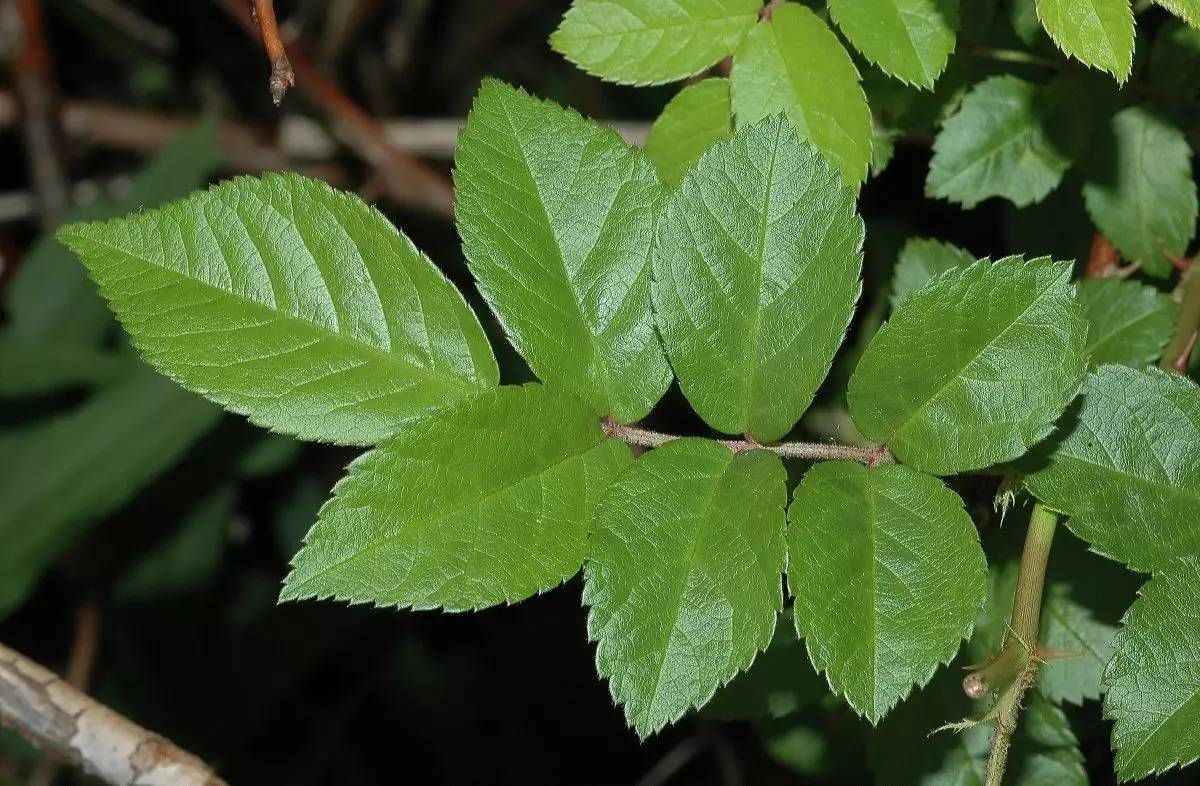
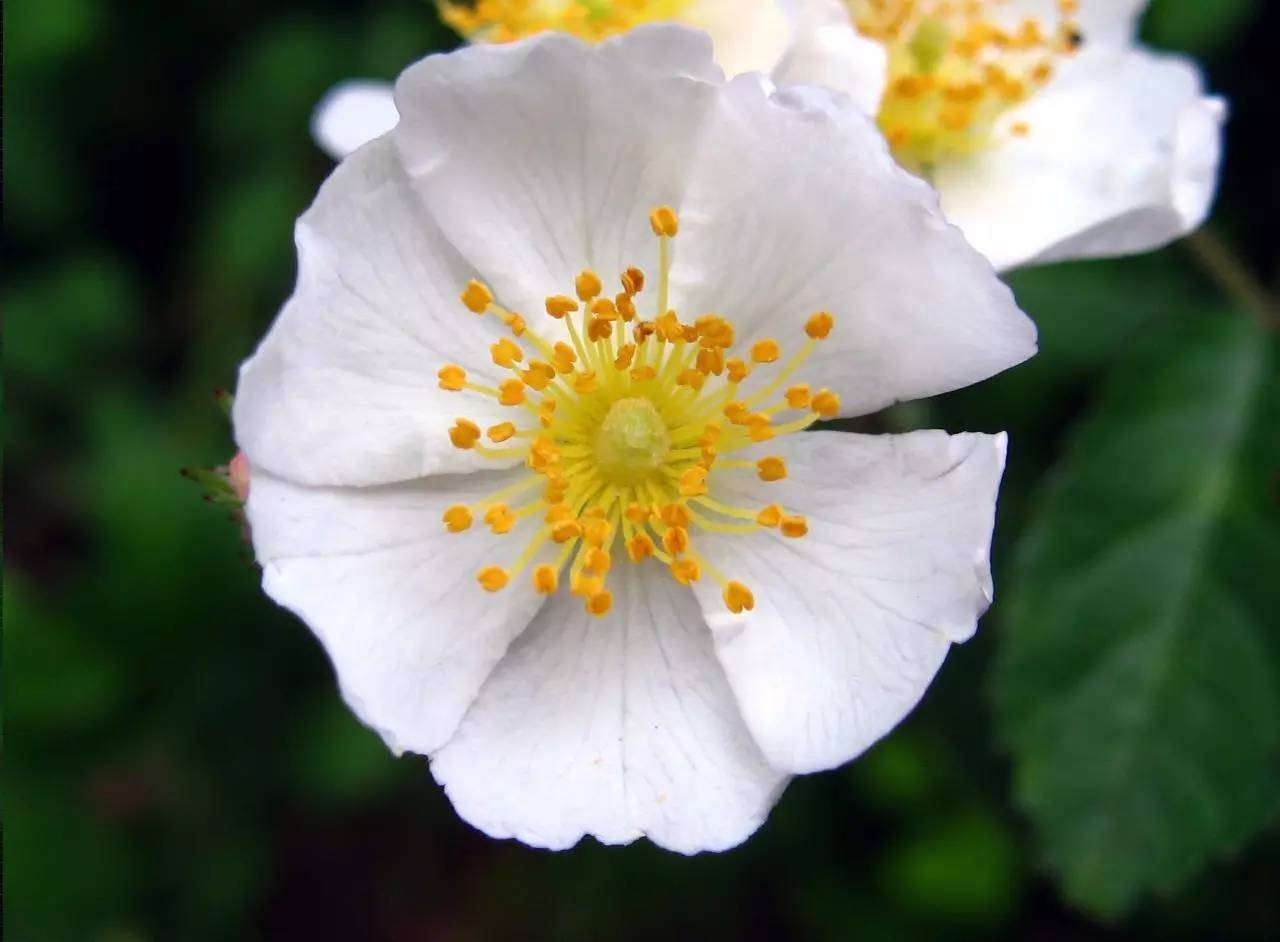
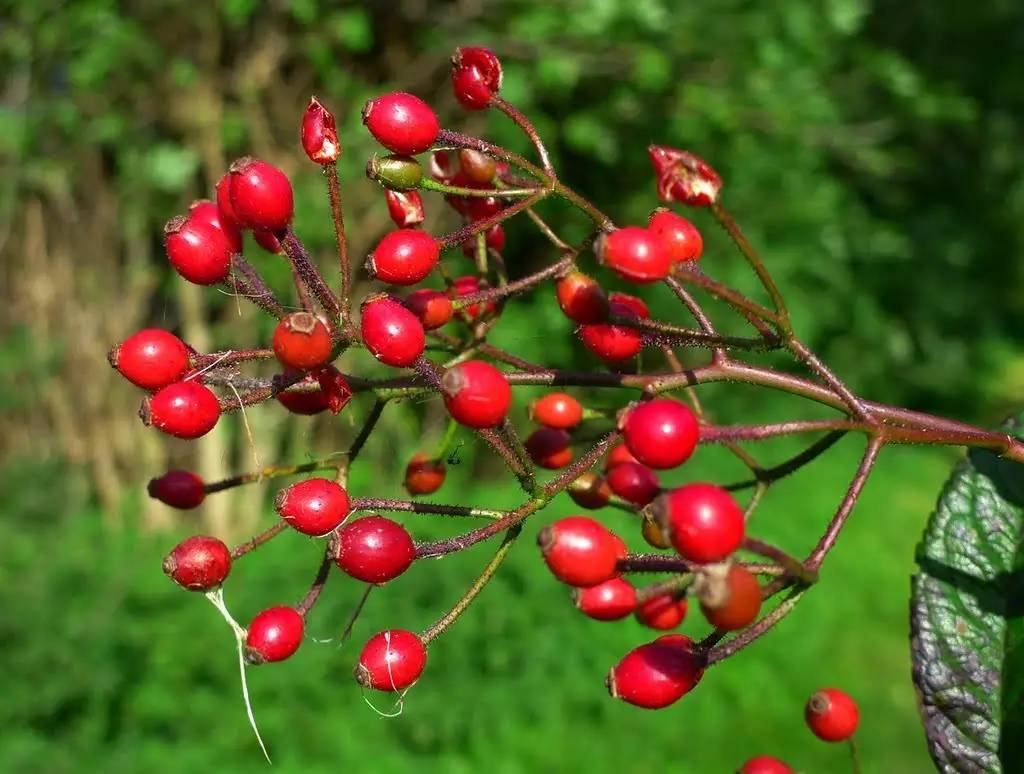
▲Wild rose
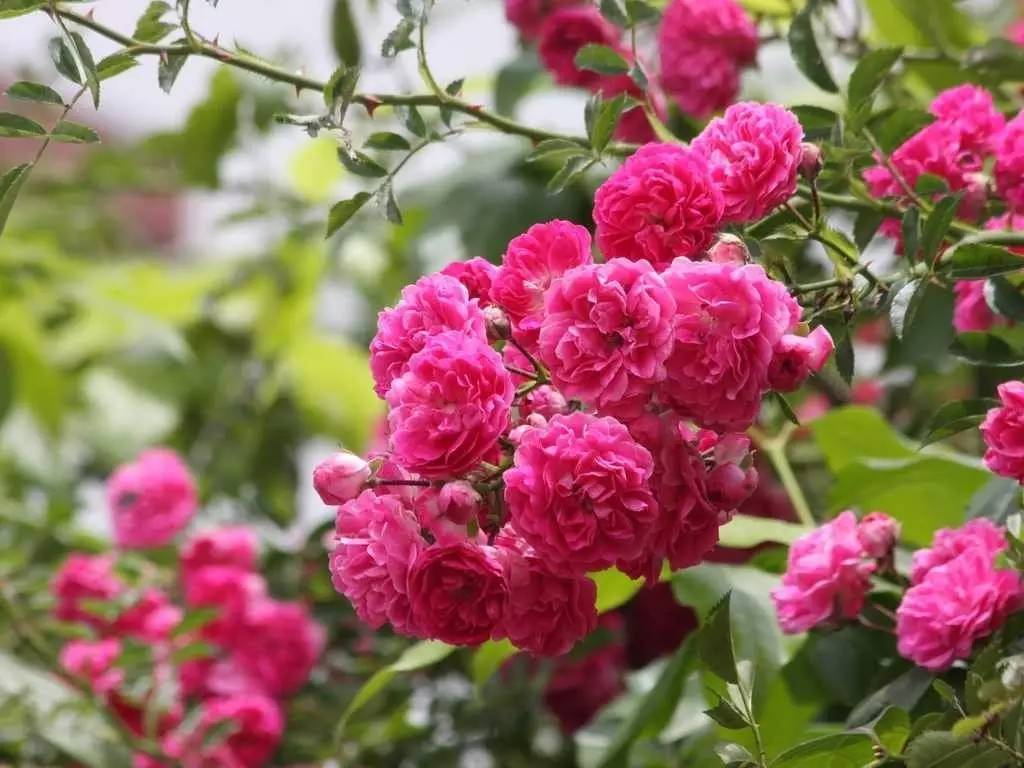
▲七姊妹(又名十姊妹)
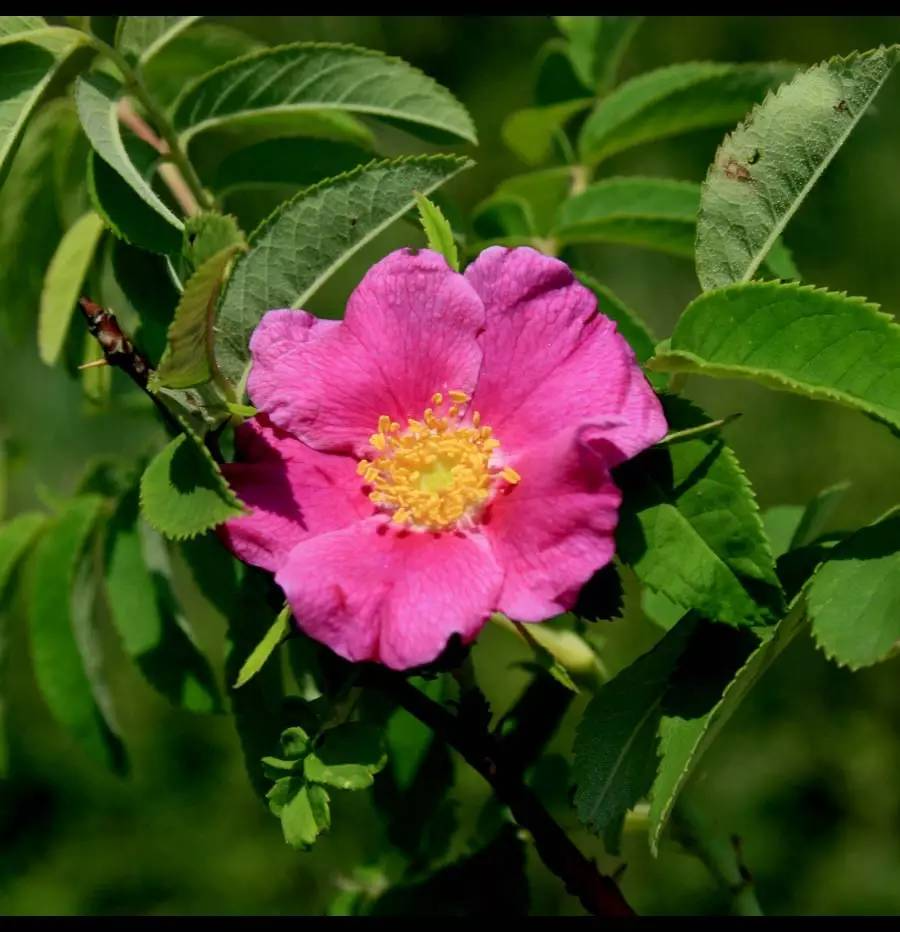
▲Beautiful Rose
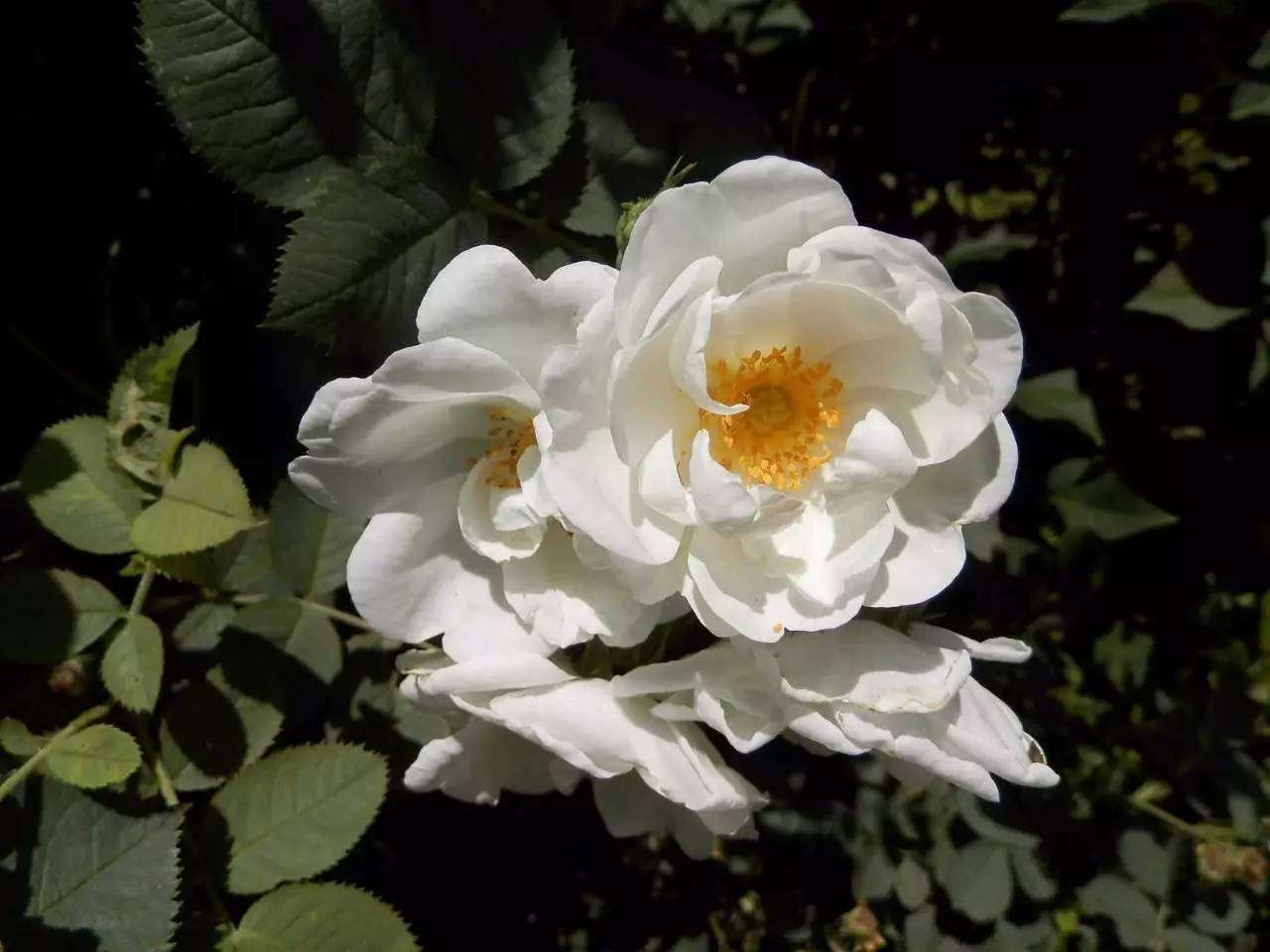
▲White Rose
▲ 1. Rose (blooming, fruiting): Rosaceae, also known as white remnant flower, thorny rose, buy smile, has been a famous flower since ancient times, and likes to grow in bushes on the roadside, field edge or hilly land. There are many colors, including white, light red, dark pink, yellow, etc. The flowering period is from May to September, and the fruiting period is from August to October. There are many common rose varieties in the community, wild rose, white rose, beautiful rose, and seven sisters are all common varieties, so I won’t introduce them one by one.
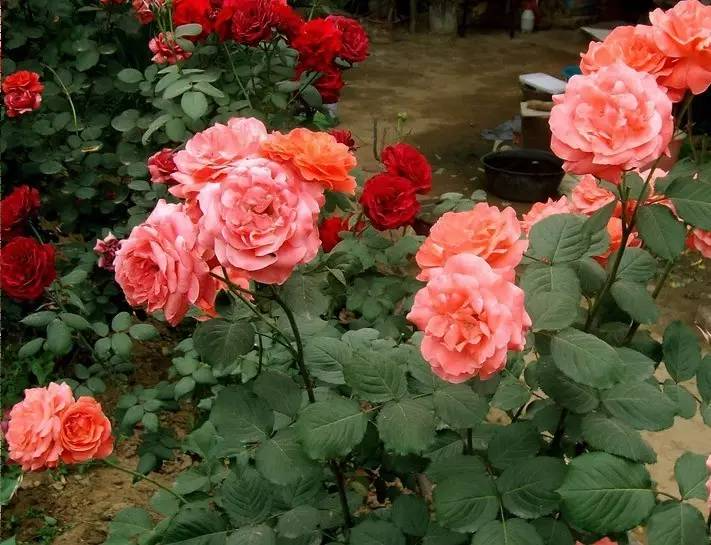
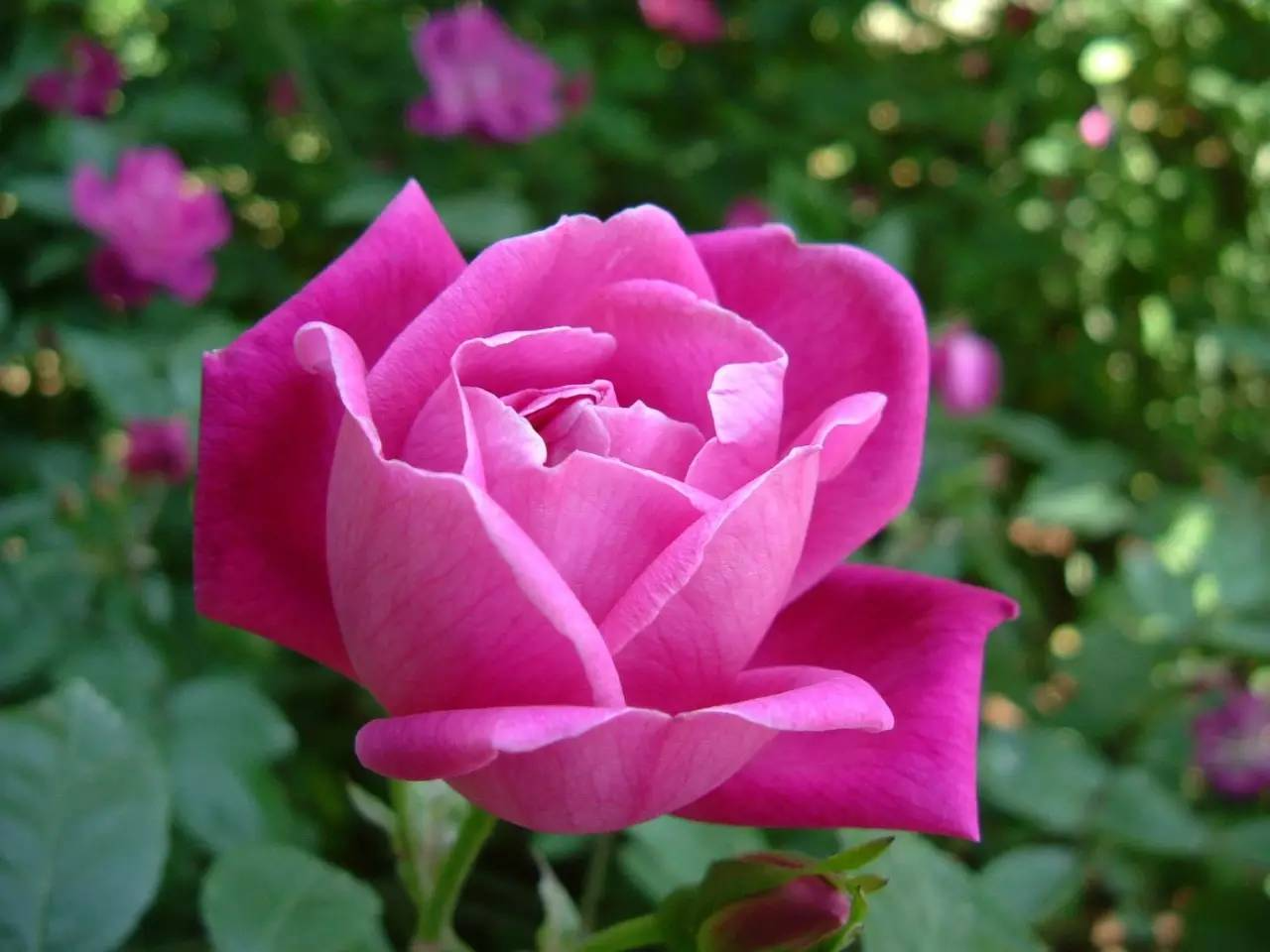
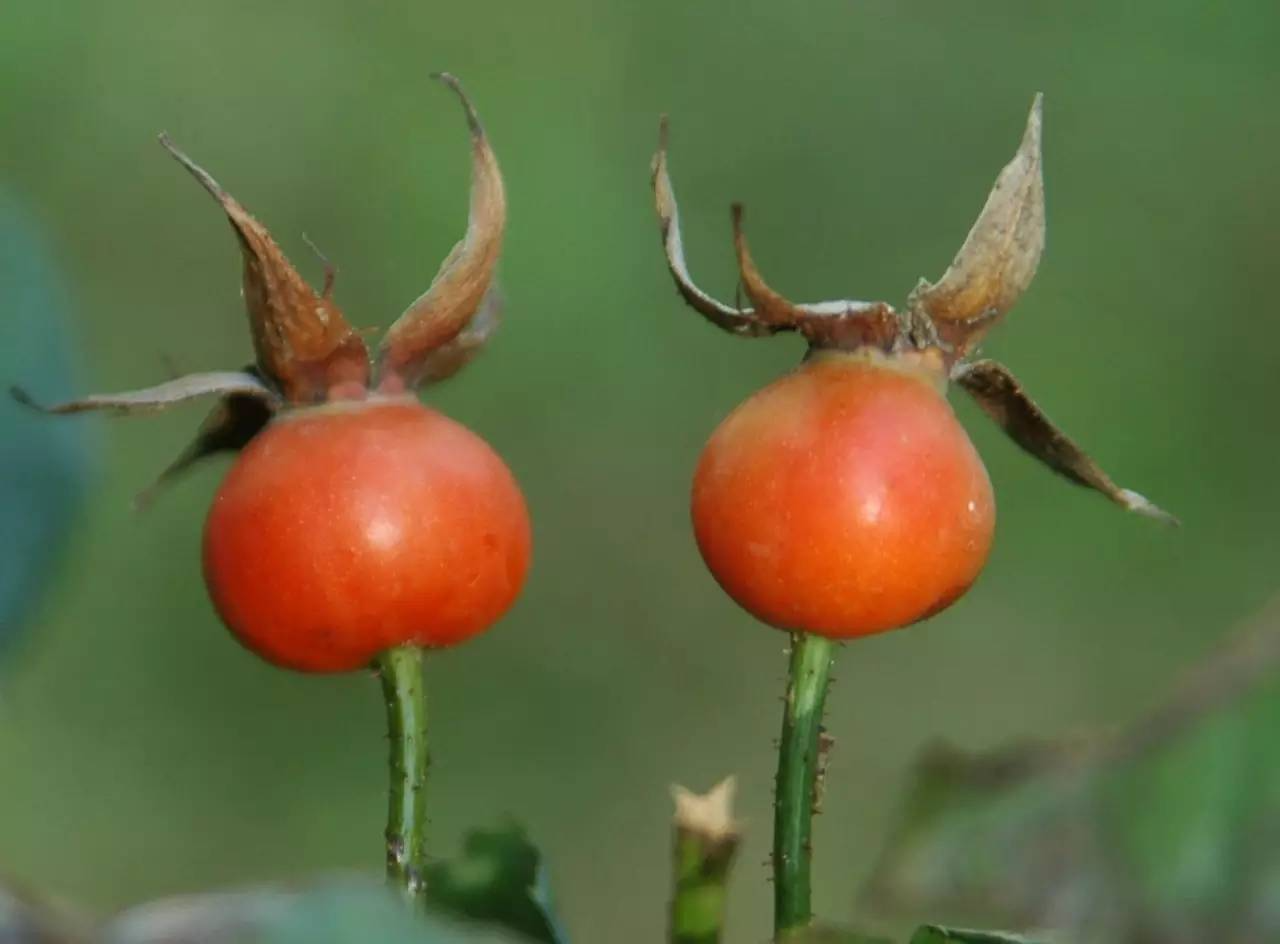
▲2. Rose (blooming, fruiting) : Rosaceae, genus Rosa, known as the queen of flowers, also known as "Monthly Red", blooms all year round, generally red, pink, occasionally white and yellow, can be used as an ornamental plant, can also be used as a medicinal plant, also known as rose. There are three natural variants, modern roses have a variety of flower shapes, with single petals and double petals, as well as beautiful flower shapes such as high heart curling edges; its colors are bright and rich, not only red, pink yellow, white and other single colors, but also mixed colors, silver edges and other varieties; most varieties are fragrant. There are many varieties of roses, there are nearly 10,000 species in the world, and there are more than 1,000 species. The flowering period is from April to September, and the fruiting period is from June to November.
It is one of the origins of rose, and 52 cities have chosen it as their city flower.
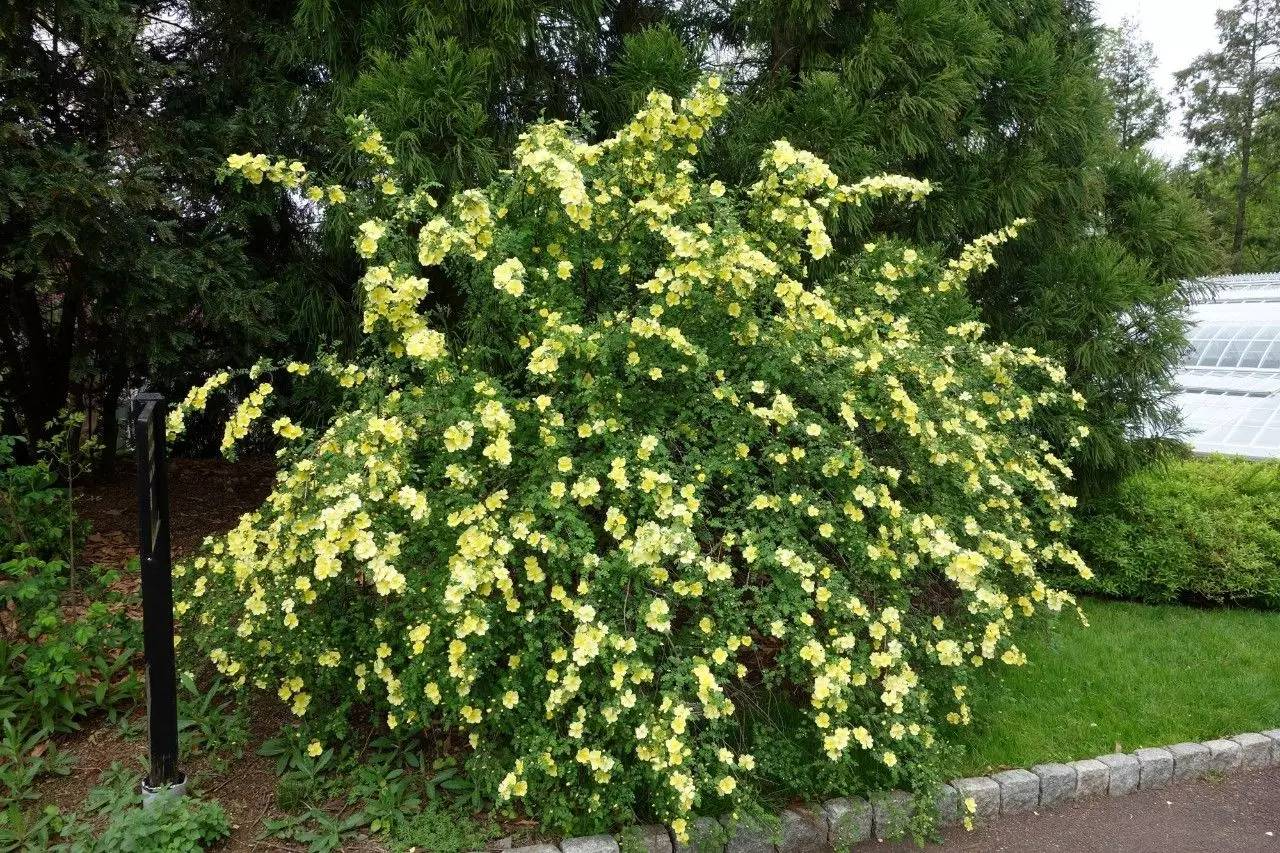
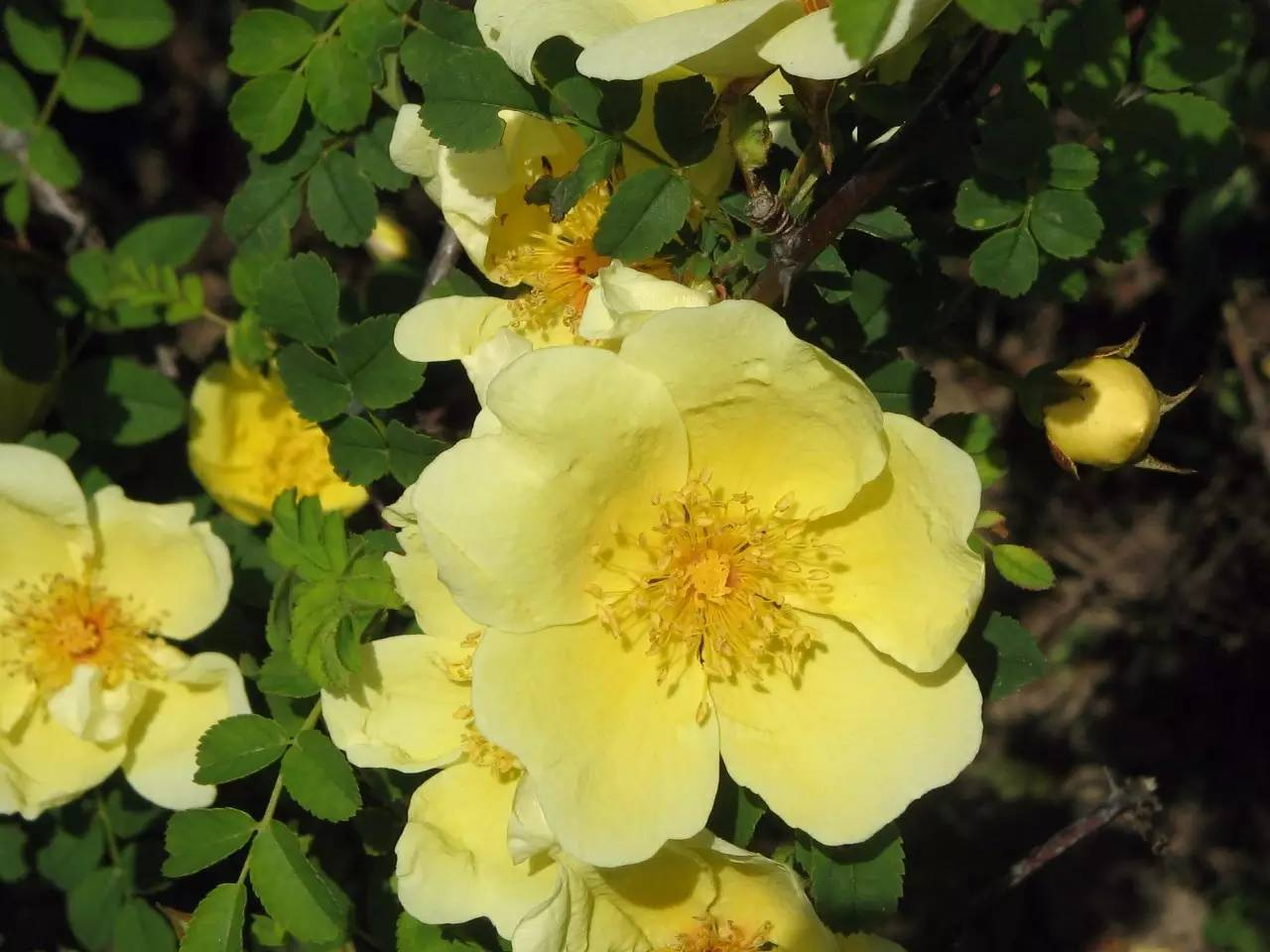
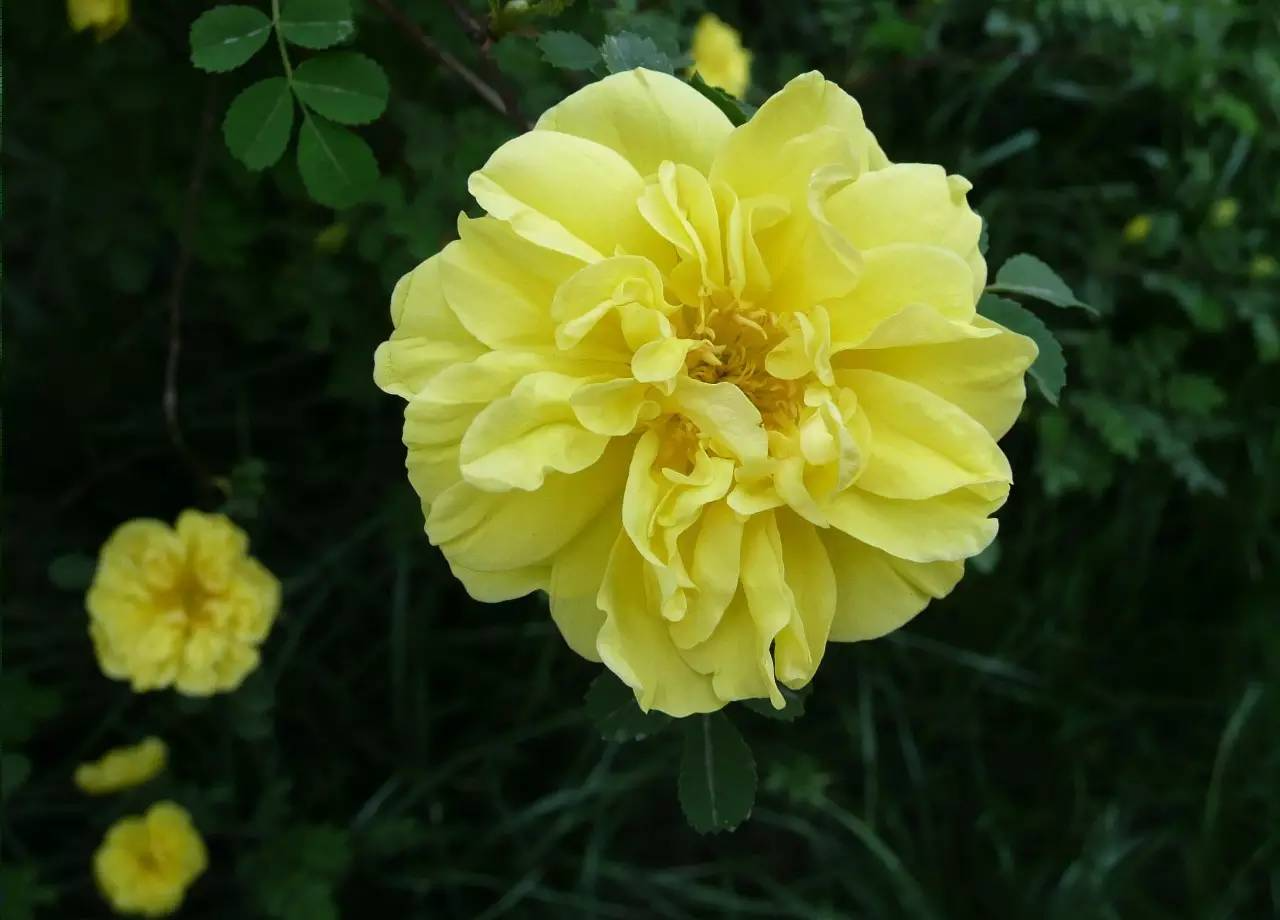
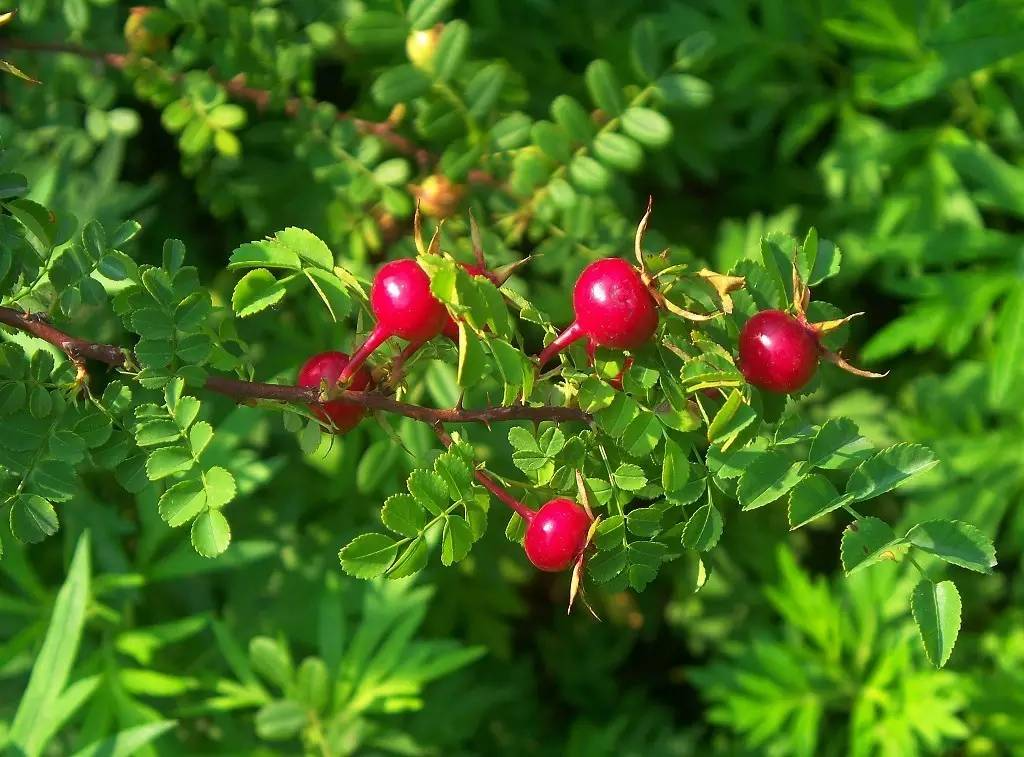
▲3. Yellow Rose (flowering period has passed, fruiting) : Rosaceae, genus Rosa, with single and double petals. The flowers are yellow, the thorns are reddish, the fruit is edible but tasteless, and the flowers can be used to extract aromatic oil. Flowering period is April to June, and the fruiting period is July to August.
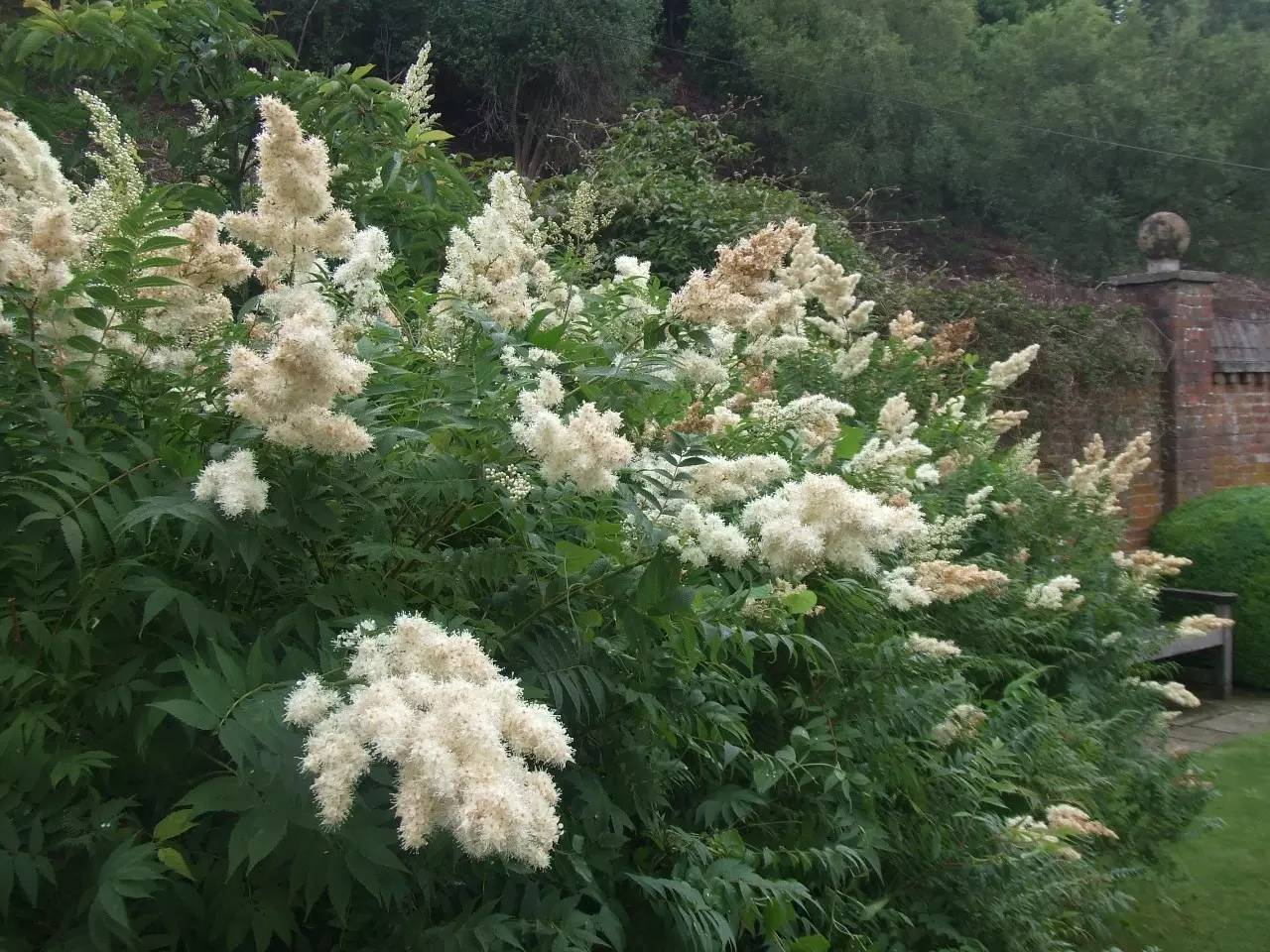
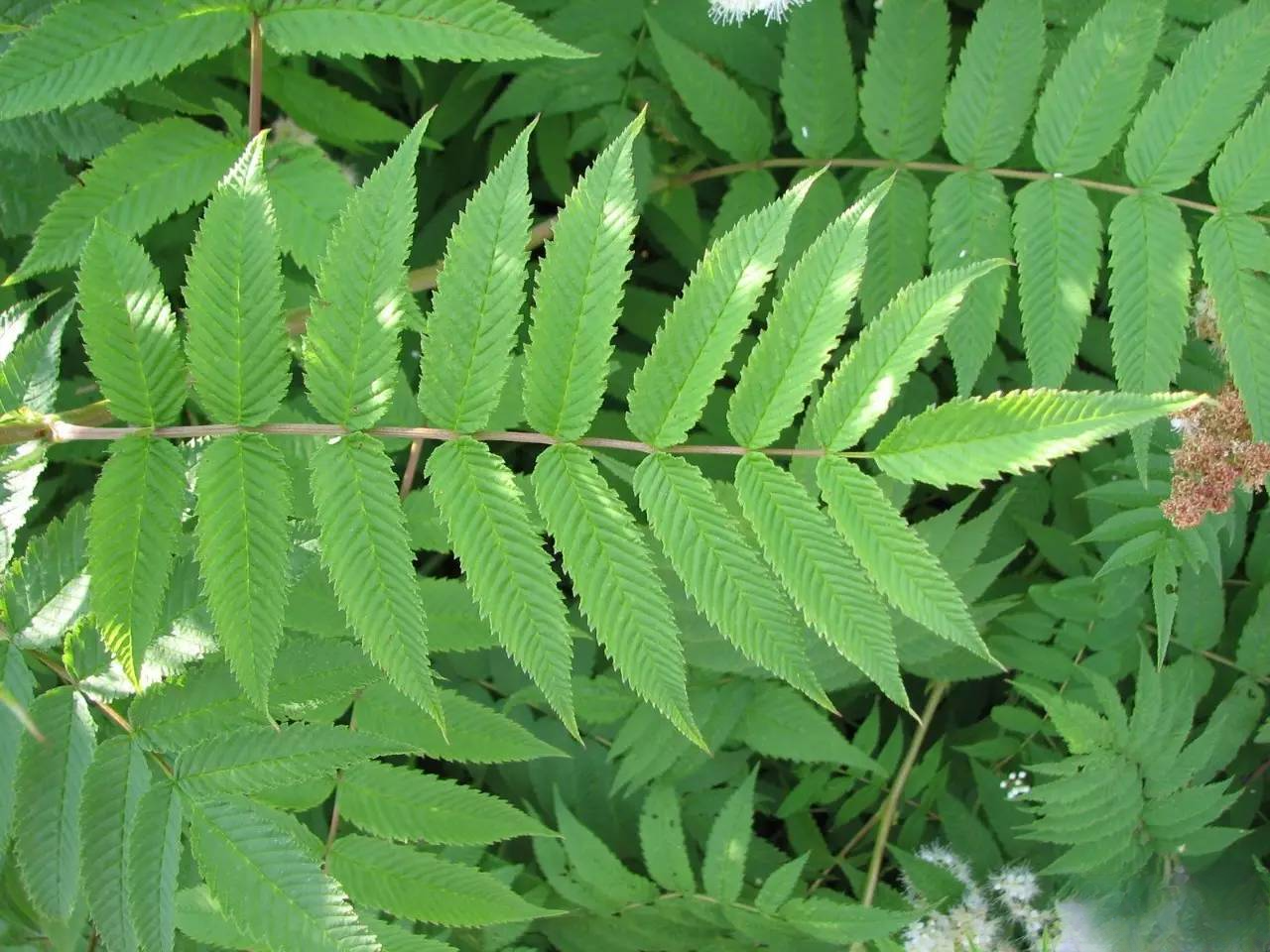
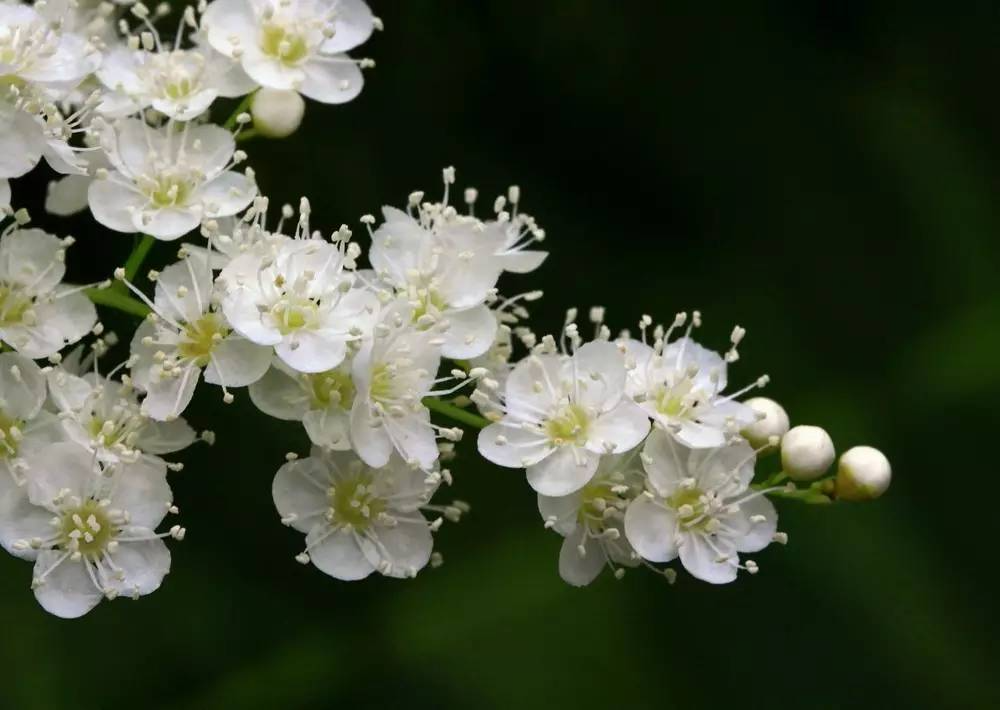
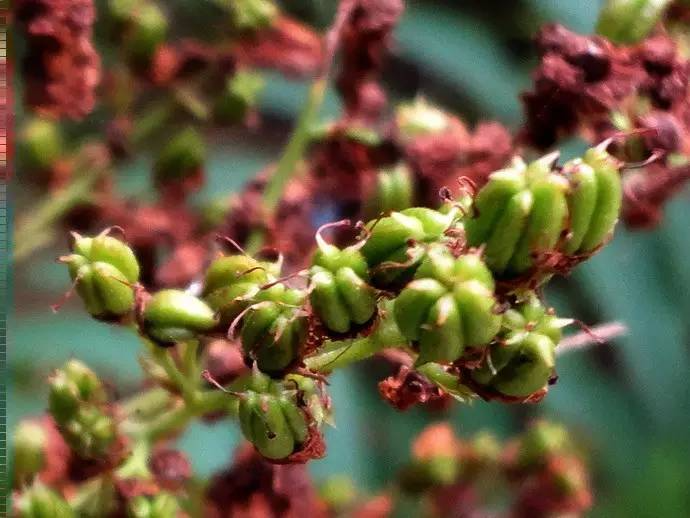
▲4. Pearl Bush (blooming, fruiting) : Pearl Bush belongs to the genus of Rosaceae, and is named after its pearl-like flower color. Pearl Bush has beautiful flowers and leaves, a long flowering period, and is a very popular ornamental tree species in garden applications. It can be planted alone, in rows, or in clusters. The flowering period is July-August, and the fruiting period is September .
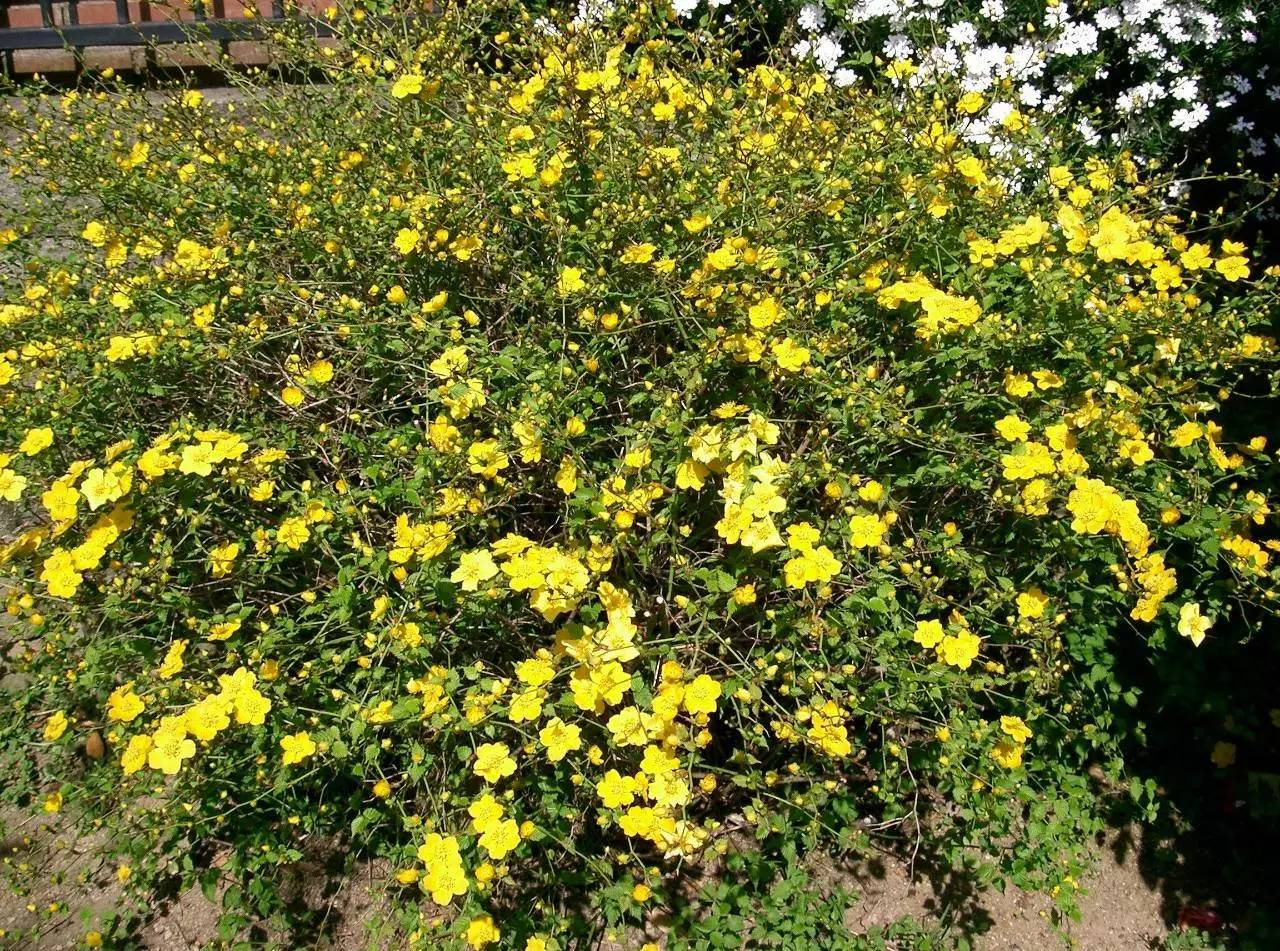

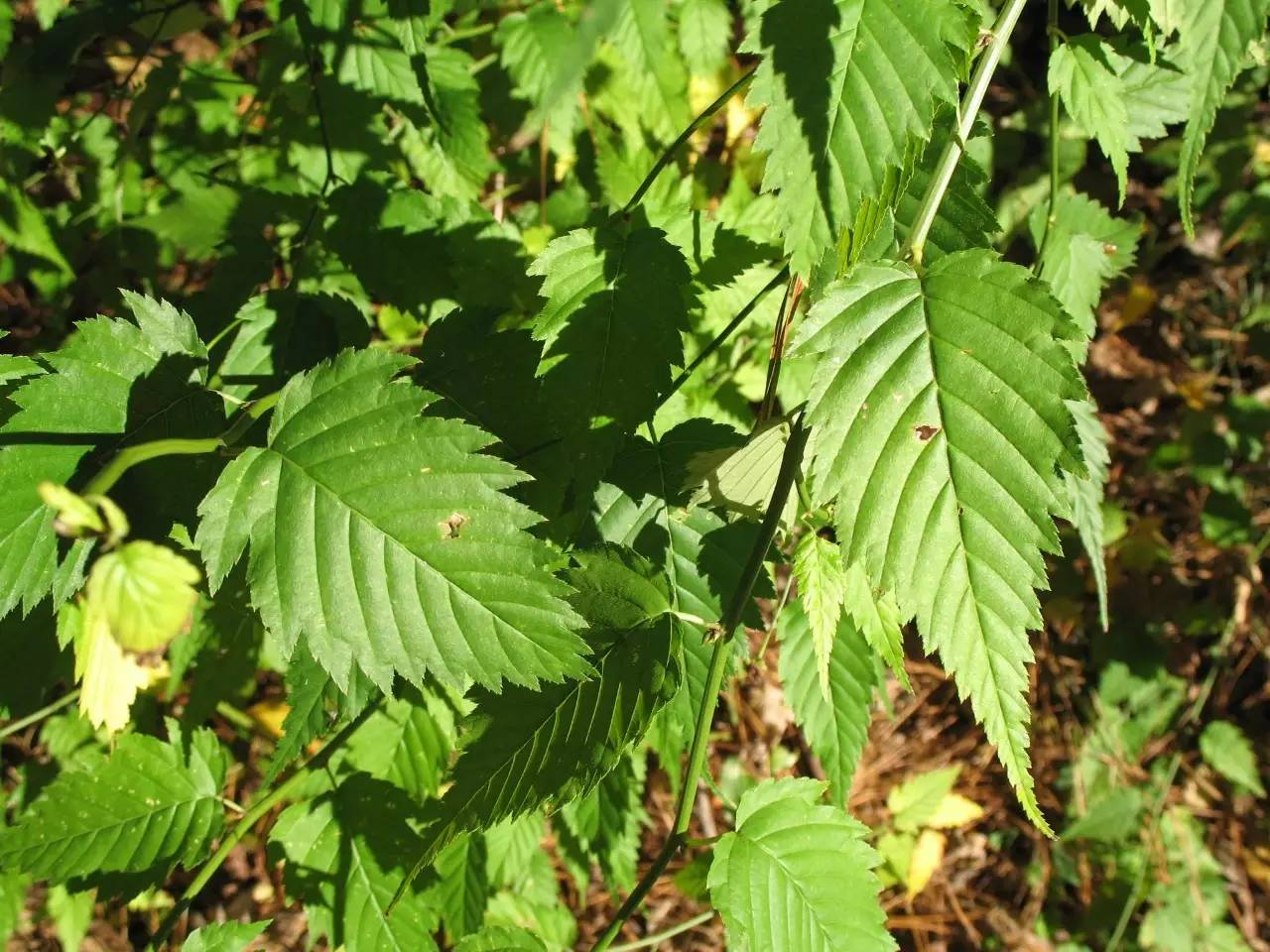
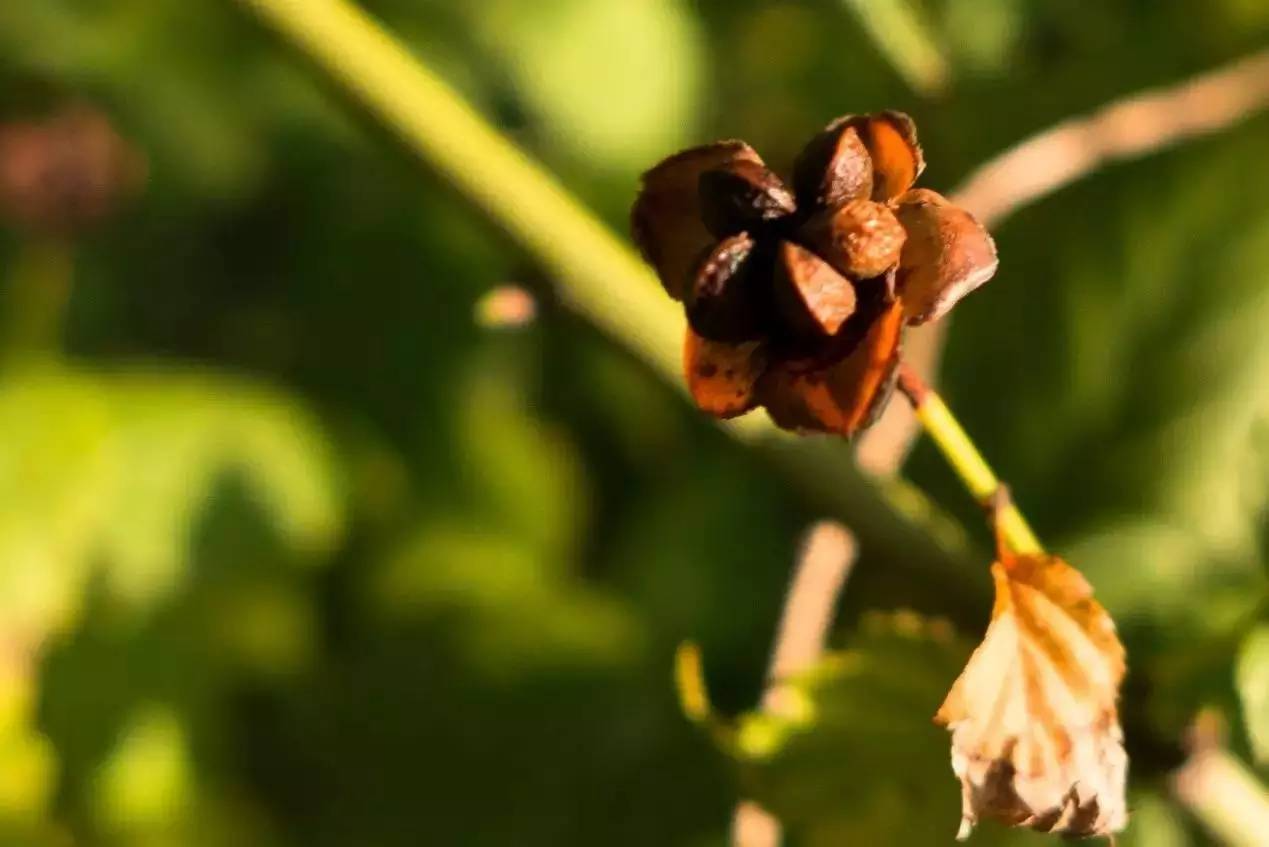
▲ 5. Deutzia (blooming, fruiting) : Deutzia belongs to the genus Deutzia of the Rosaceae family. It has soft green branches and leaves, and golden flowers all over the tree. It is unique and can be planted in the corners of walls and pipelines to provide a shelter. It is suitable for flower hedges and flower paths. It can be planted in groups in front of evergreen trees, beside ancient trees, in the cracks of rocks, or in patches by the pool, waterside, streams and lakes. If it is planted in sparse forests and grasslands or under the forest on the hillside, it will be particularly elegant and full of wild interest. It can also be used as a potted plant for viewing. The flowering period is from April to July, and the fruiting period is from June to August.
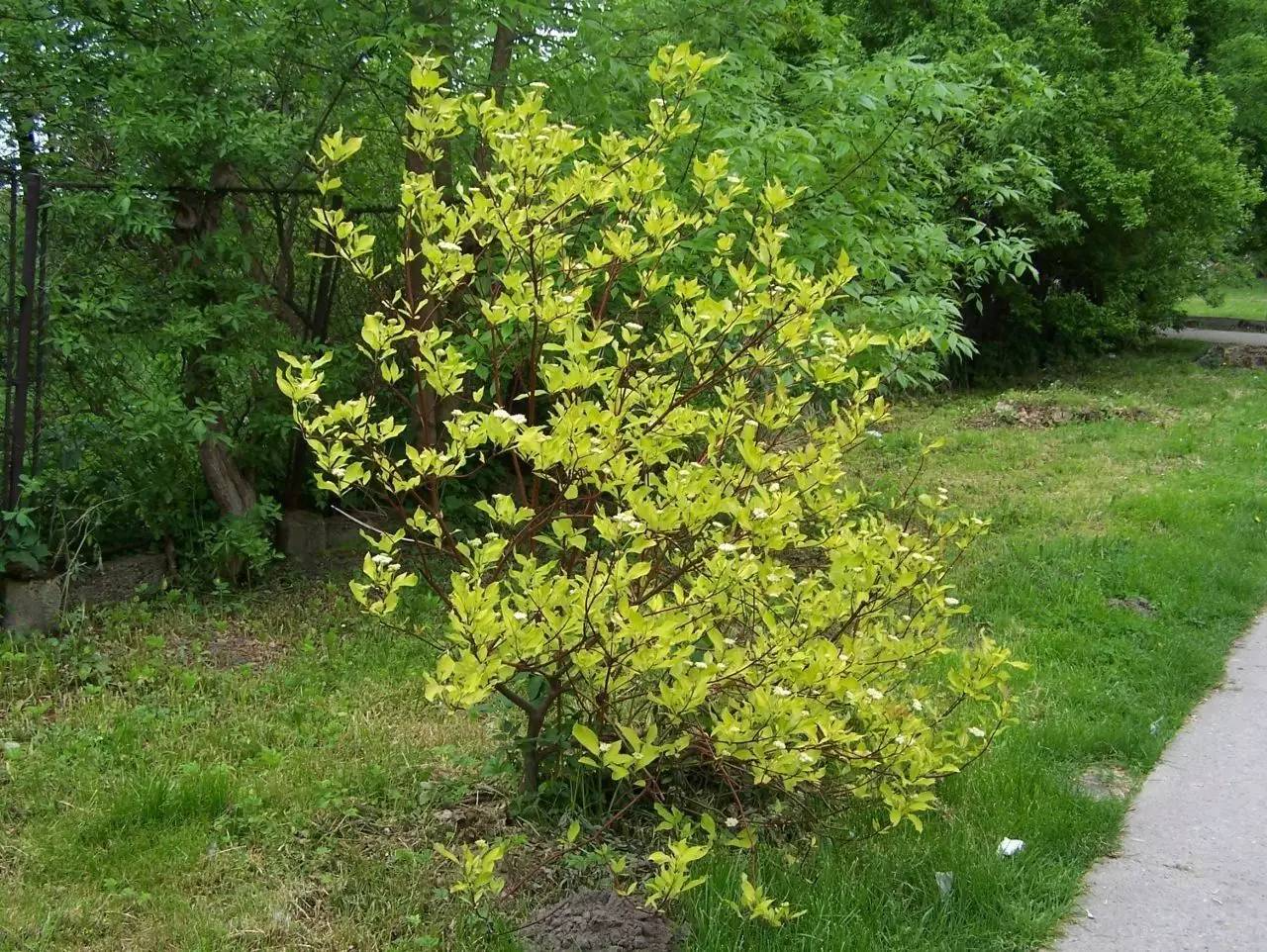
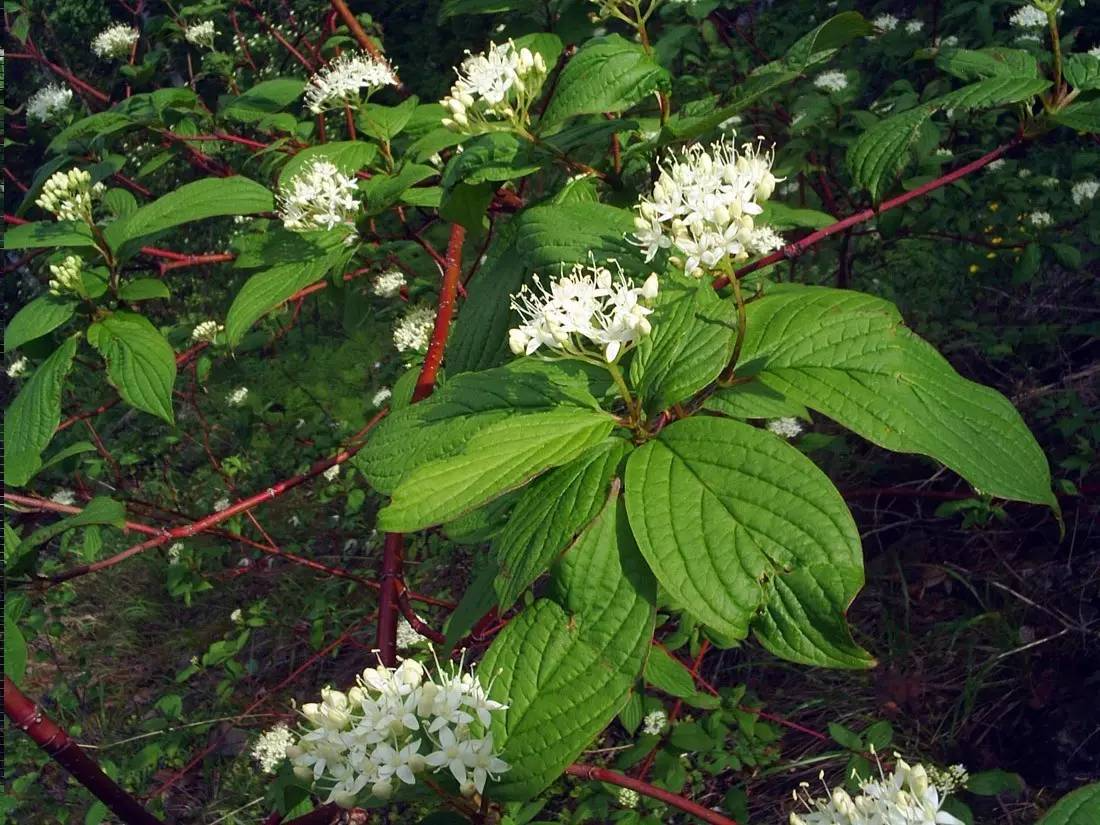
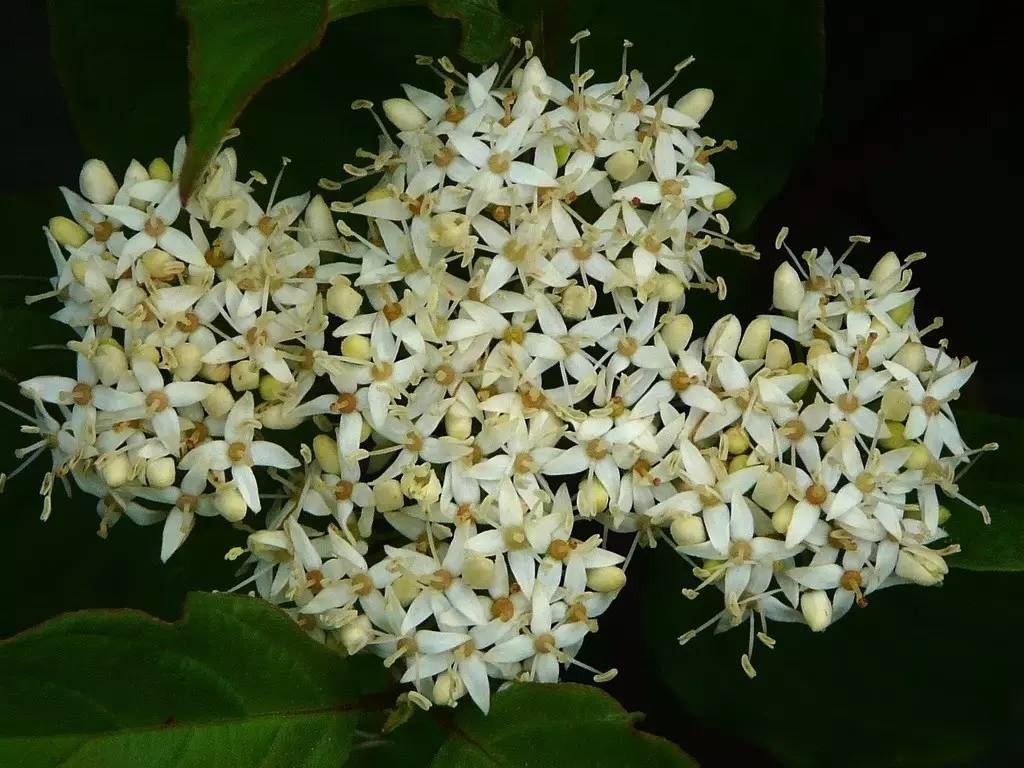
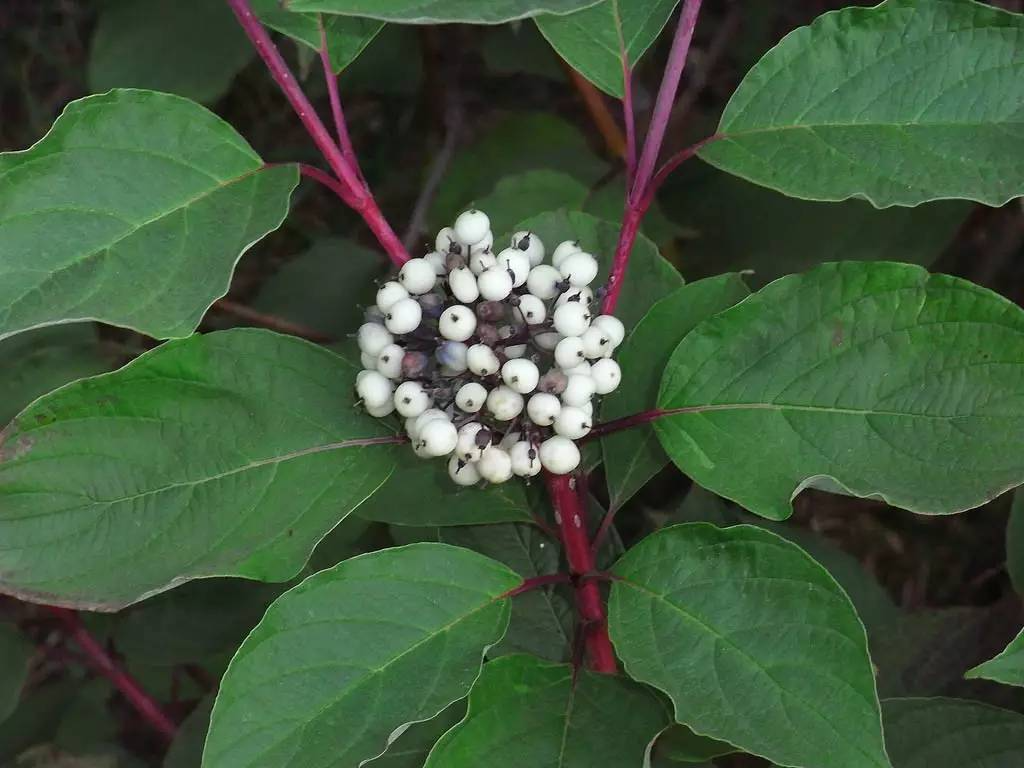
▲6. Red yew (flowering period has passed, fruiting) : Cornaceae, genus yew, red yew has bright red leaves in autumn, white small fruits, and red branches like coral after the leaves fall. It is a rare ornamental stem plant and also a good cutting material. In gardens, it is often planted on lawns or planted alternately with evergreen trees to achieve the effect of red and green contrasting with each other. Flowering period is May-June.
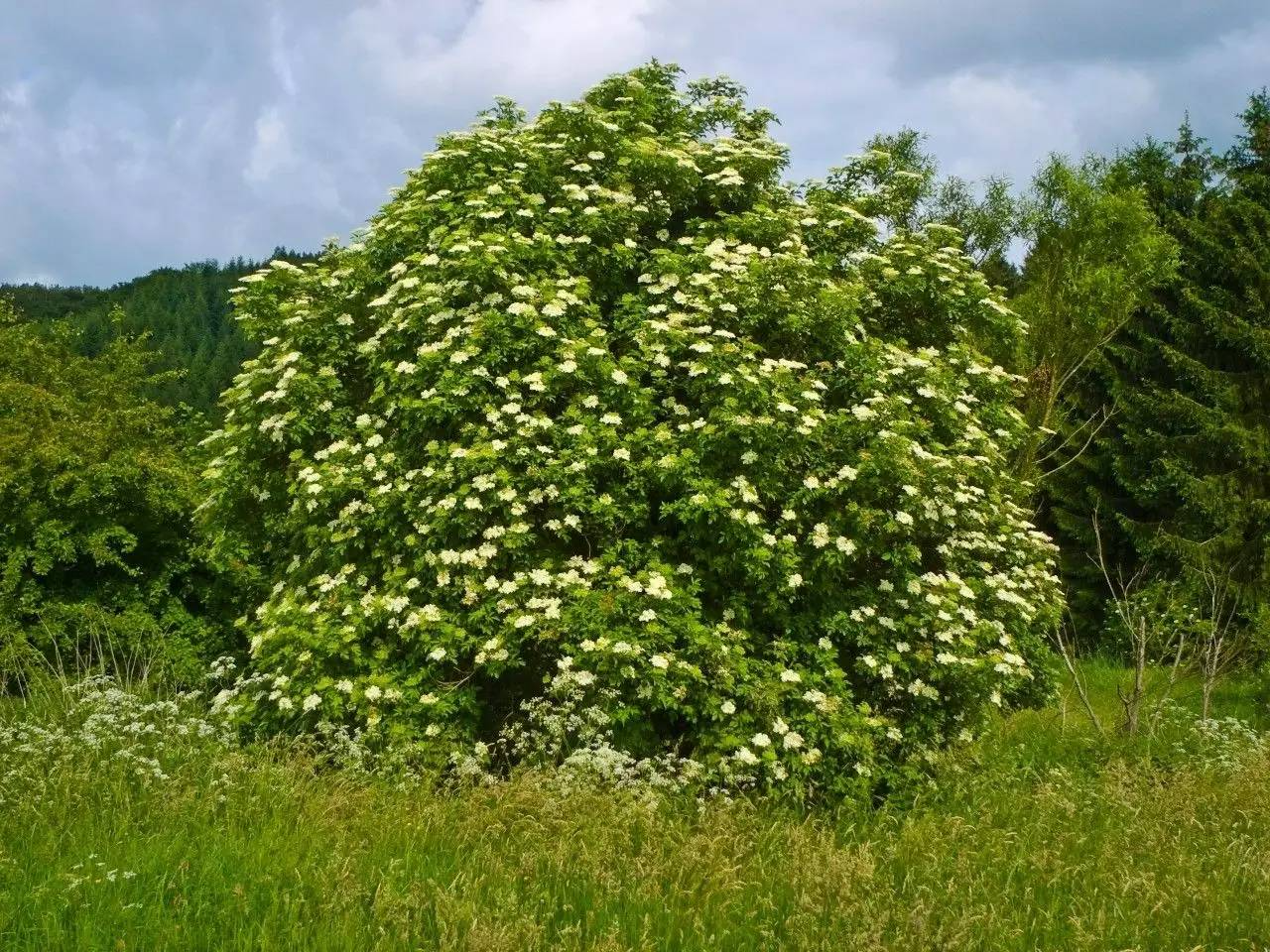
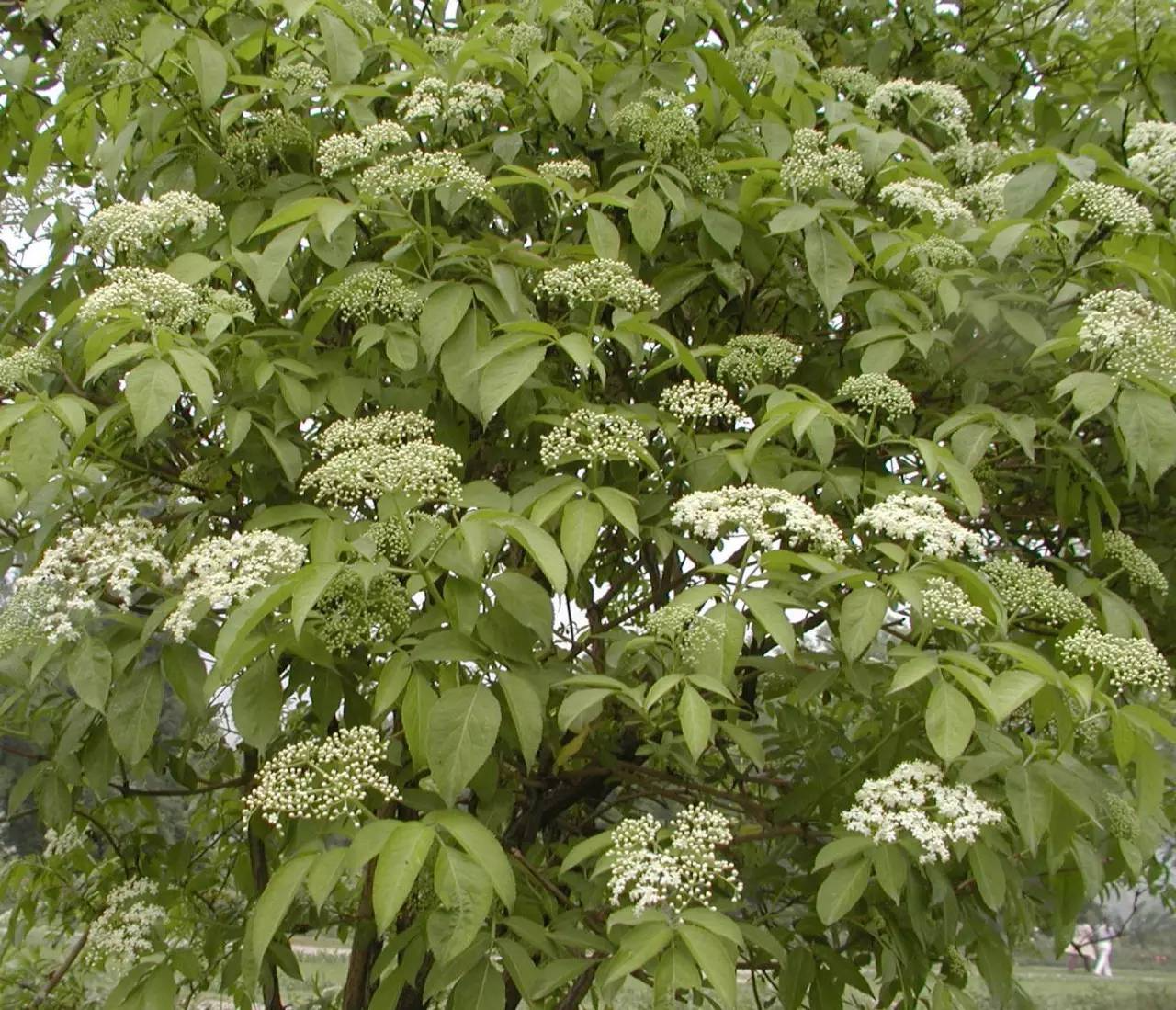
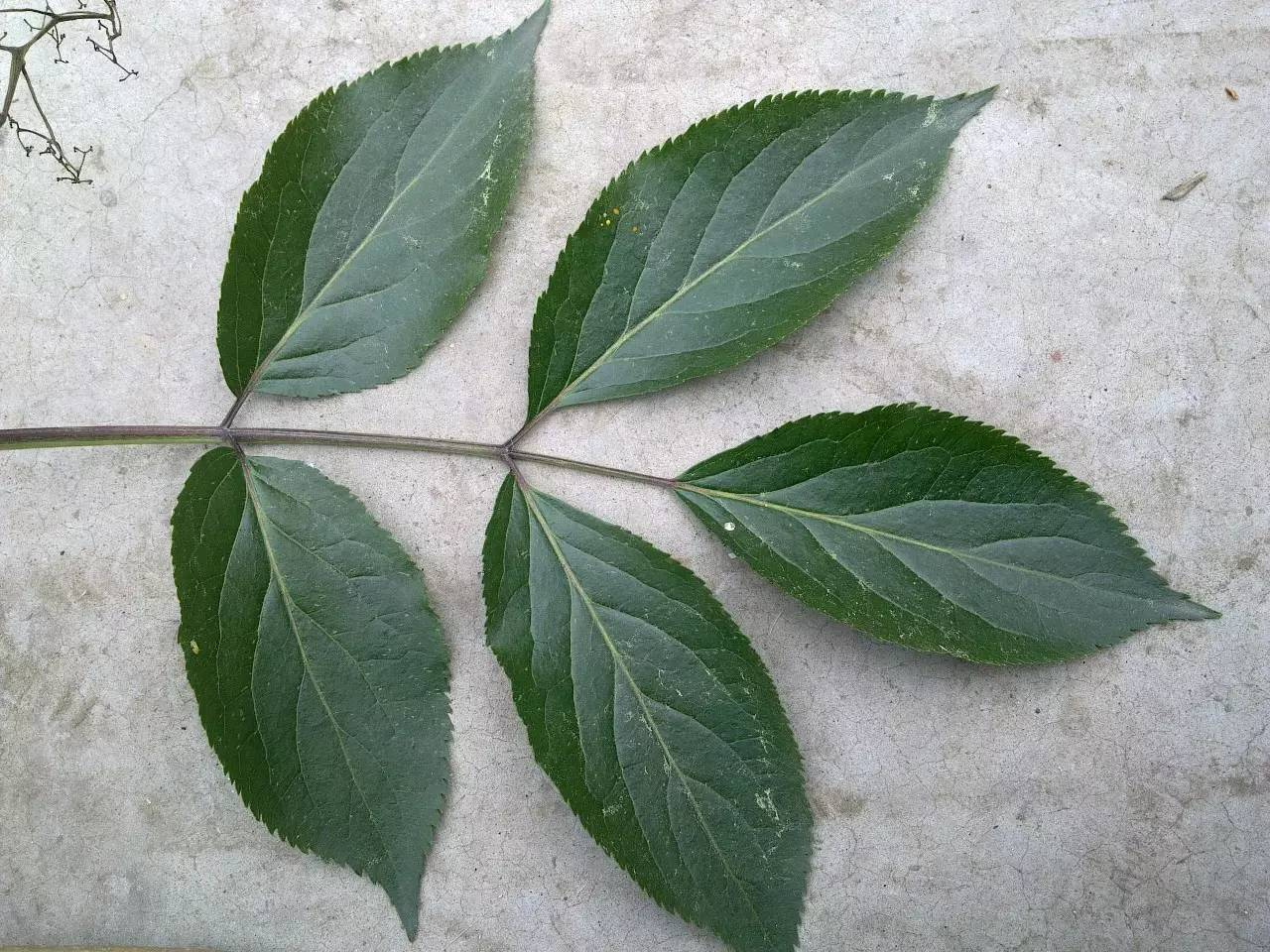
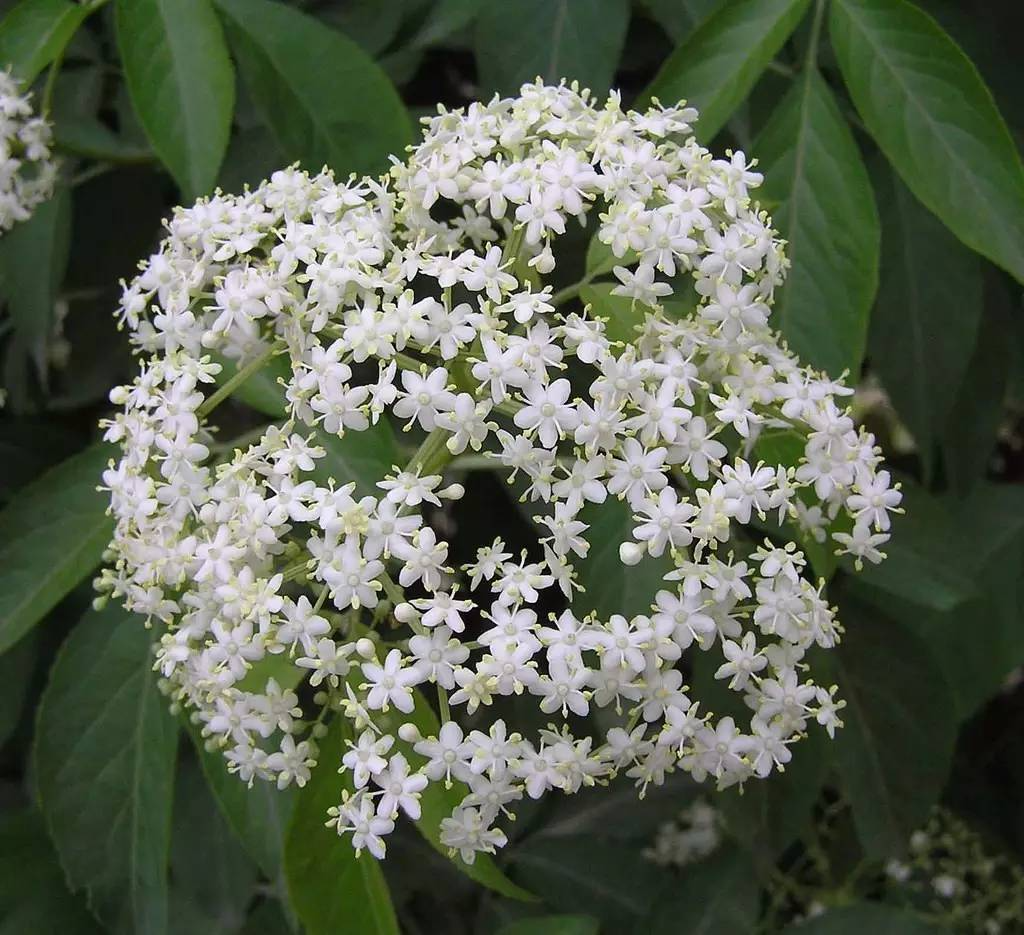
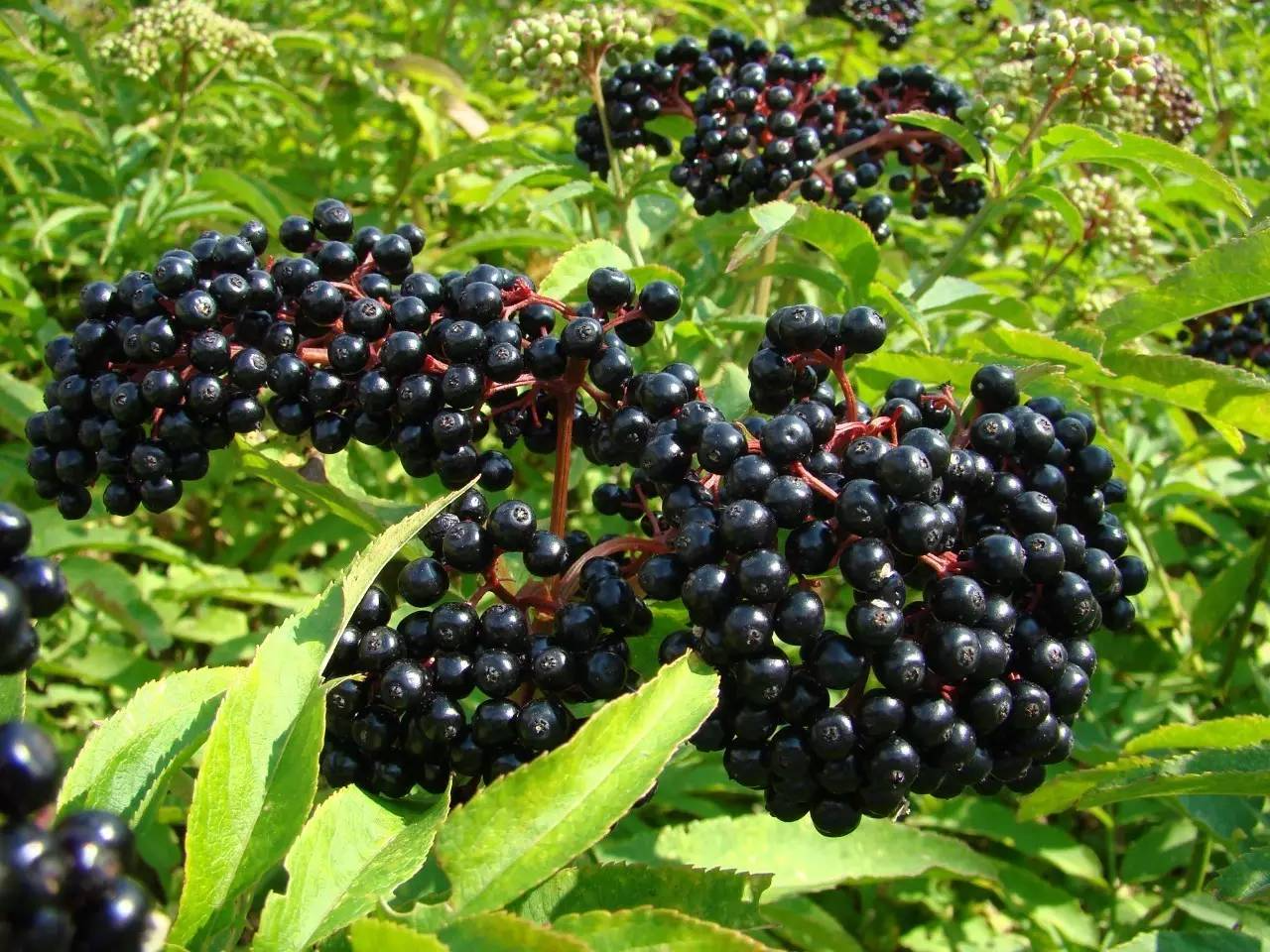
▲7. Elderberry (flowering period has passed, fruiting) : Elderberry belongs to the genus Sambucus in the family Caprifoliaceae. Elderberry is regarded as the habitat of souls because it has negative associations with witches and bad luck. In the Middle Ages, it was unlucky to burn elderberry or bring it into the house. However, properly processed elderberry can have a protective function. For example, the Scottish people are accustomed to collecting elderberry leaves before May 1 and hanging them on the door to keep away bad luck and bad things. Elderberry branches can be made into wands and walking sticks (the old wand in "Harry Potter" is made of elderberry), and standing under elderberry can avoid lightning . Flowering period is April-May, and fruiting period is July-September.
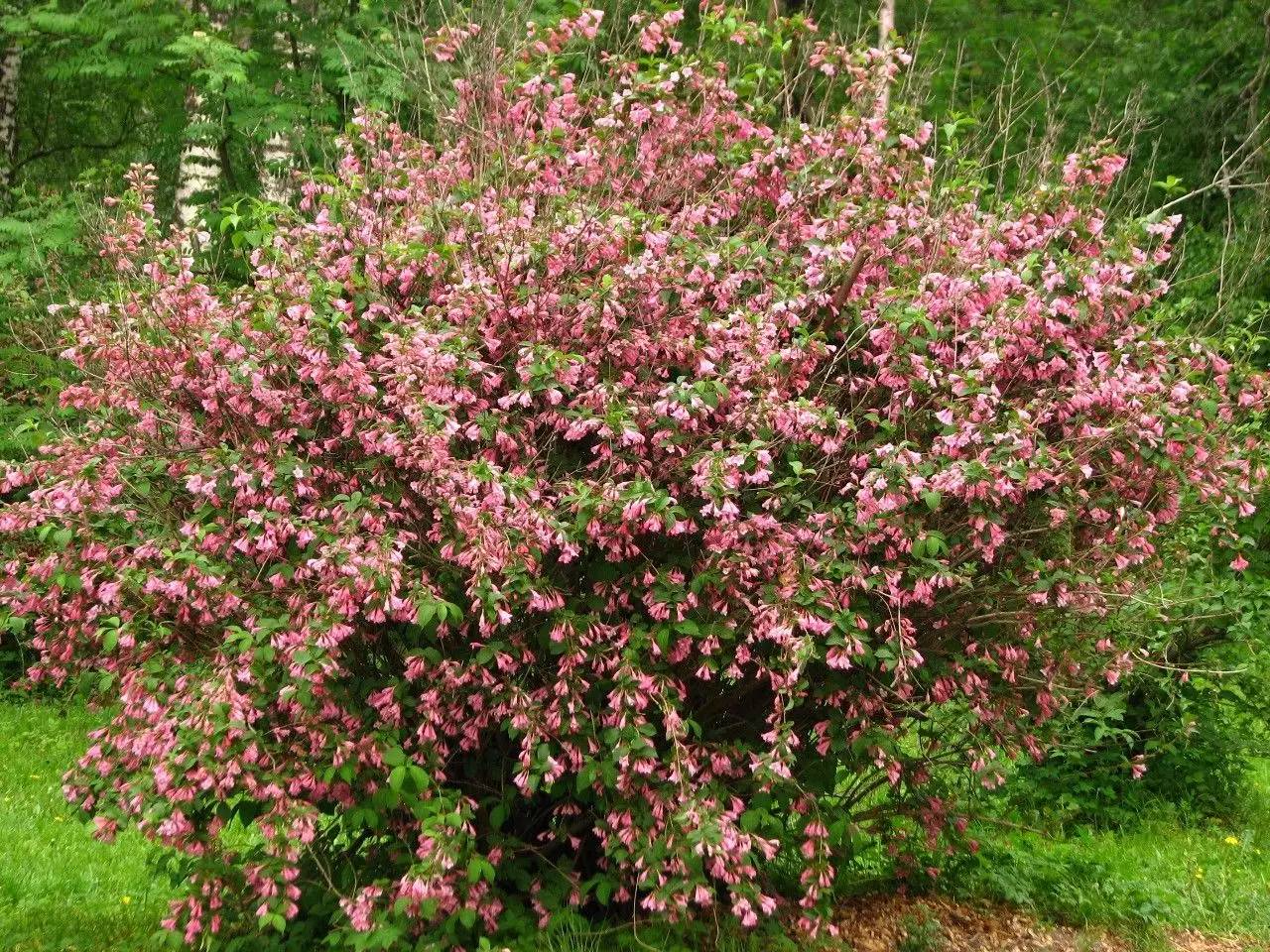
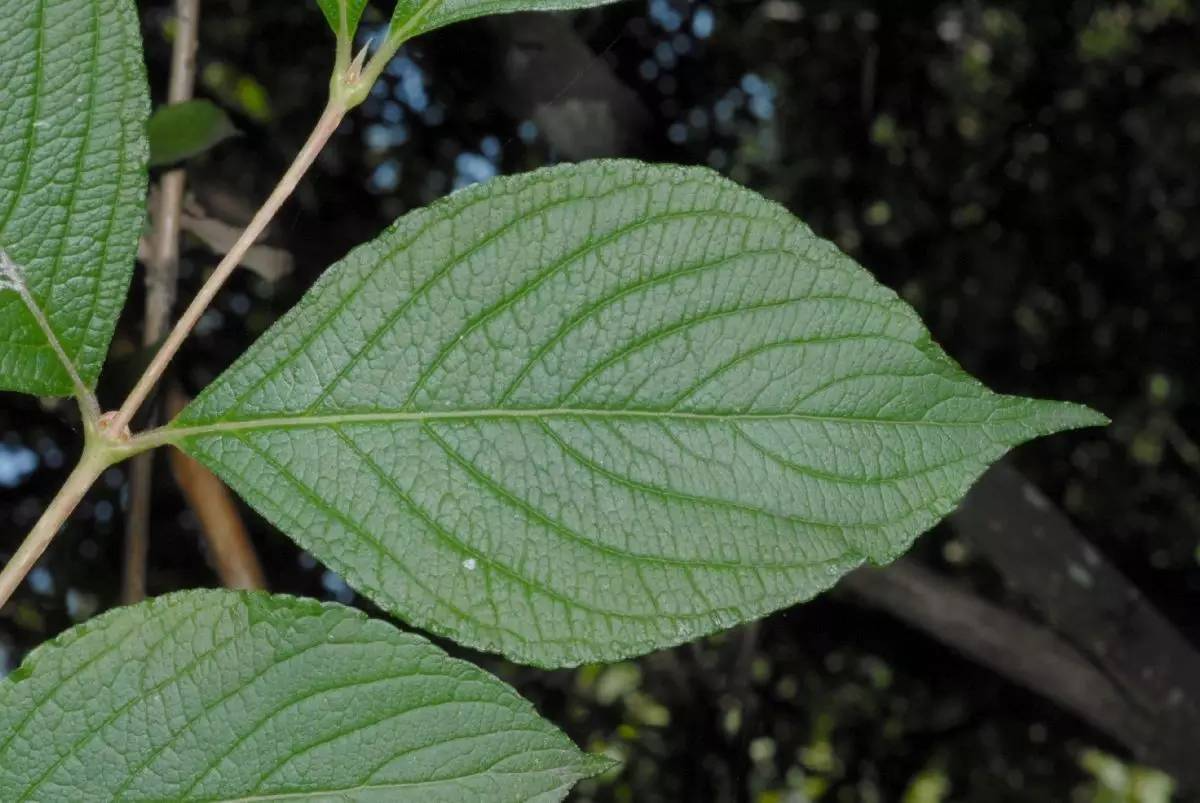
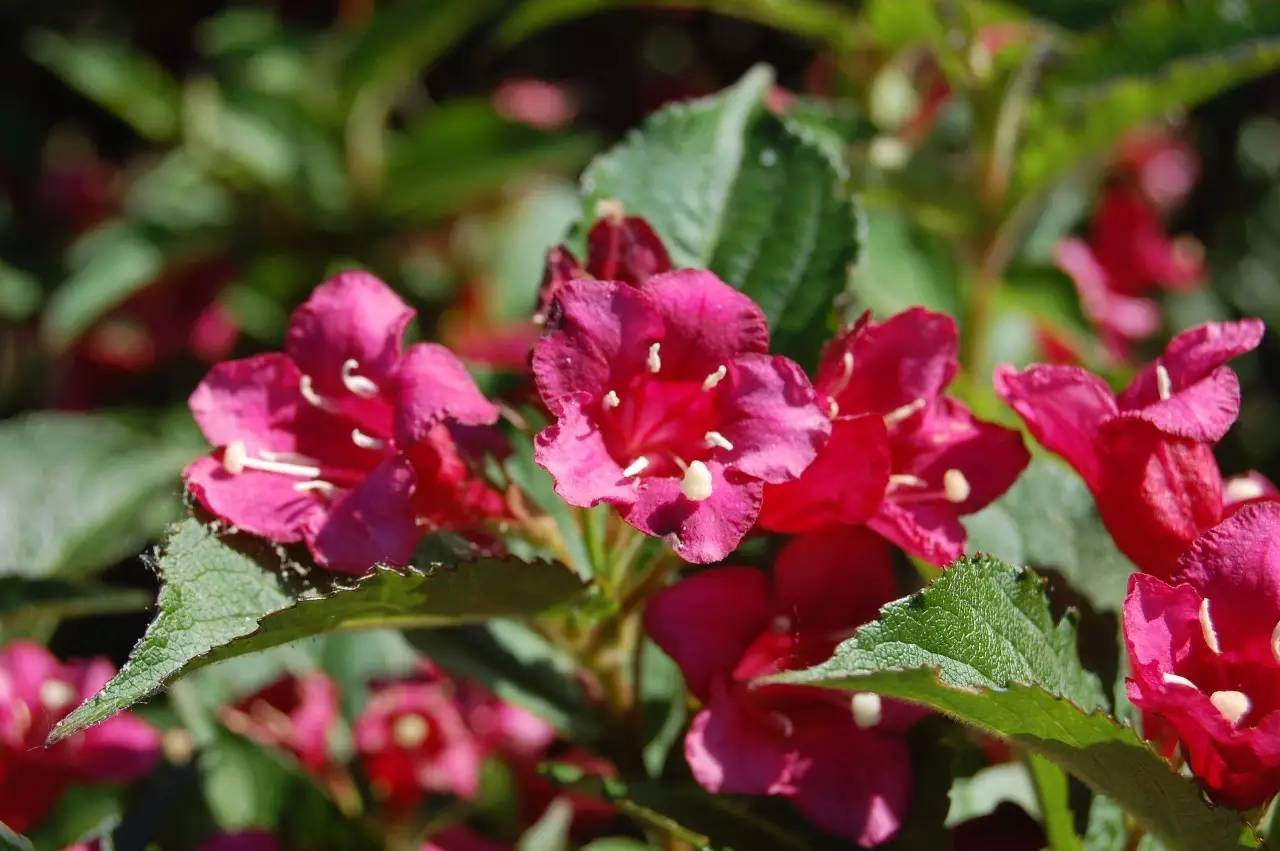
▲8. Red Prince Weigela (in bloom) : Weigela genus of the Caprifoliaceae family, a horticultural variety of Weigela , a fine tree species newly introduced from the United States. The red flowers dotted among the green leaves are very beautiful. It can be planted alone in the lawn of the courtyard, or in clusters on the roadside, or used as a color block. The tree shape is particularly beautiful. It is a replacement variety of Weigela and has a high ornamental value.
This variety has a long flowering period, and the flowers bloom from May to October every year until the frost falls. As long as new leaves appear, new stamens will appear. The flowering period is from May to October.
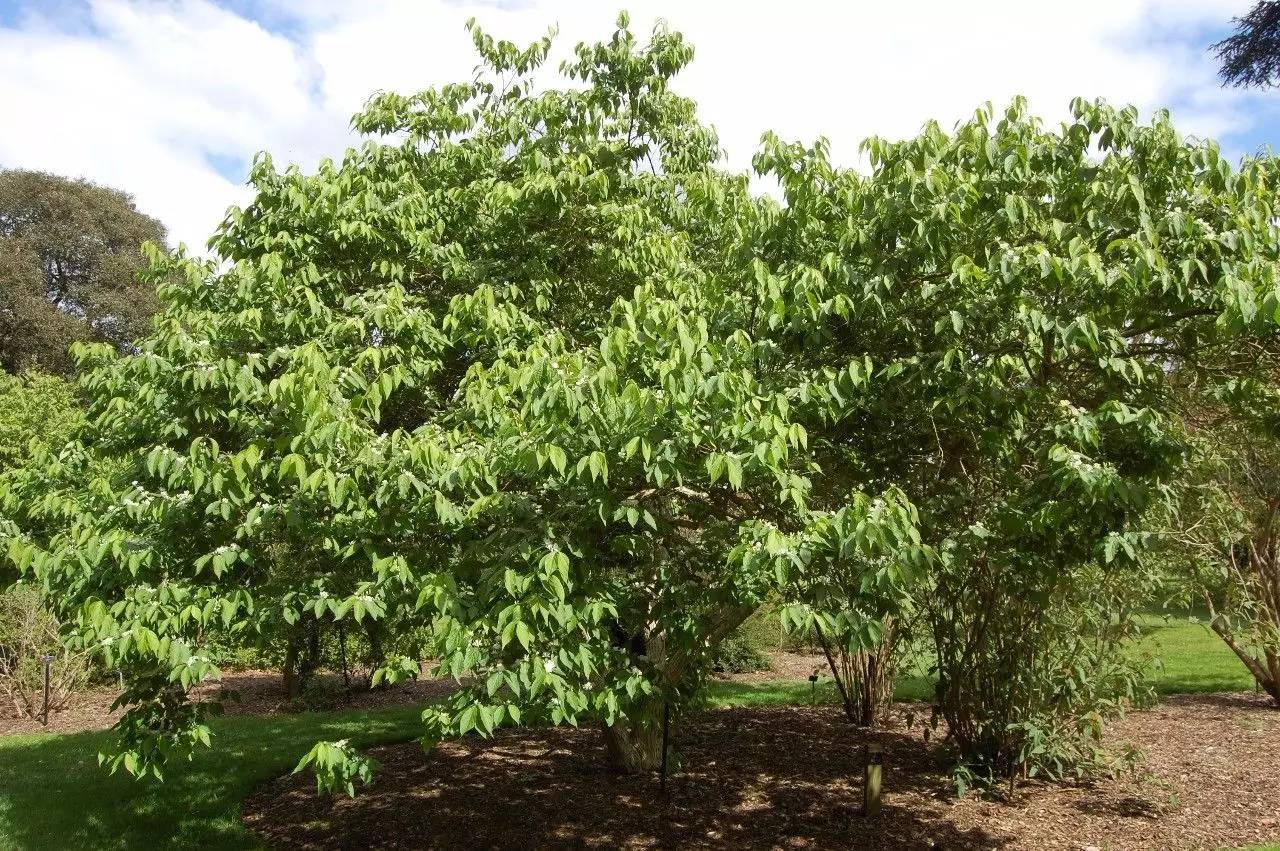

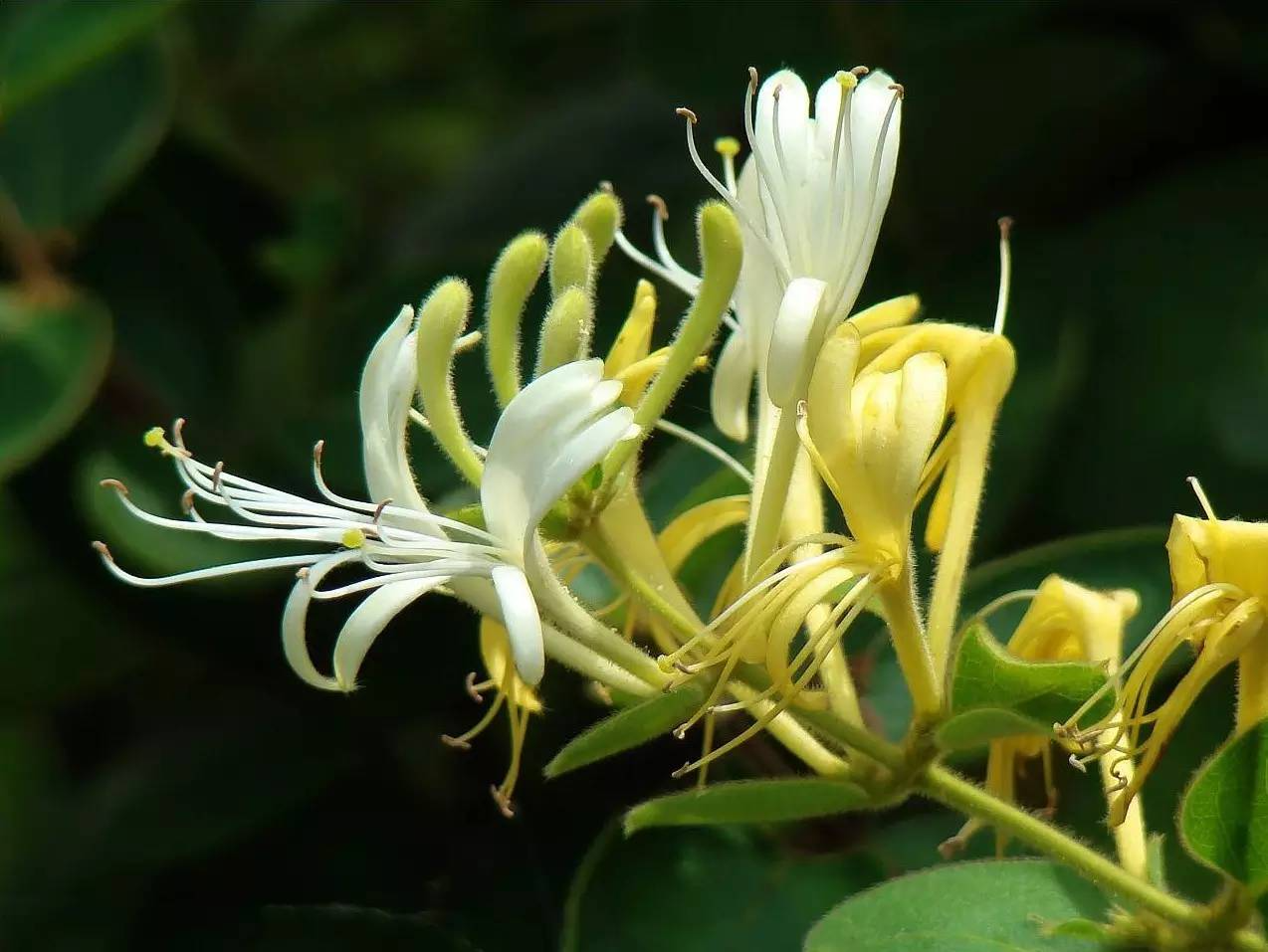
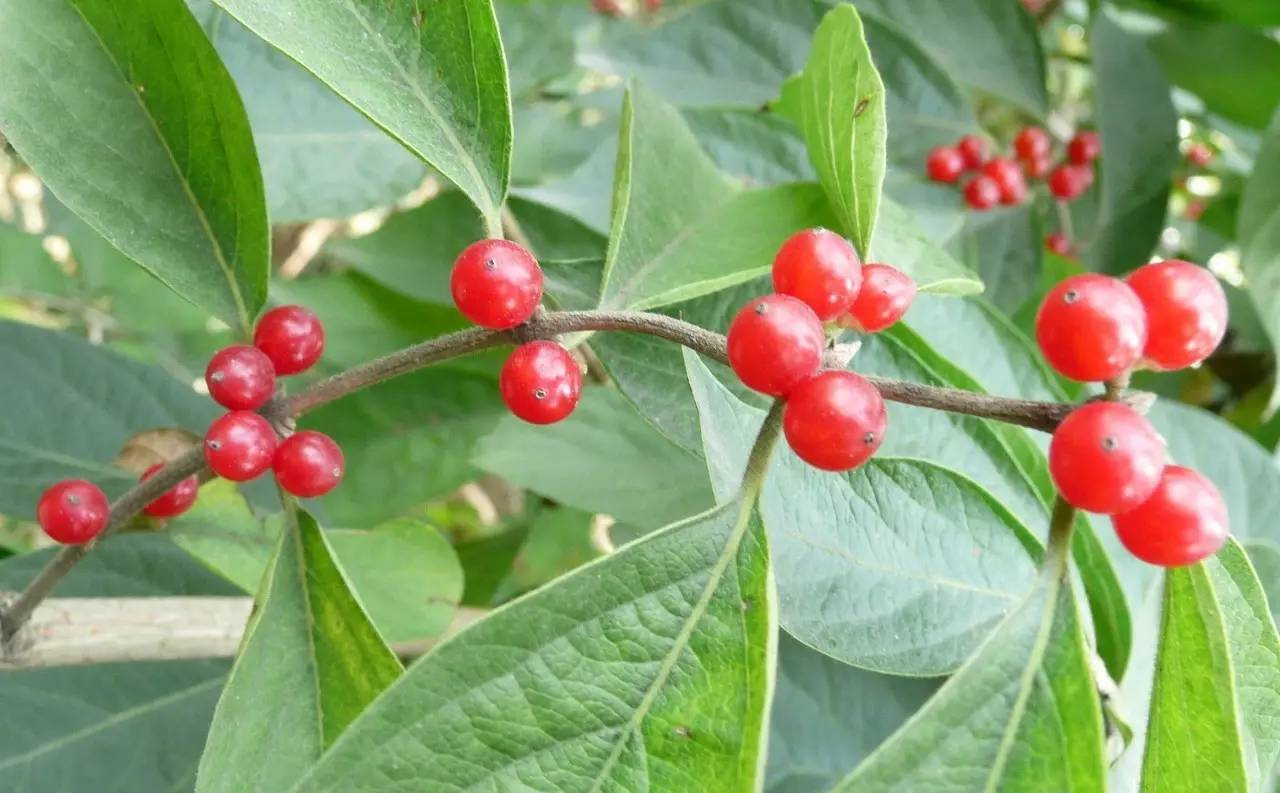
▲9. Honeysuckle (flowering period has passed, fruiting) : Honeysuckle of the Caprifoliaceae family, also known as honeysuckle, blooms in late spring and early summer, with yellow and white mixed, fragrant; in autumn, the branches are full of red fruits, which are crystal clear, bright and eye-catching, and the fruiting period is long, and it does not wither in winter, which can complement the snow. It is a flower tree with beautiful leaves, flowers and fruits. It is suitable for gardens, watersides and lawns. The flowering period is May-June, and the fruit ripening period is August-October.
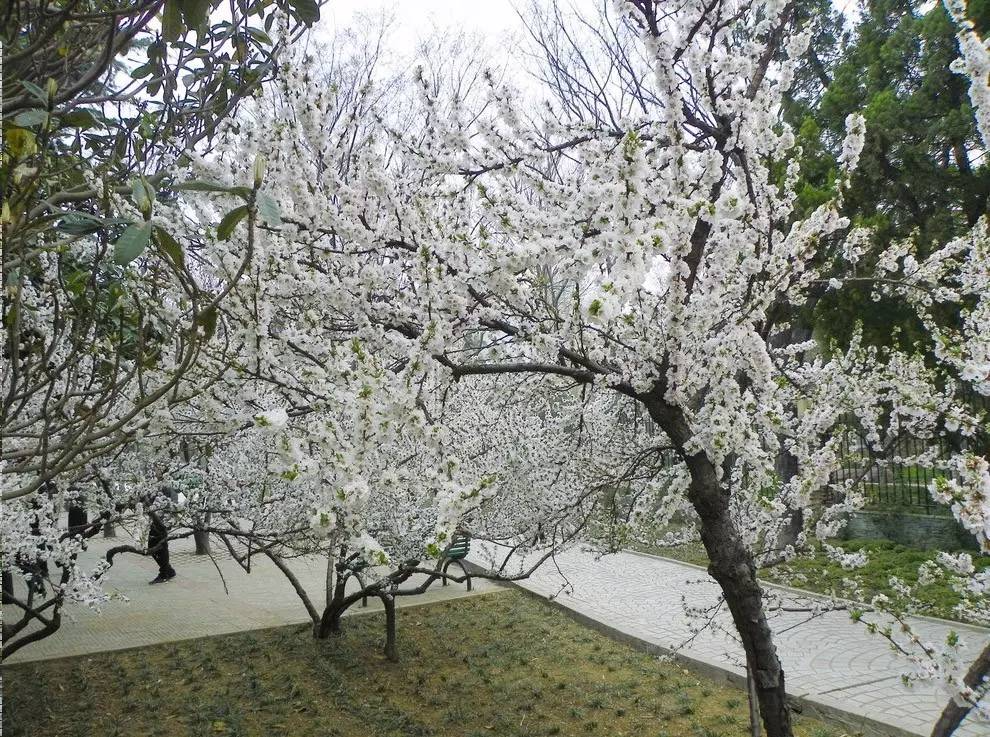
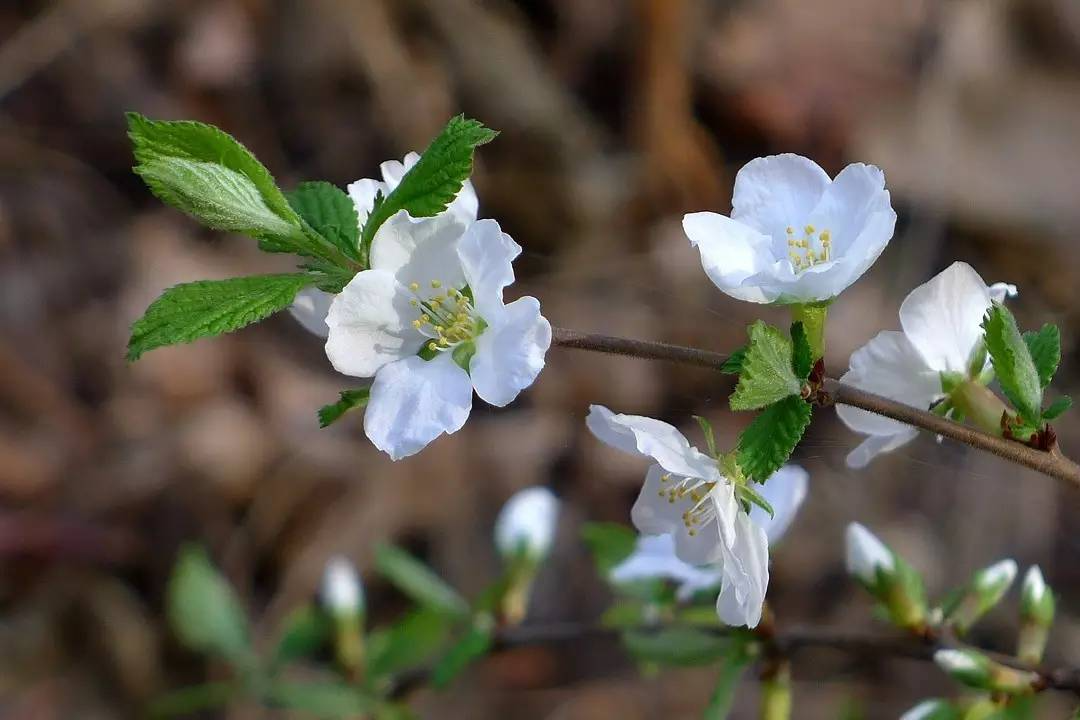
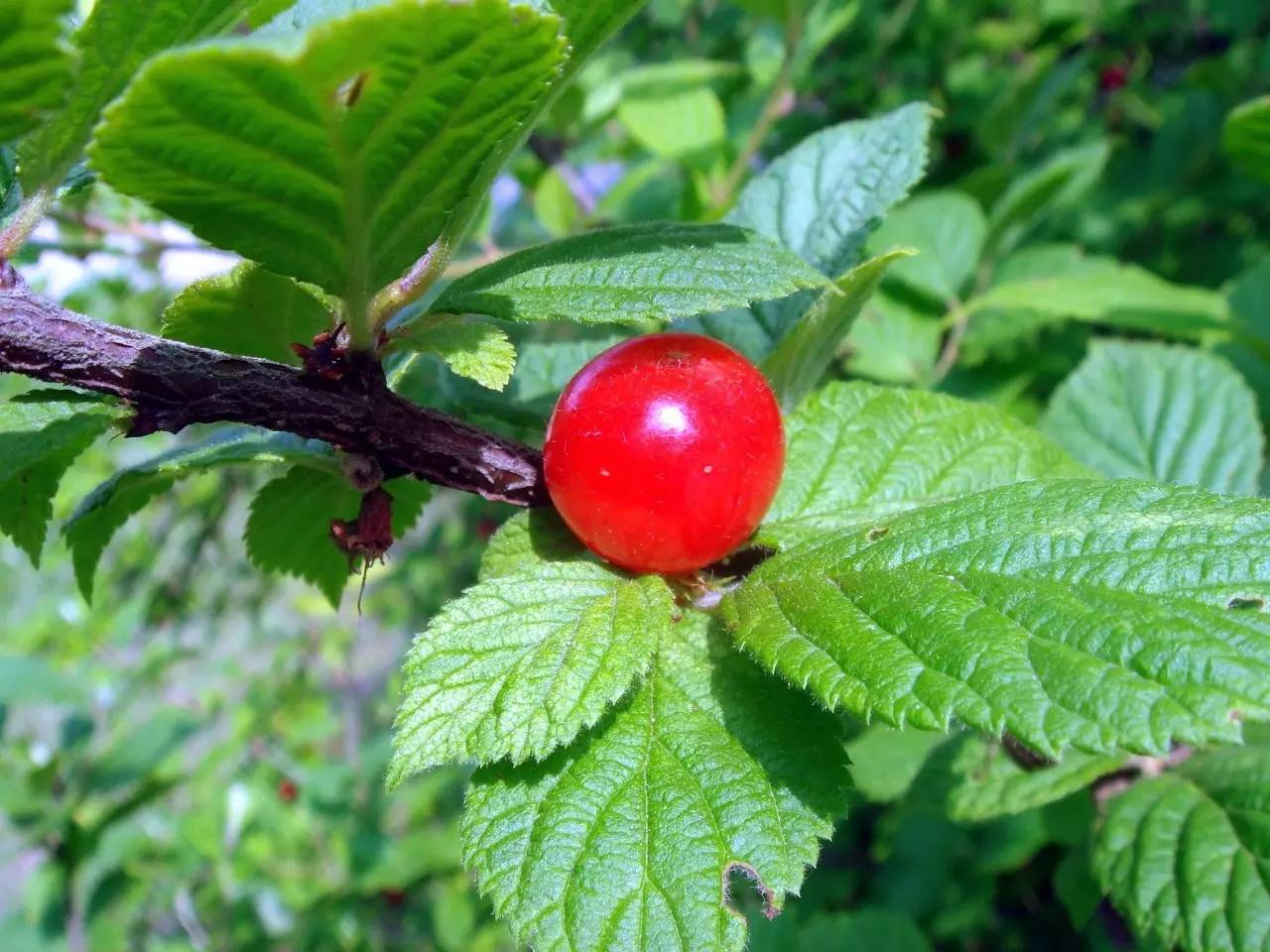

▲10. Hairy cherry (flowering period has passed, fruiting period has passed) : Rosaceae, Prunus genus, deciduous shrub, ornamental hairy cherry varieties have beautiful tree shape, petite flowers, bright fruits, flowers, leaves, fruits, and shapes can all be appreciated. It is a garden ornamental plant that combines flower viewing, fruit viewing, and shape viewing. Create a rich, colorful, lively natural garden landscape. The fruit is slightly sweet and sour and can be eaten and made into wine. The flowering period is April, and the fruit is from May to June.
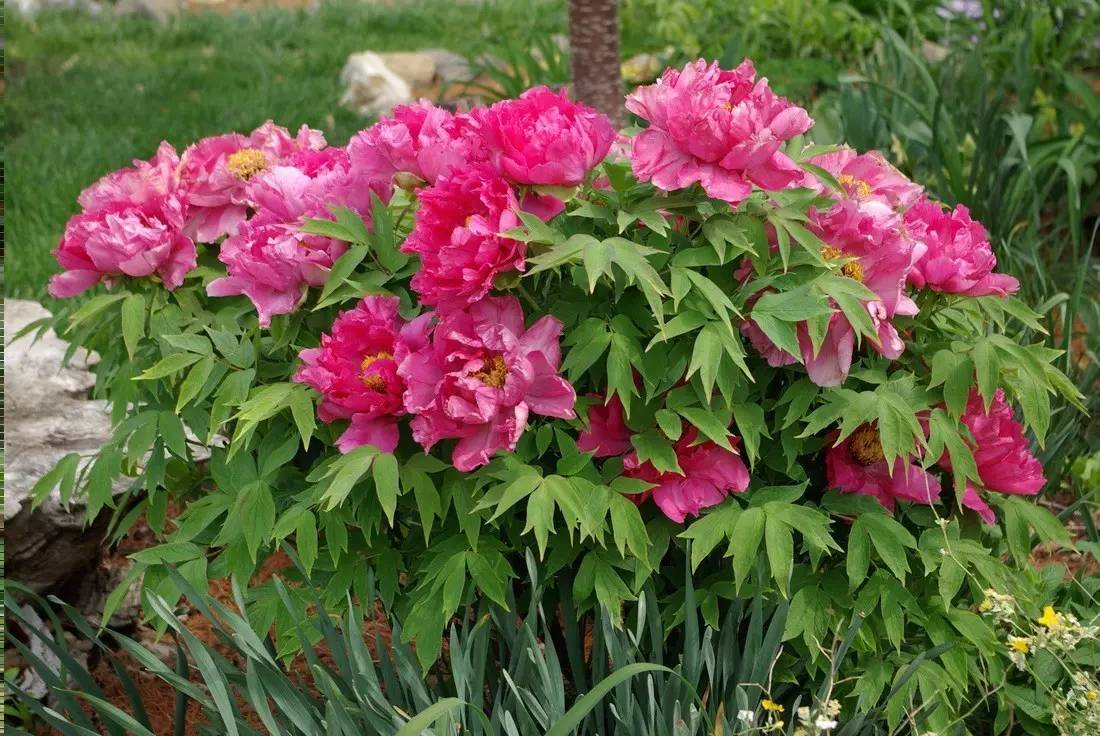
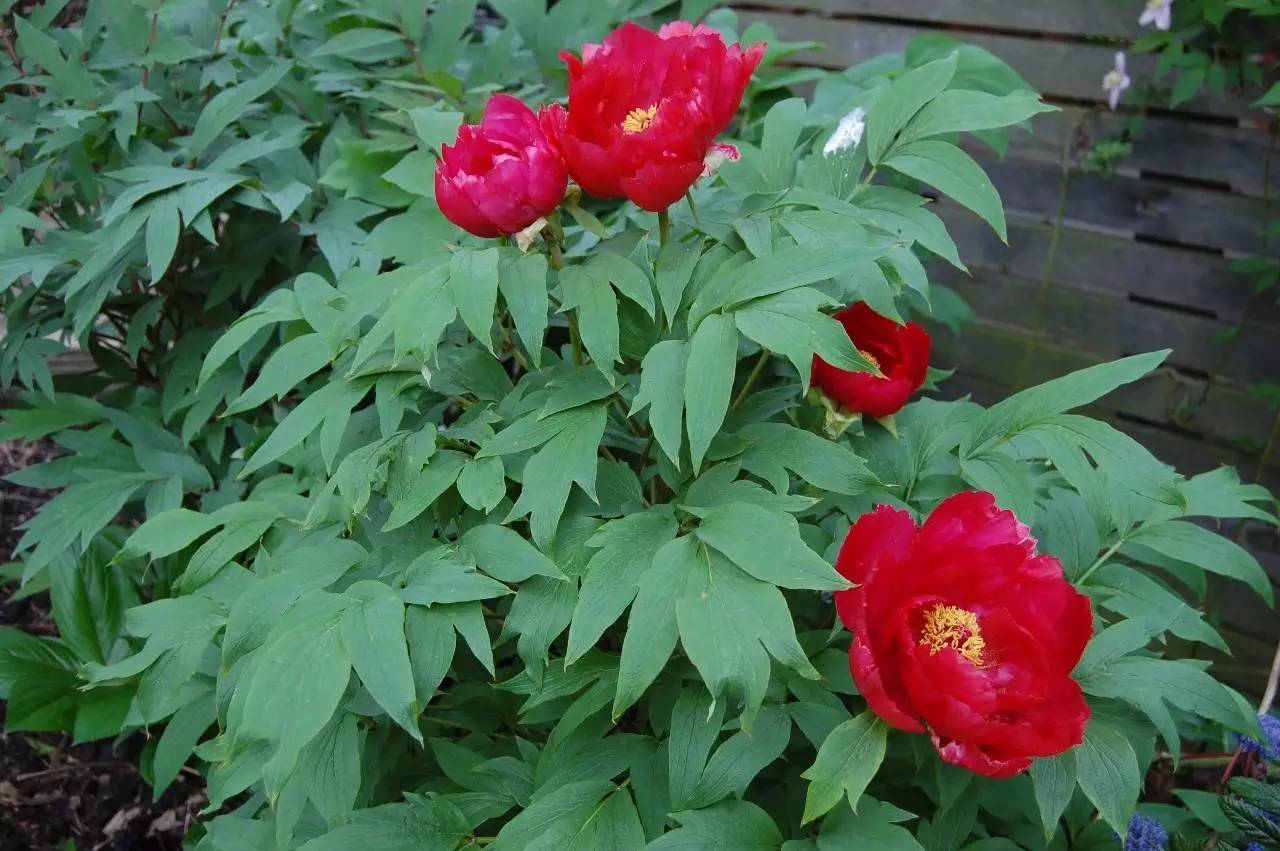
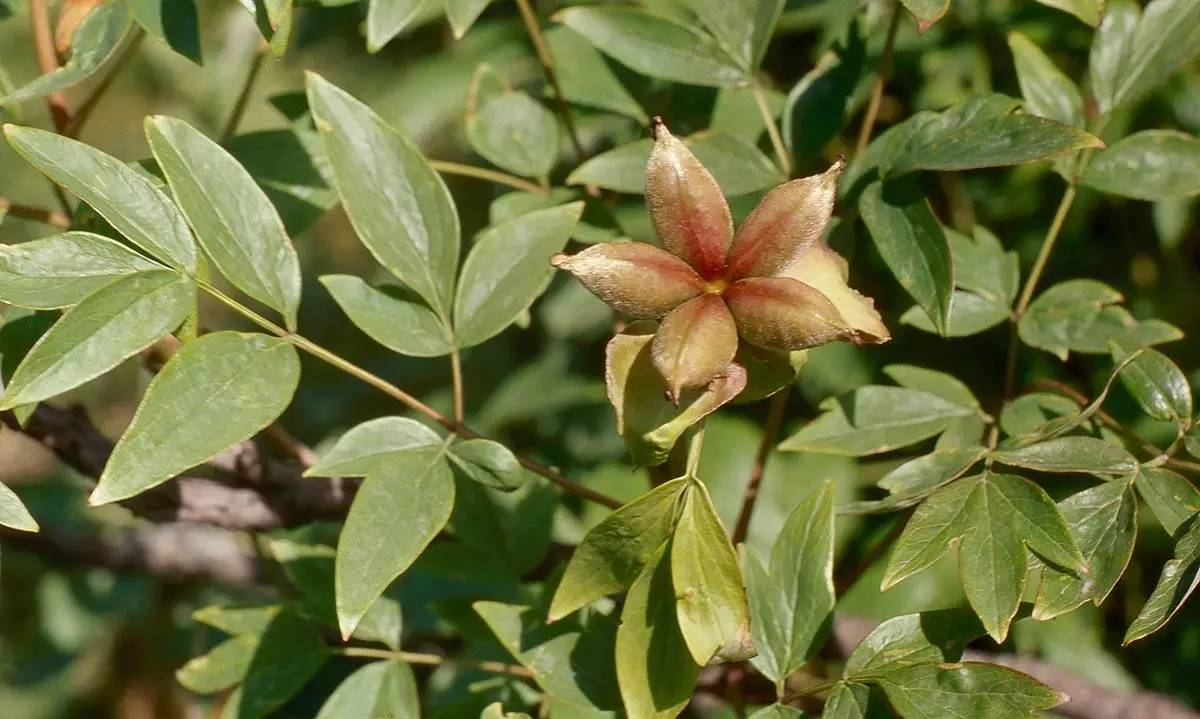
▲11. Peony (flowering period has passed, fruiting period has passed) : Peony genus of Paeoniaceae, with bright colors, jade-like fragrance, elegant and magnificent, known as the "king of flowers". The flowers are large and fragrant, so it is also known as "national beauty and natural fragrance". Flowering period is March-April, fruiting period is June.
This unique woody precious flower is regarded as the national flower. It has a history of thousands of years of natural growth and more than 1,500 years of artificial cultivation. It is widely cultivated in China and has long been introduced to all parts of the world.

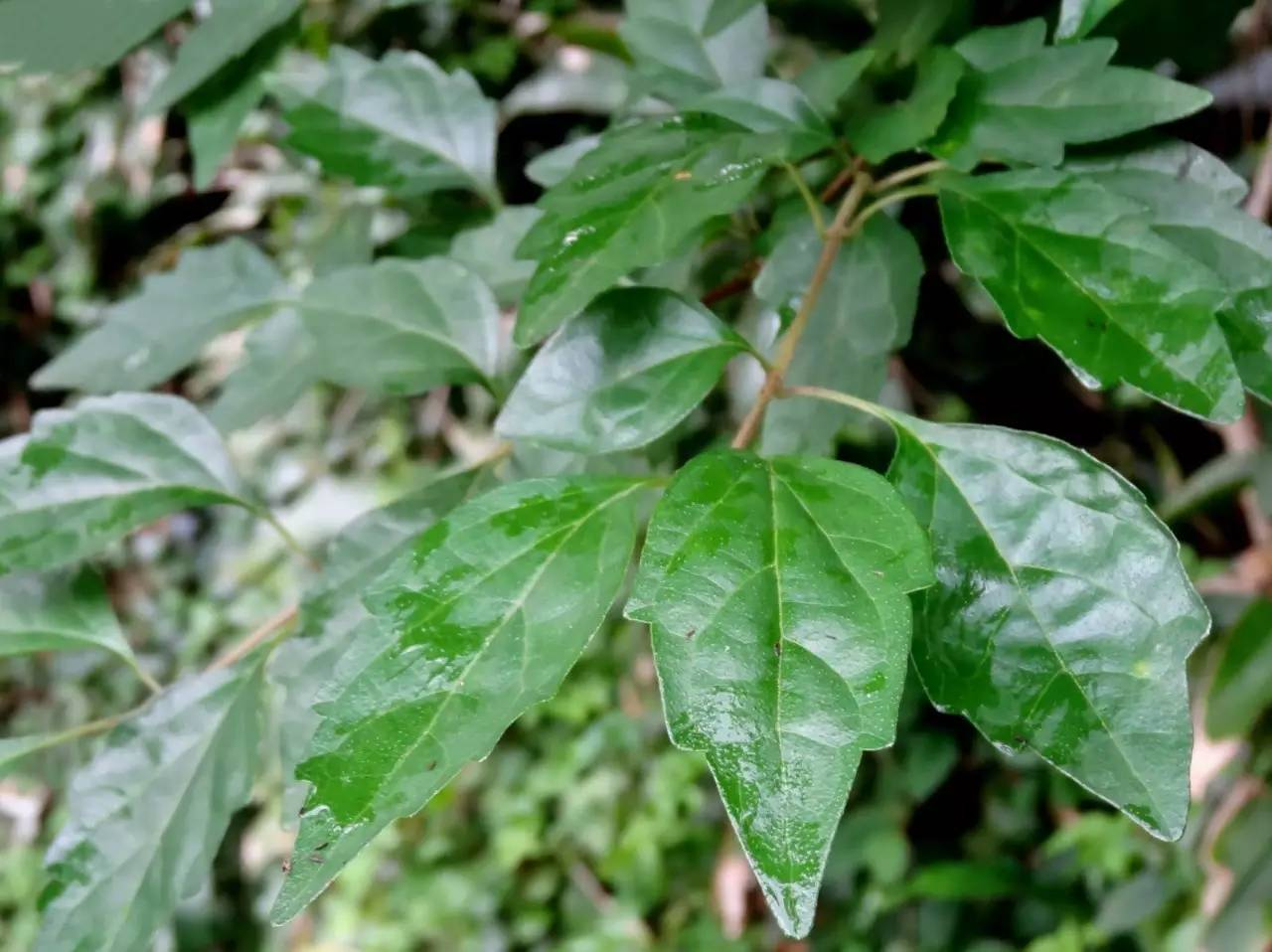
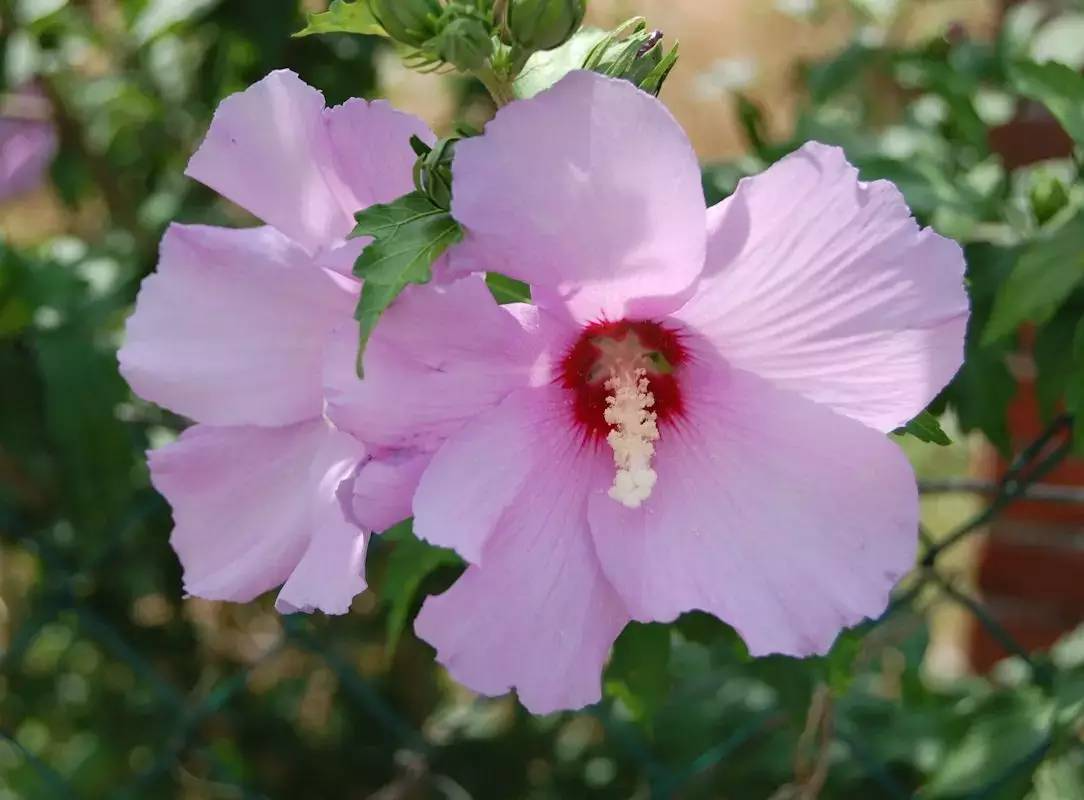
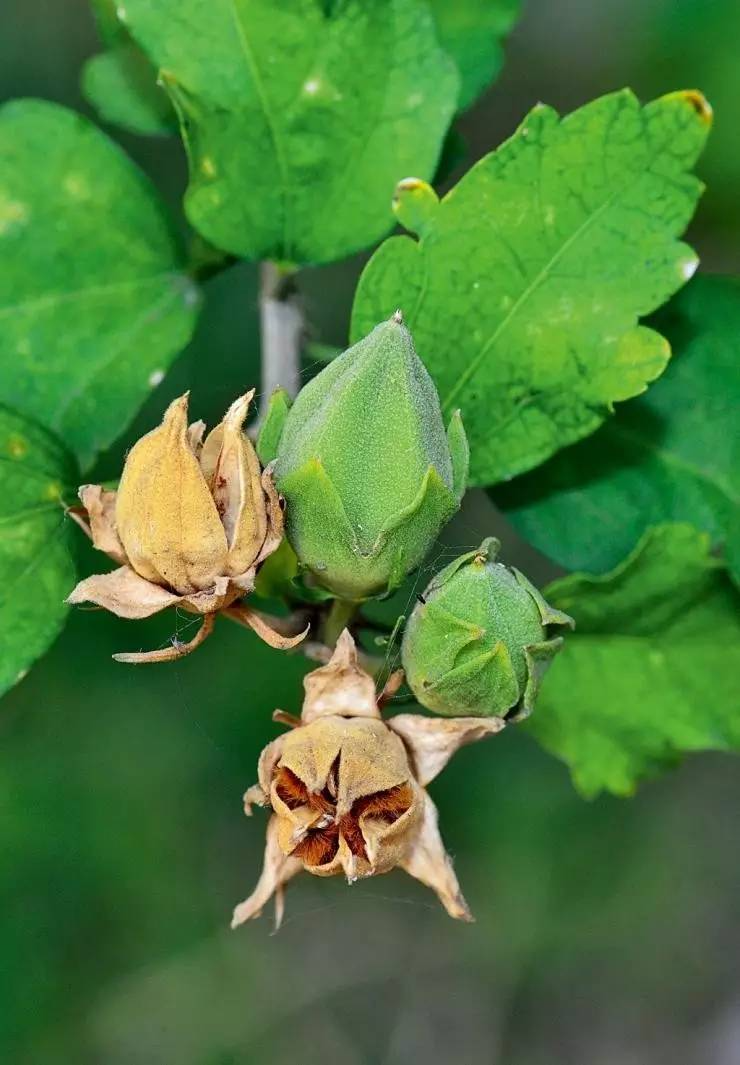
▲12. Hibiscus (in bloom) : Malvaceae, genus Hibiscus, deciduous shrub, hibiscus is an important flowering shrub in summer and autumn. It is mostly used as flower hedges and green hedges in the south; in the north, it is used as a garden embellishment and indoor potted plant. In the garden, it can be used as a flower hedge or green hedge, either alone or in a cluster. Hibiscus seeds are used as medicine, called "Chaotianzi ". Hibiscus is the national flower of South Korea and Malaysia.
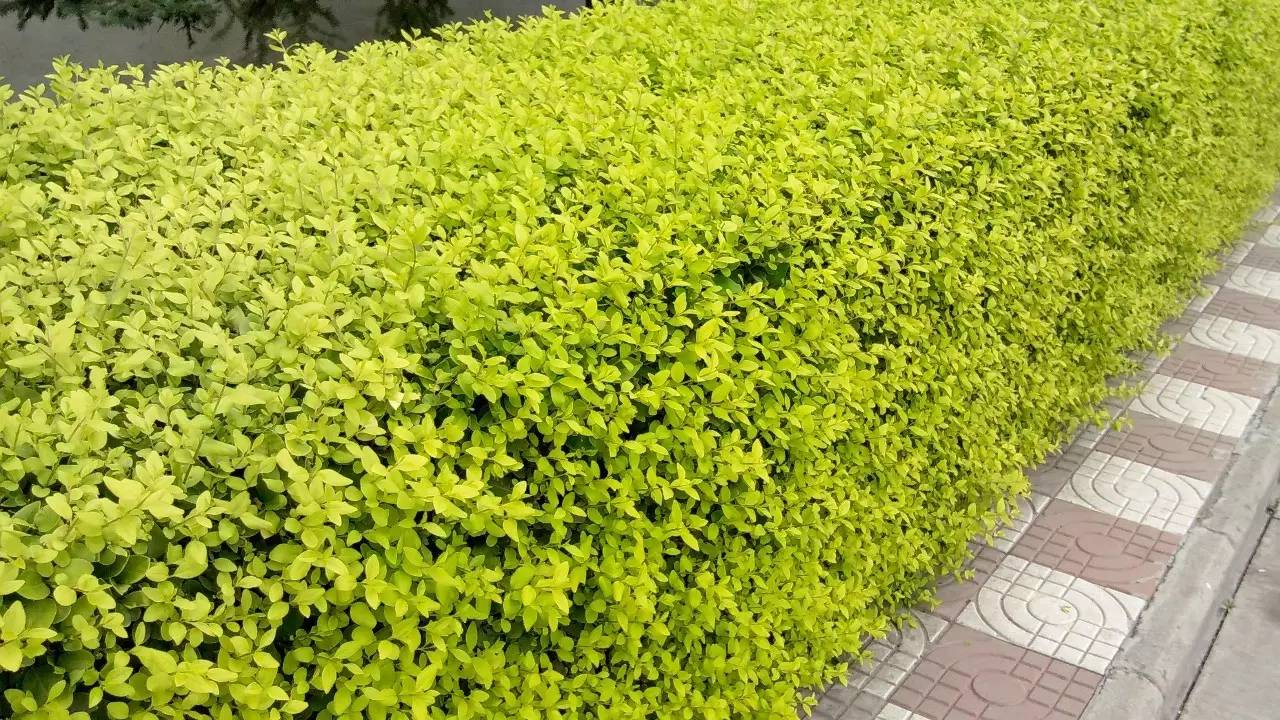
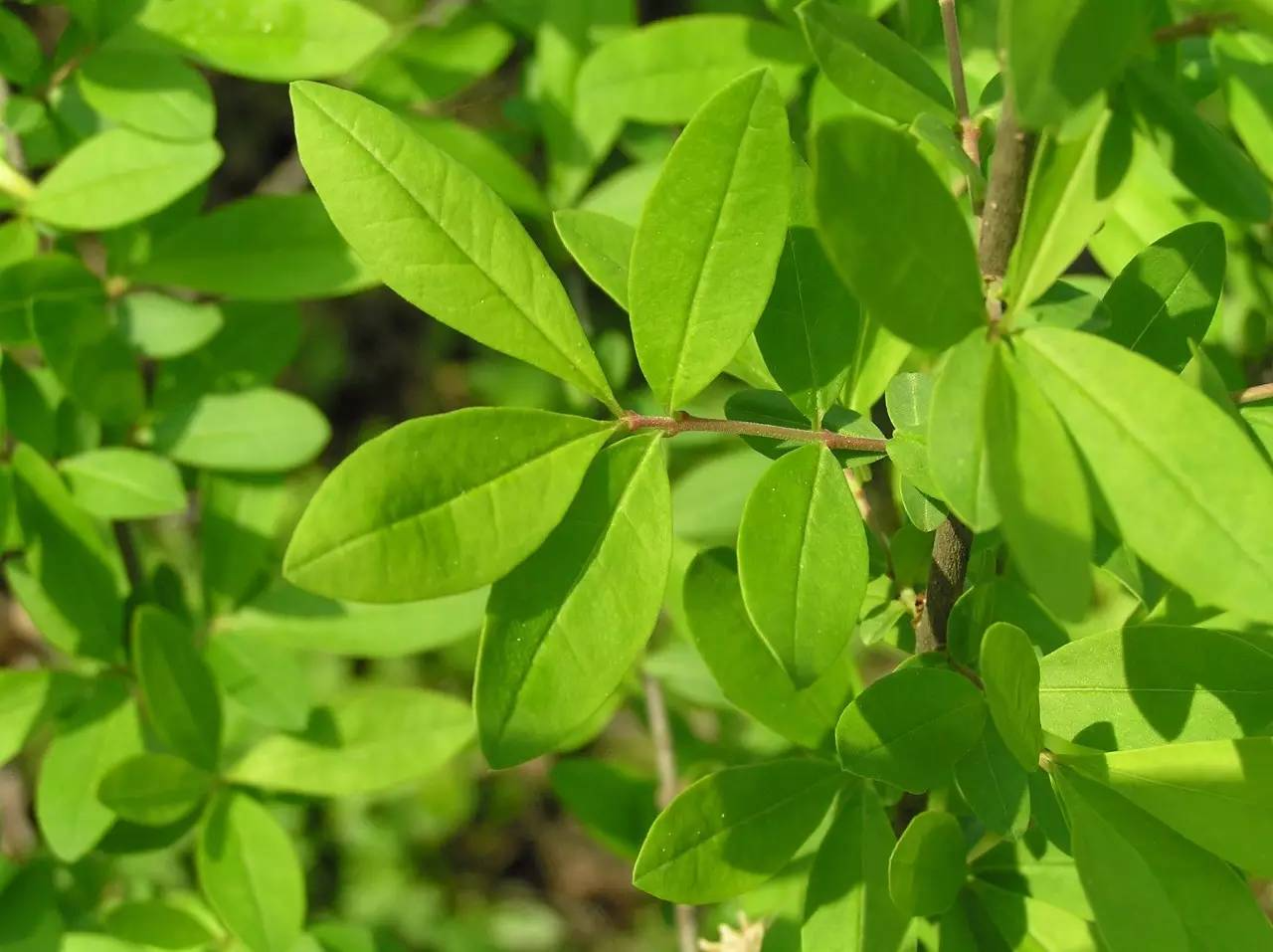
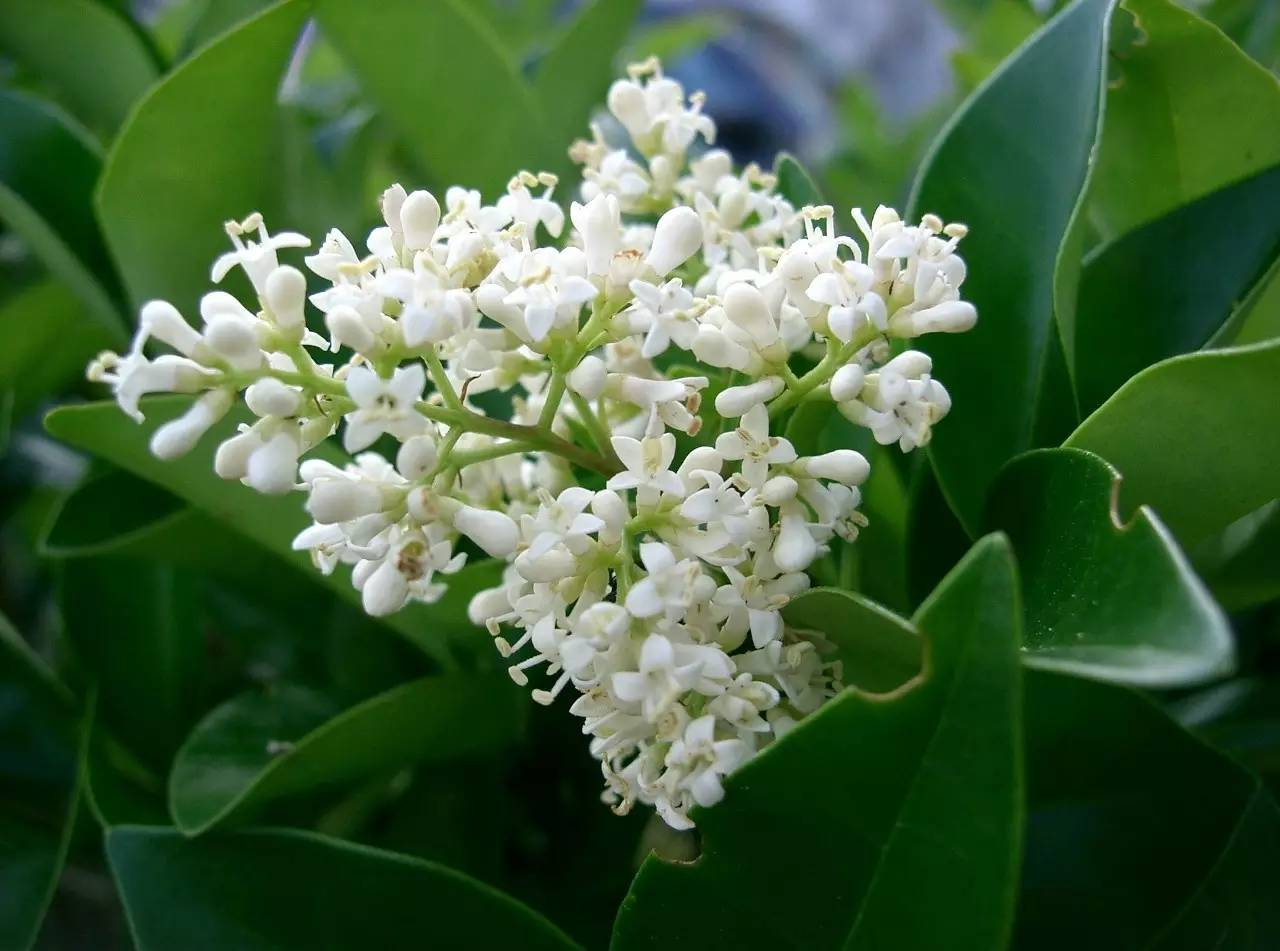
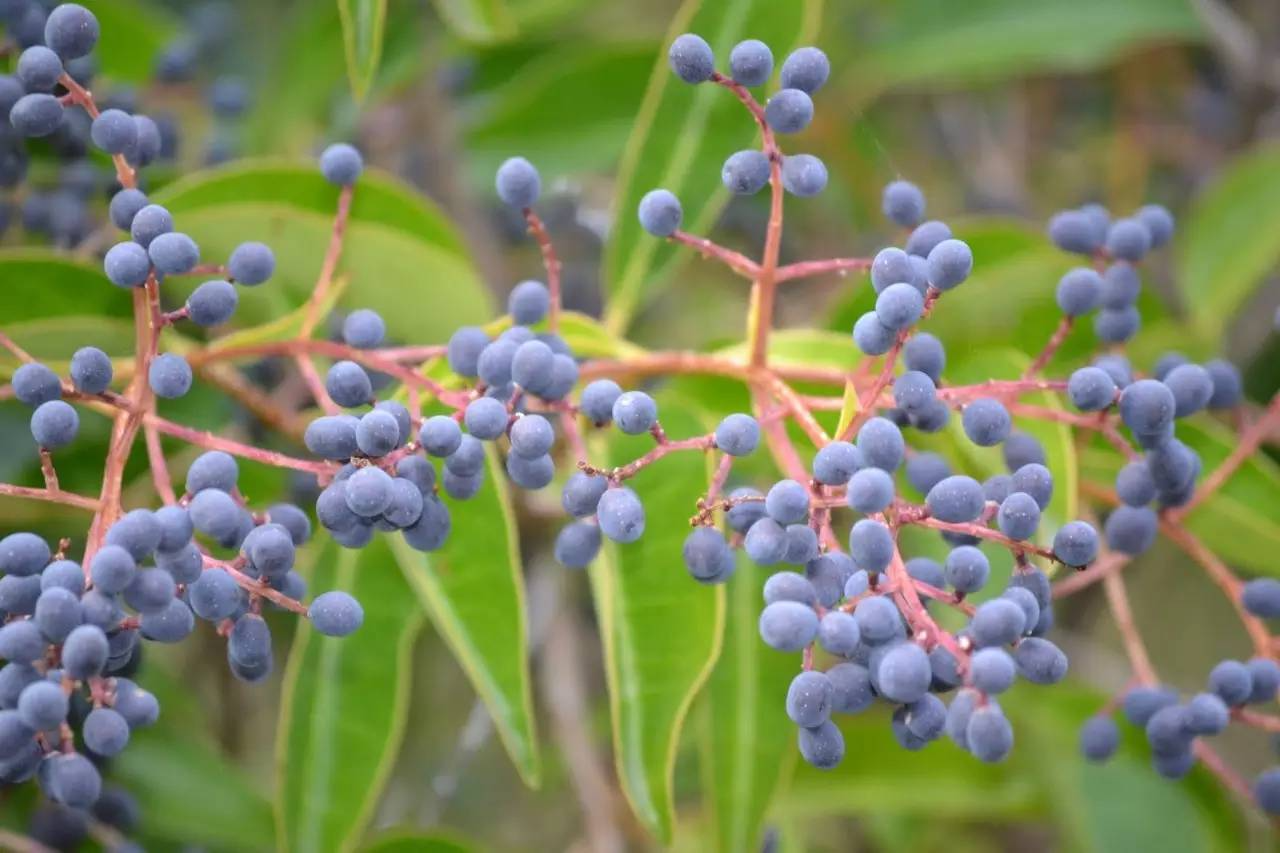
▲13. Ligustrum lucidum (blooming soon, fruiting) : Ligustrum lucidum of Oleaceae, native to China, with luxuriant branches and dense leaves, neat tree shape, and is a common ornamental tree species in gardens. It can be planted alone or in clusters in the courtyard, and is also used as a street tree. Because of its strong adaptability, fast growth and tolerance to pruning, it is also used as a hedge. Flowering period is from May to July, and fruiting period is from July to May of the following year.
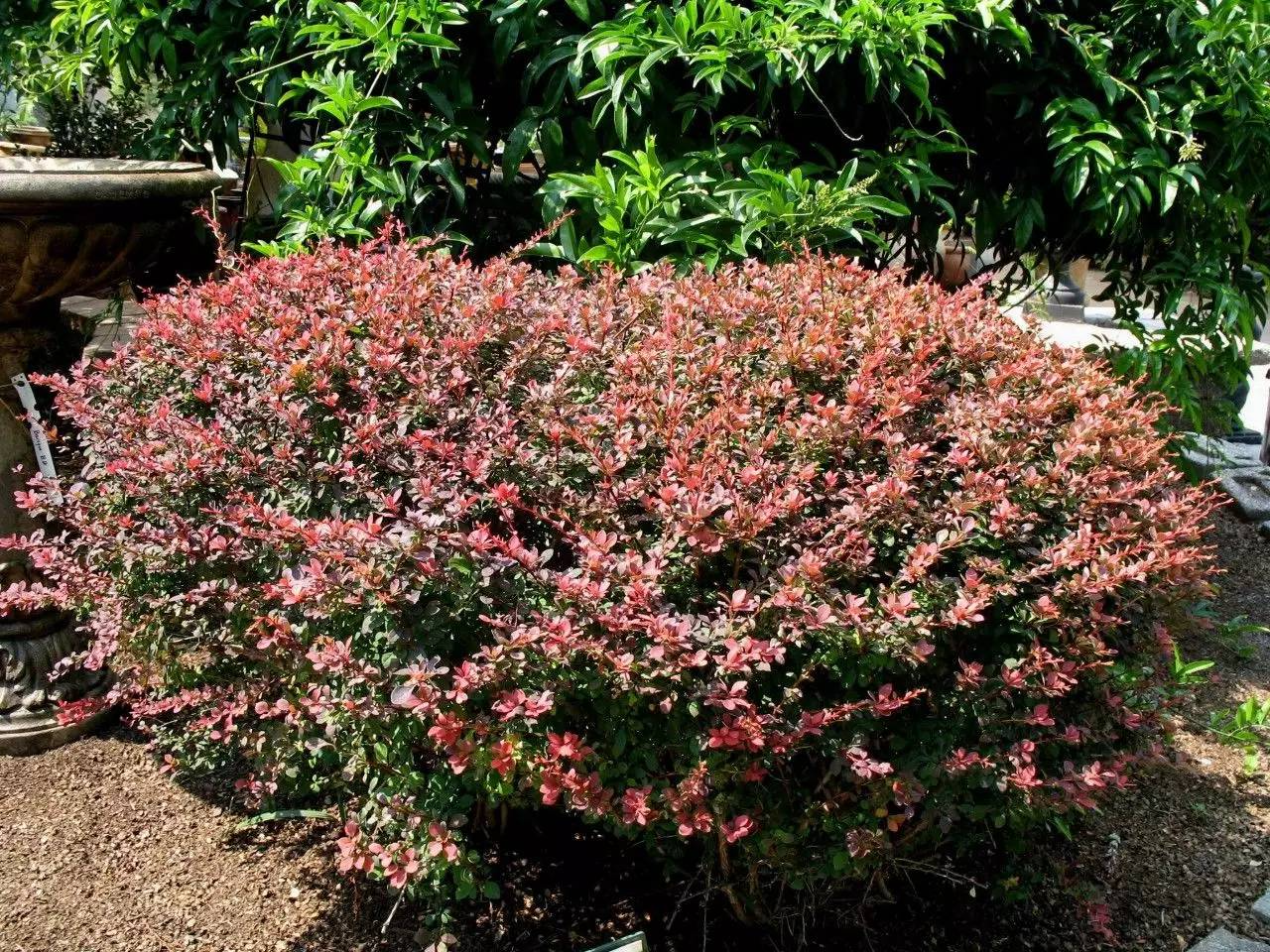
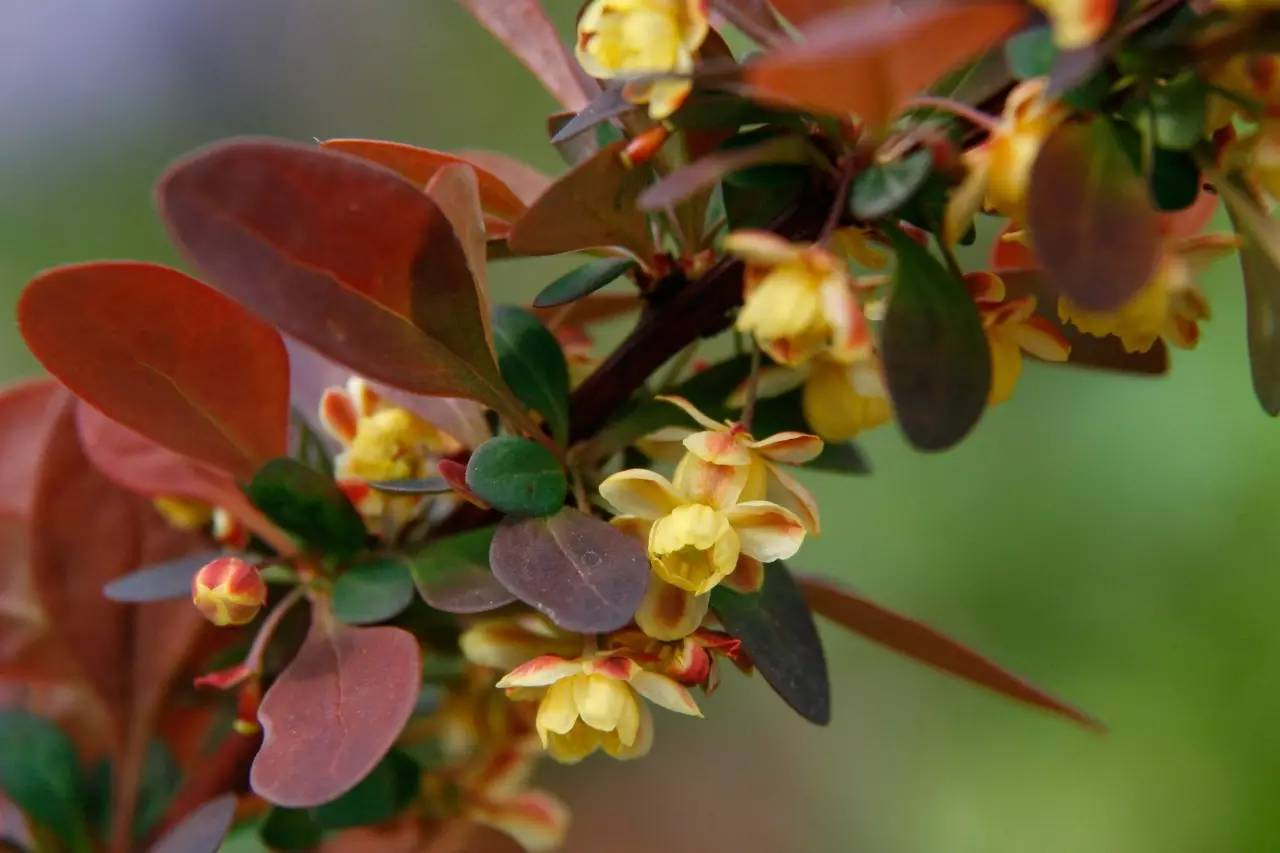
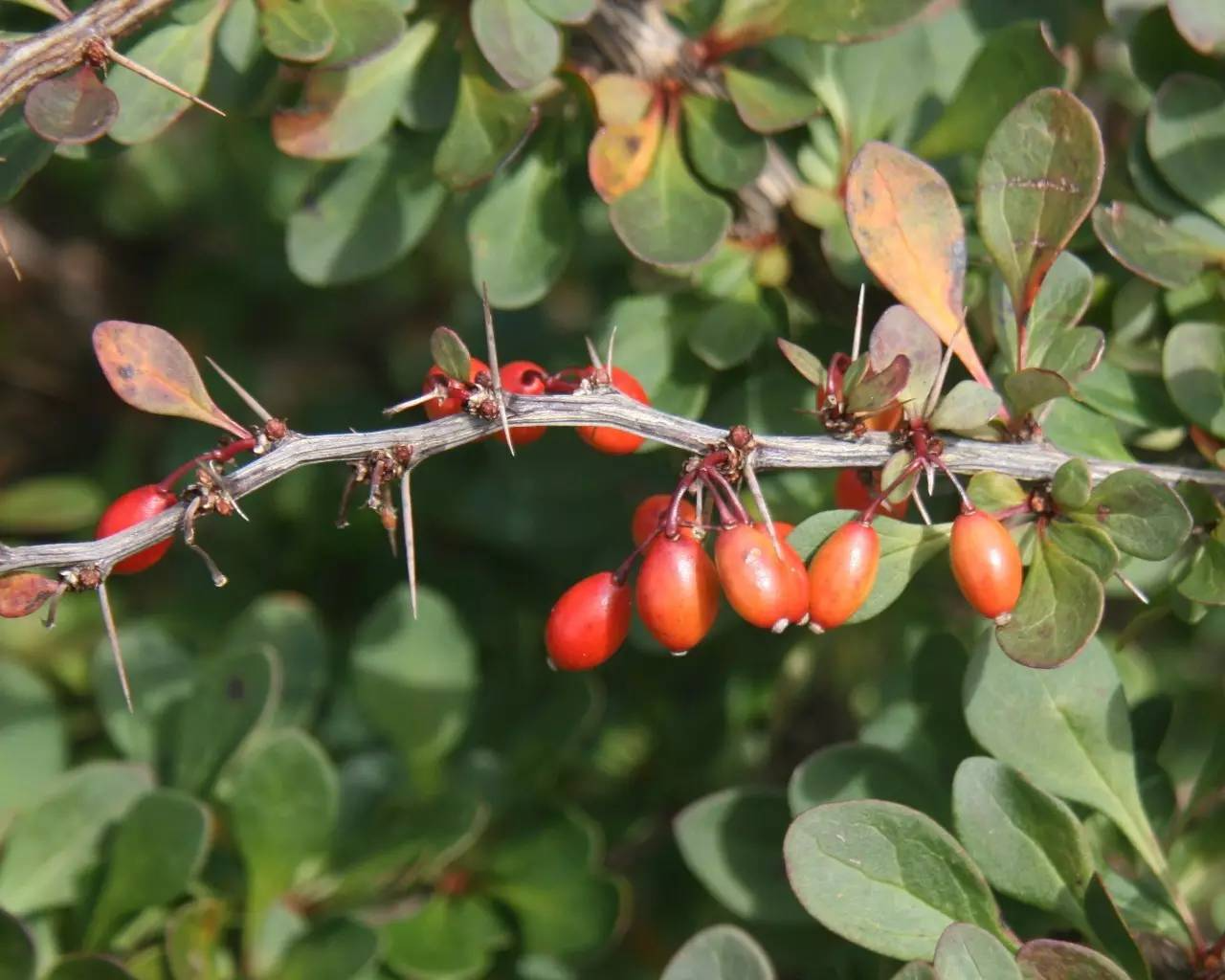
▲14. Purple-leaved Berberis (flowering period has passed, fruiting) : Berberis genus, Berberidaceae, native to. Deciduous shrub, branches are clustered, young branches are purple-red or dark red, old branches are gray-brown or purple-brown. The fruit is oval, and the fruit is bright red and beautiful when ripe. It is often used with evergreen trees in gardens for block color arrangement, and can be used to arrange flower beds and flower mirrors. It is an important tree species for color block combination in garden greening. Flowering period is April to June, and fruiting period is July to October.
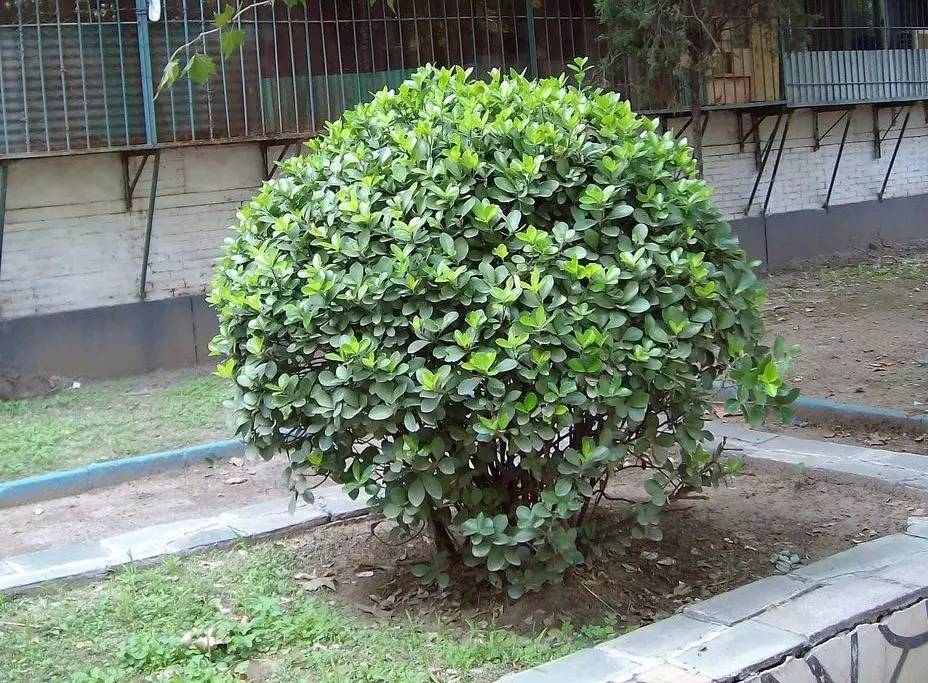
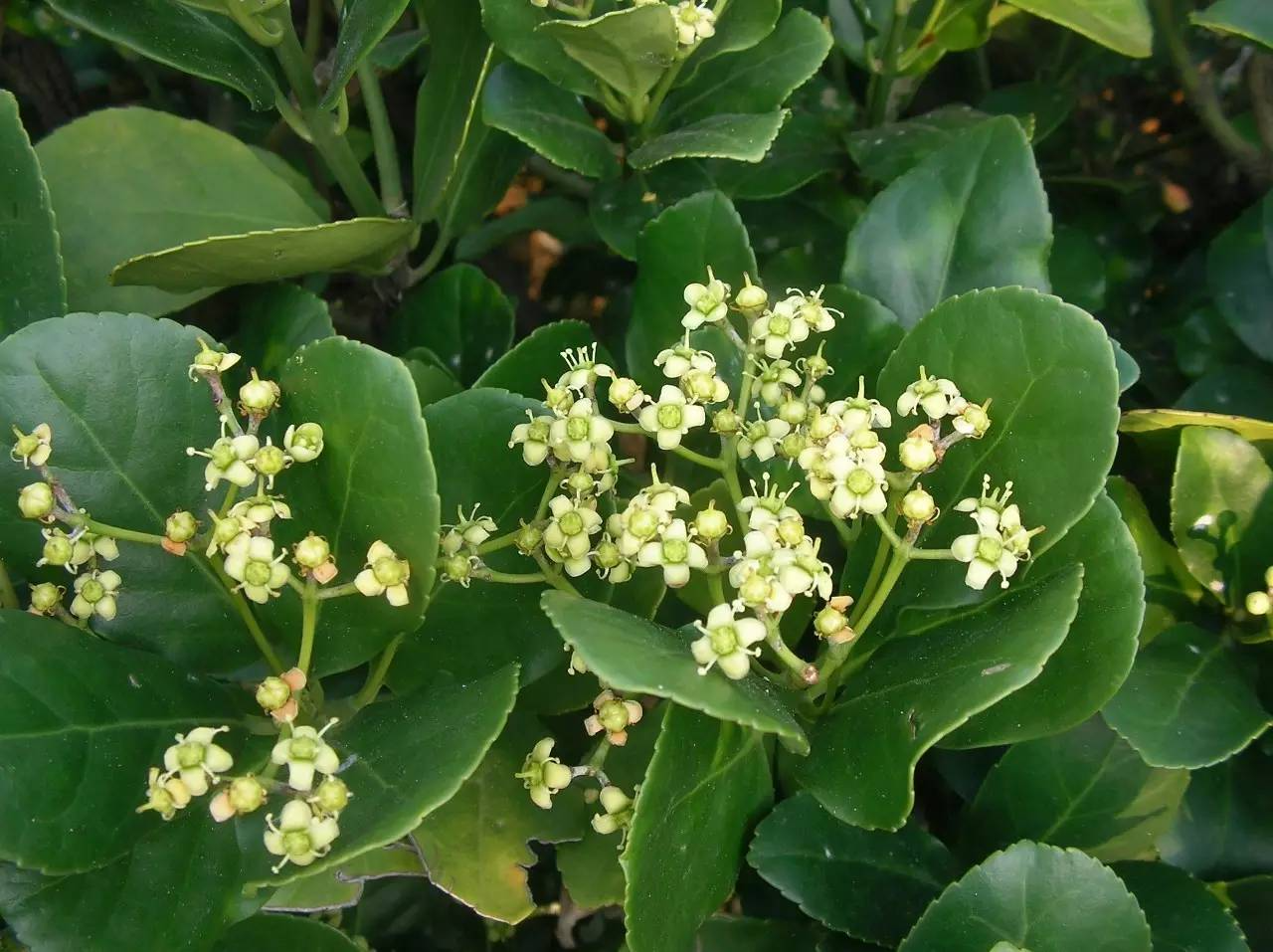
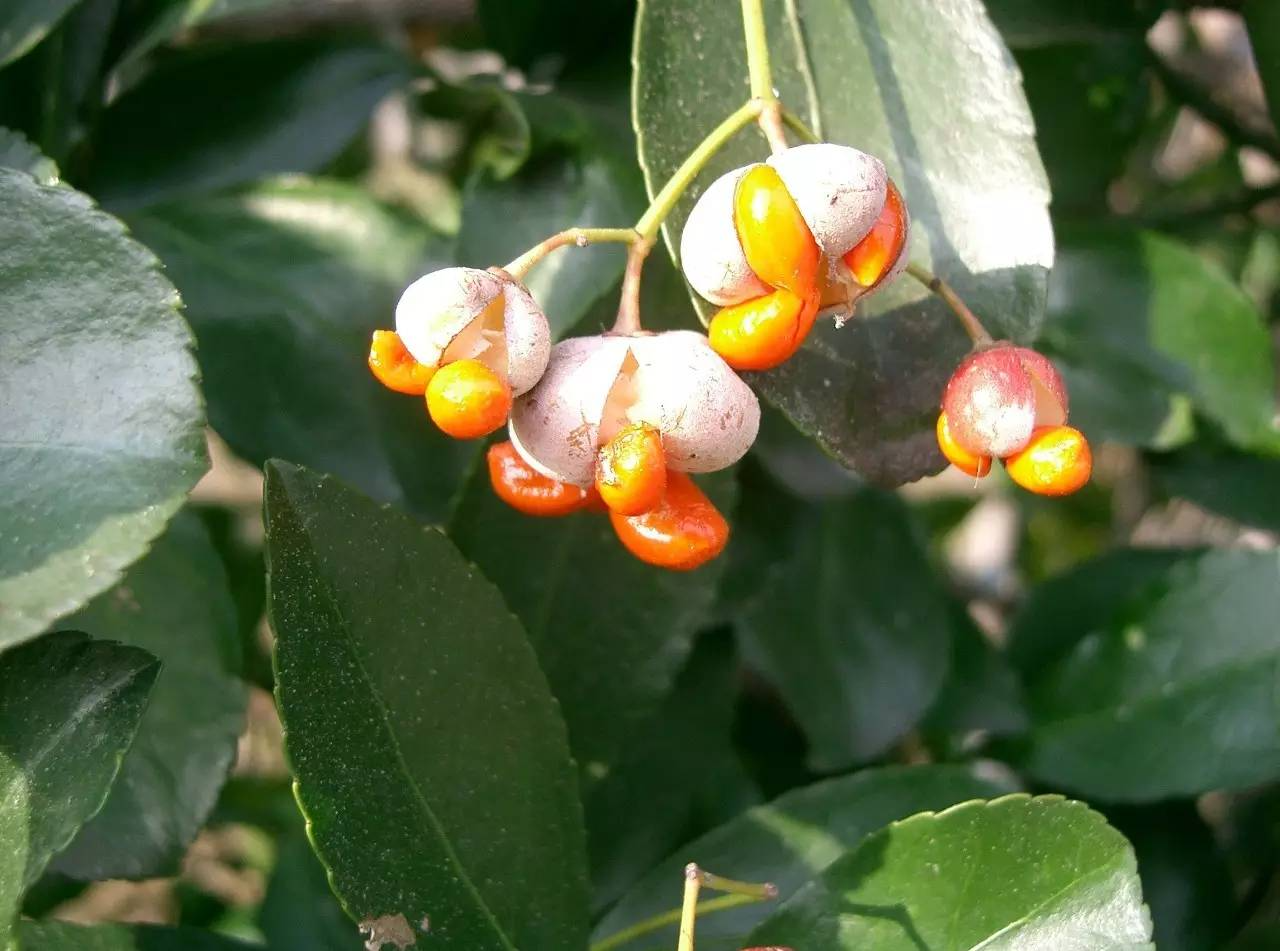
▲15. Euonymus hollyii (blooming soon, fruiting) : Euonymus genus, Celastraceae, mistakenly called "large-leaf boxwood" by the public, but in fact it is quite different. Euonymus hollyii begins to sprout tender leaves in spring, and the tree is full of tender green, which is very pleasing to the eye. It is often used as a hedge material and shaping plant material in gardens, planted beside the door, on the grass, or in the center of a large flower bed. Its variants have variegated leaves and can be potted for viewing. Flowering period is June-July, and fruit ripening period is September-October.
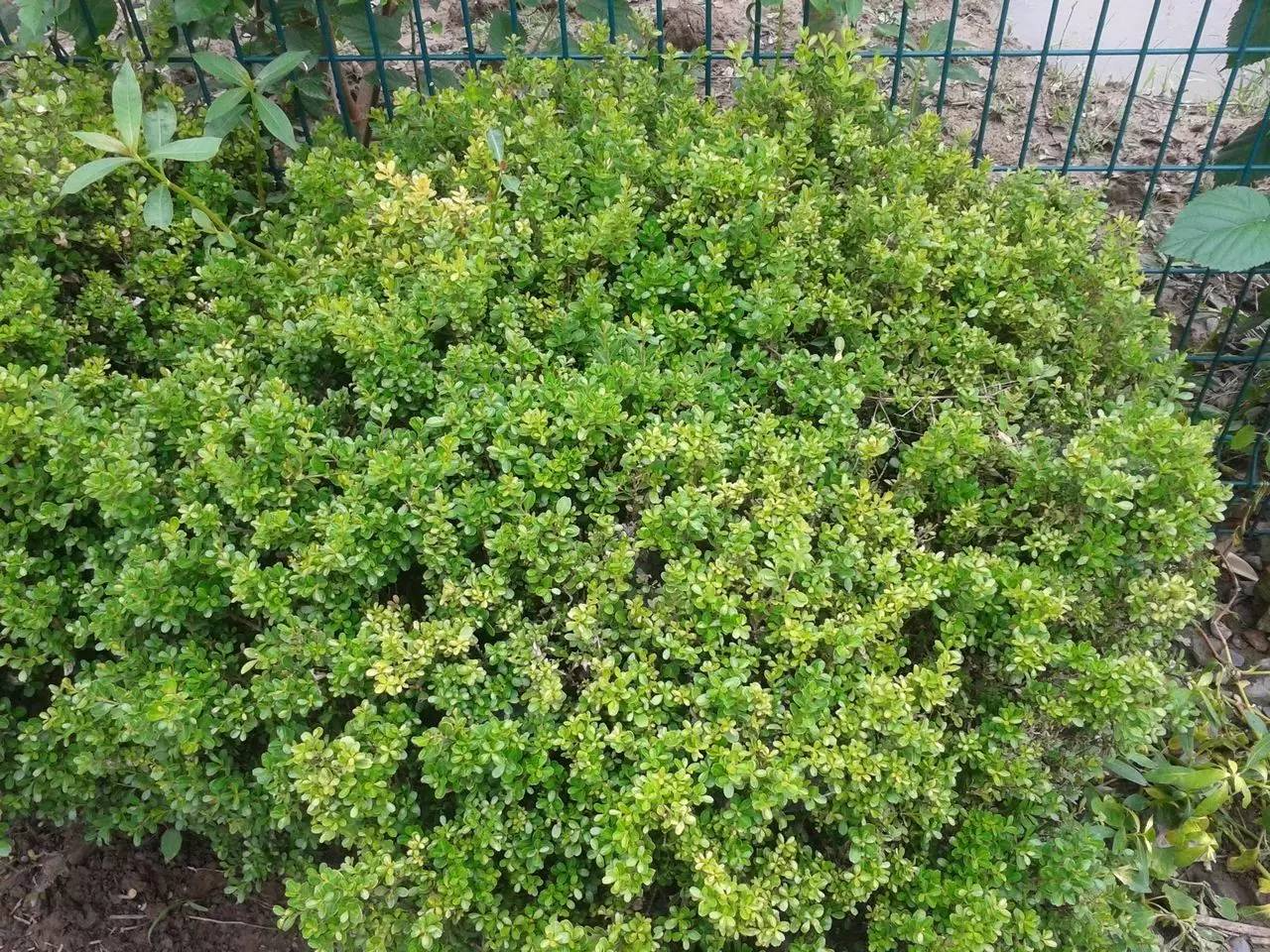
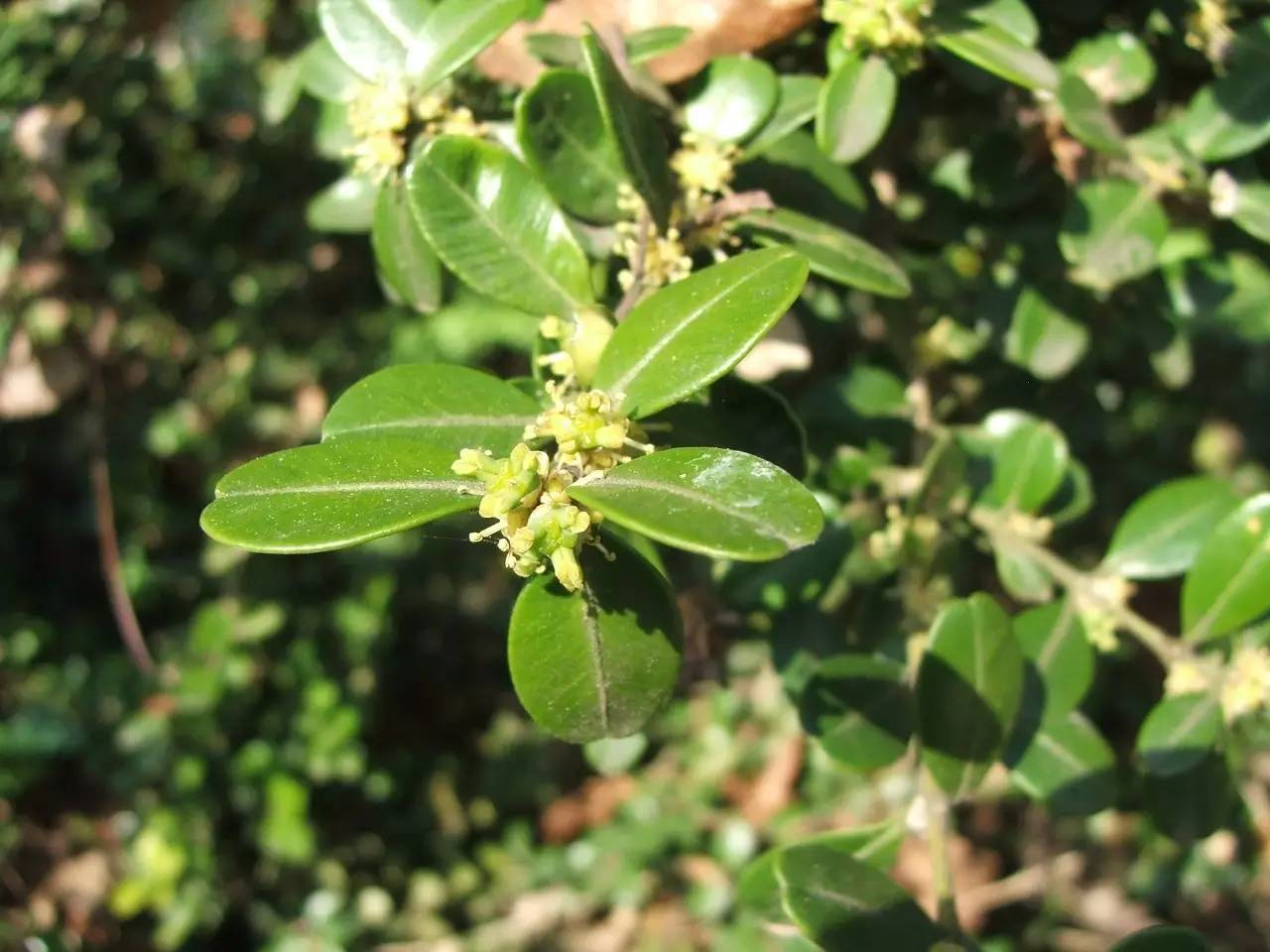
▲16. Small-leaved boxwood (flowering period has passed, fruiting) : Boxwood belongs to the genus Buxus of the Buxaceae family. It has dense branches and leaves, shiny and evergreen leaves. It is a commonly used foliage tree species. It is not only an evergreen tree species, but also resistant to pollution. It can absorb toxic gases such as sulfur dioxide in the air and has a purifying effect on the atmosphere. It is particularly suitable for planting greenery beside roads with high vehicle traffic. It can generally grow to more than 1m high, lush and green, and very beautiful. The flowering period is March-April, and the fruiting period is August-September.
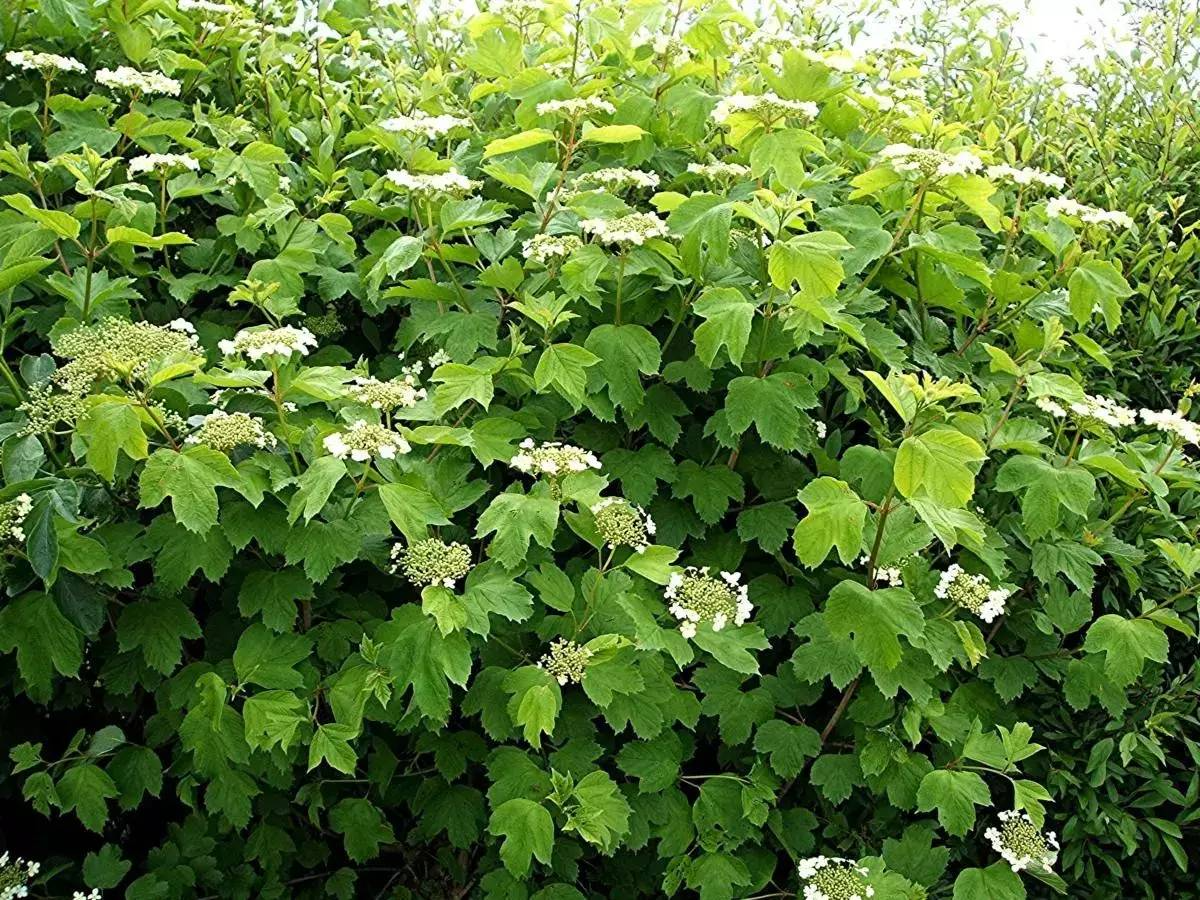
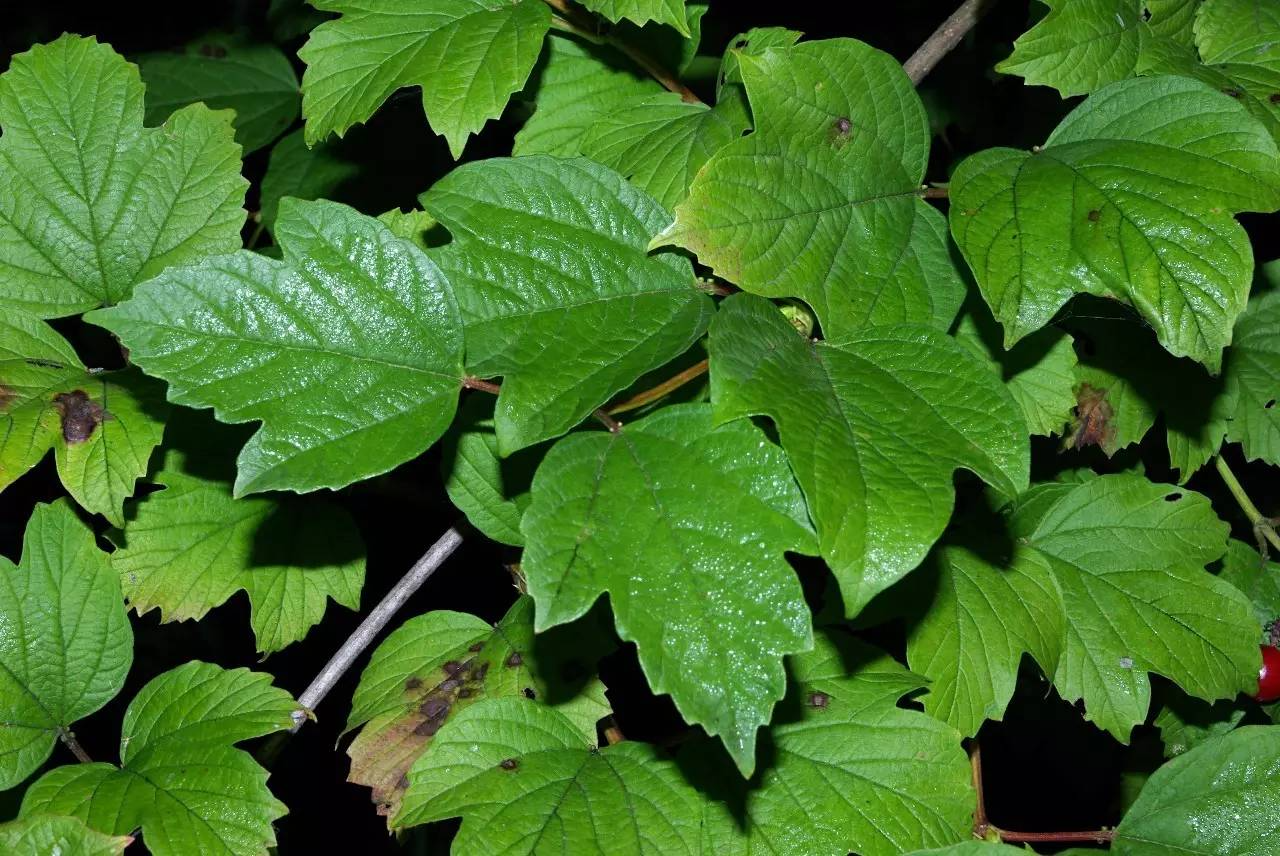

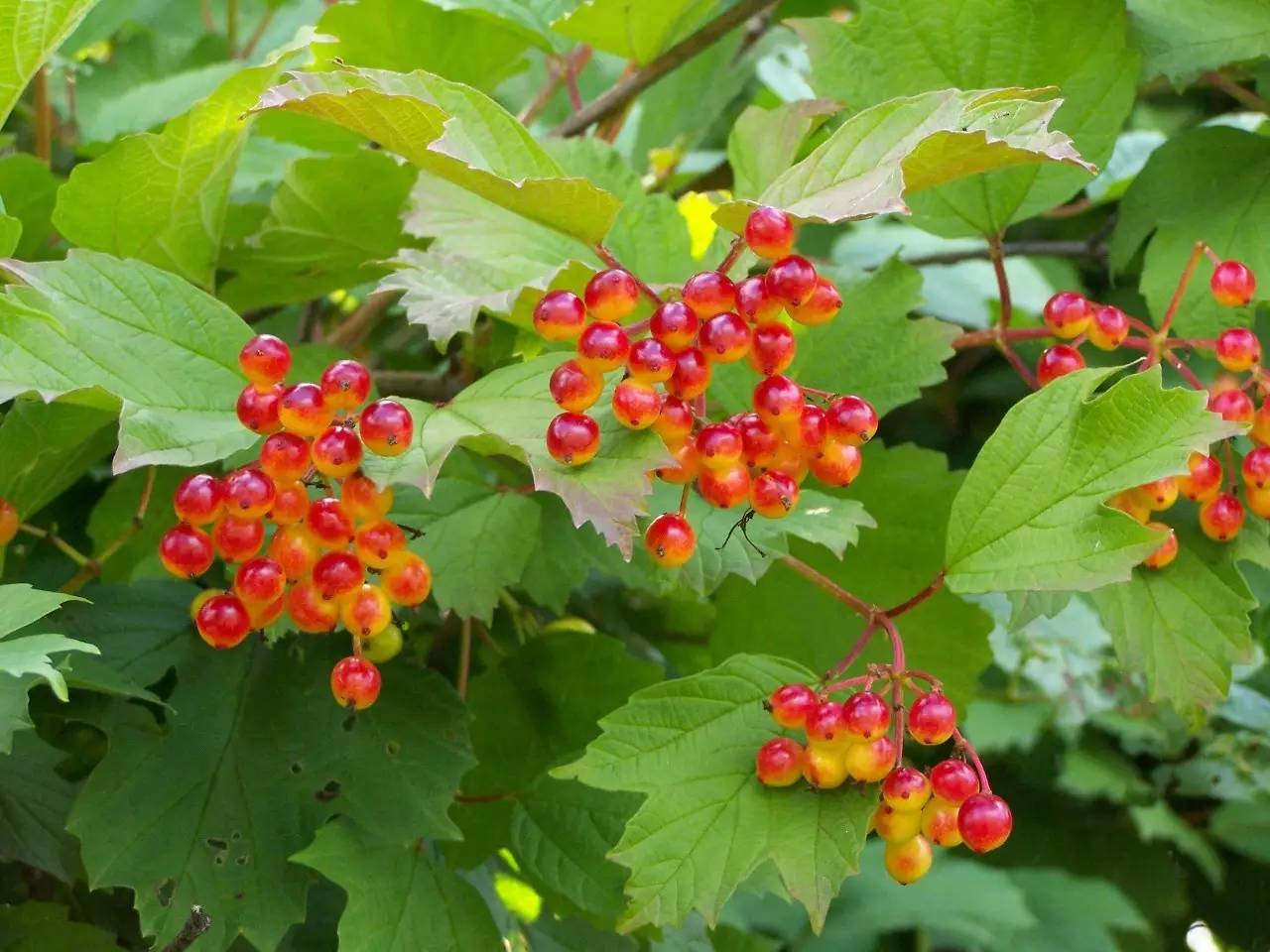
▲17. Viburnum (flowering period has passed, fruiting) : Viburnum genus of the family Viburnum, also known as European Viburnum and Snowball, has elegant white flowers and is suitable for planting in sanatoriums, hospitals, schools, etc.; it has dense inflorescences, and is a wild ornamental plant with high development value. The flowering period is May-June, and the fruit ripening period is September-October.
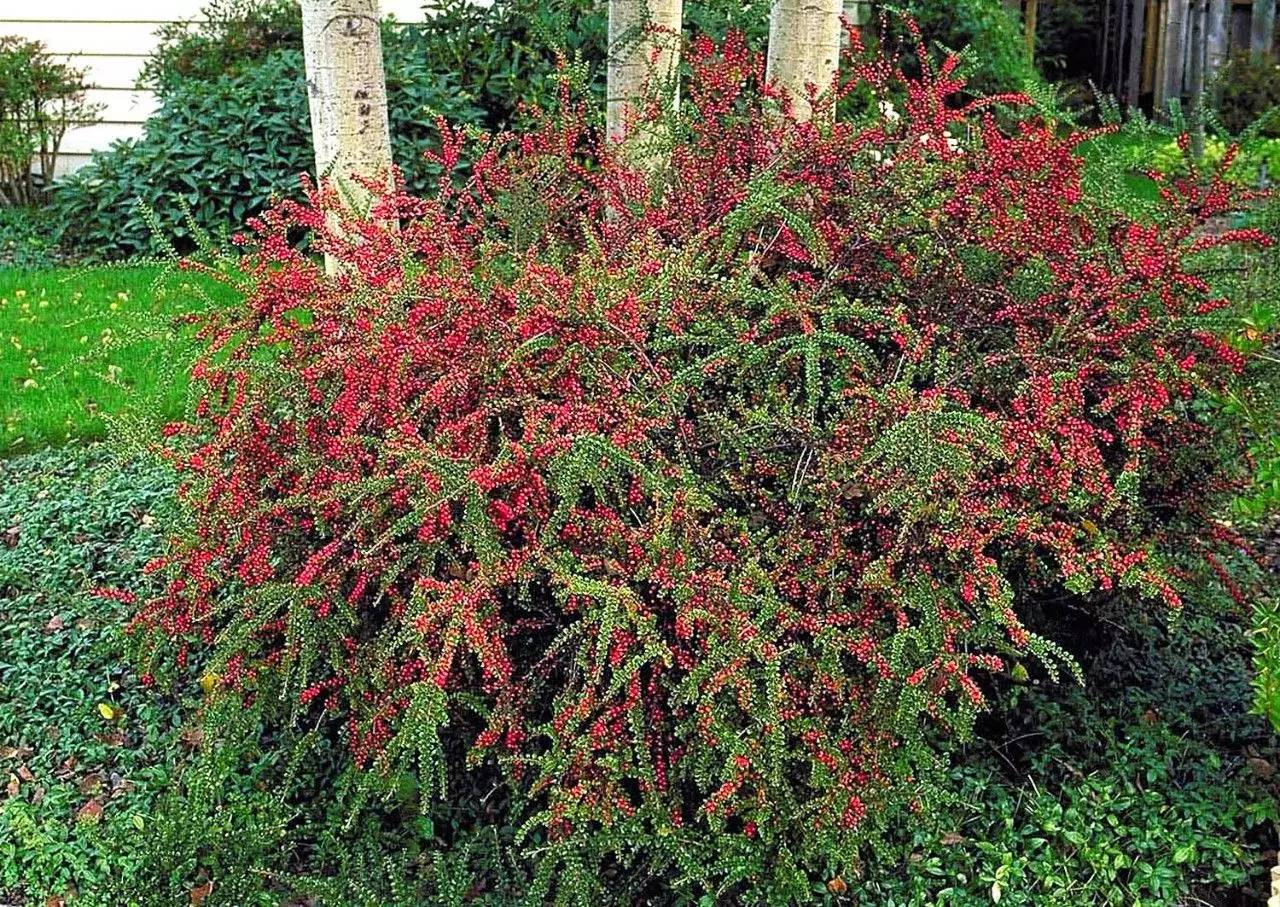
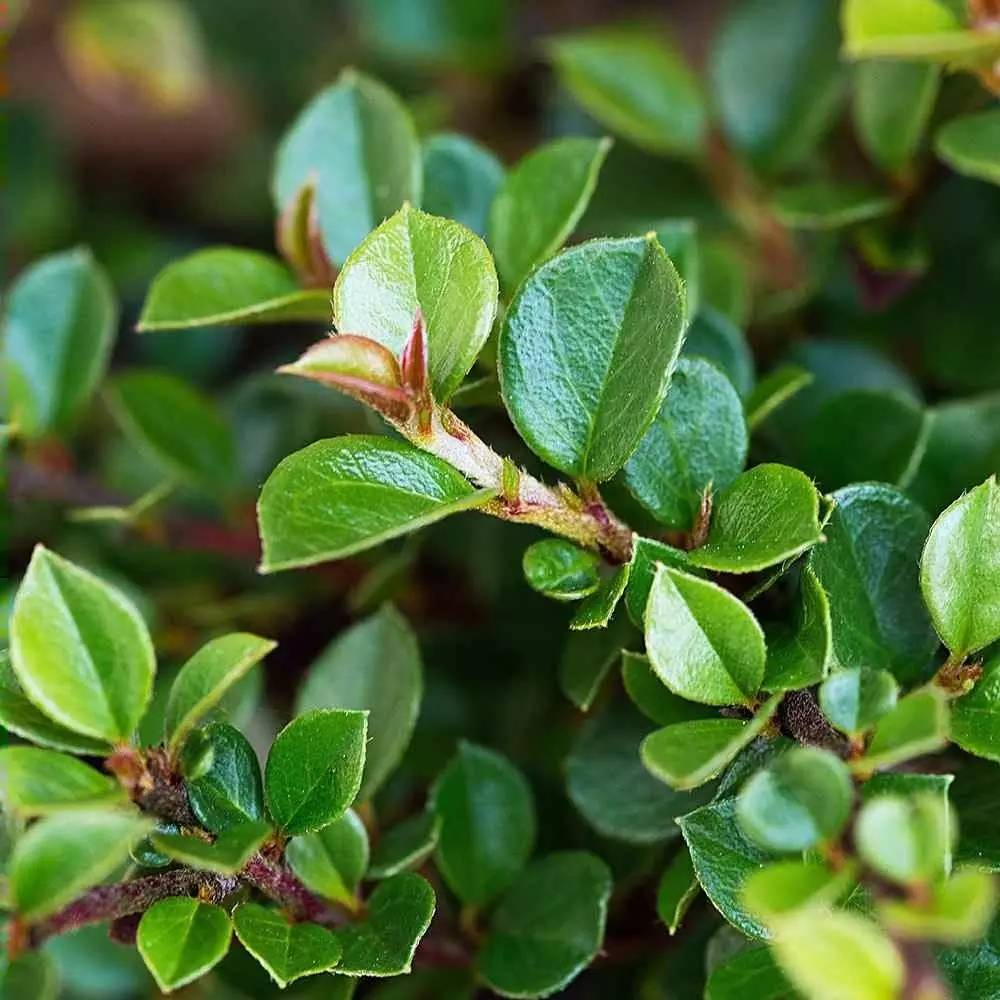
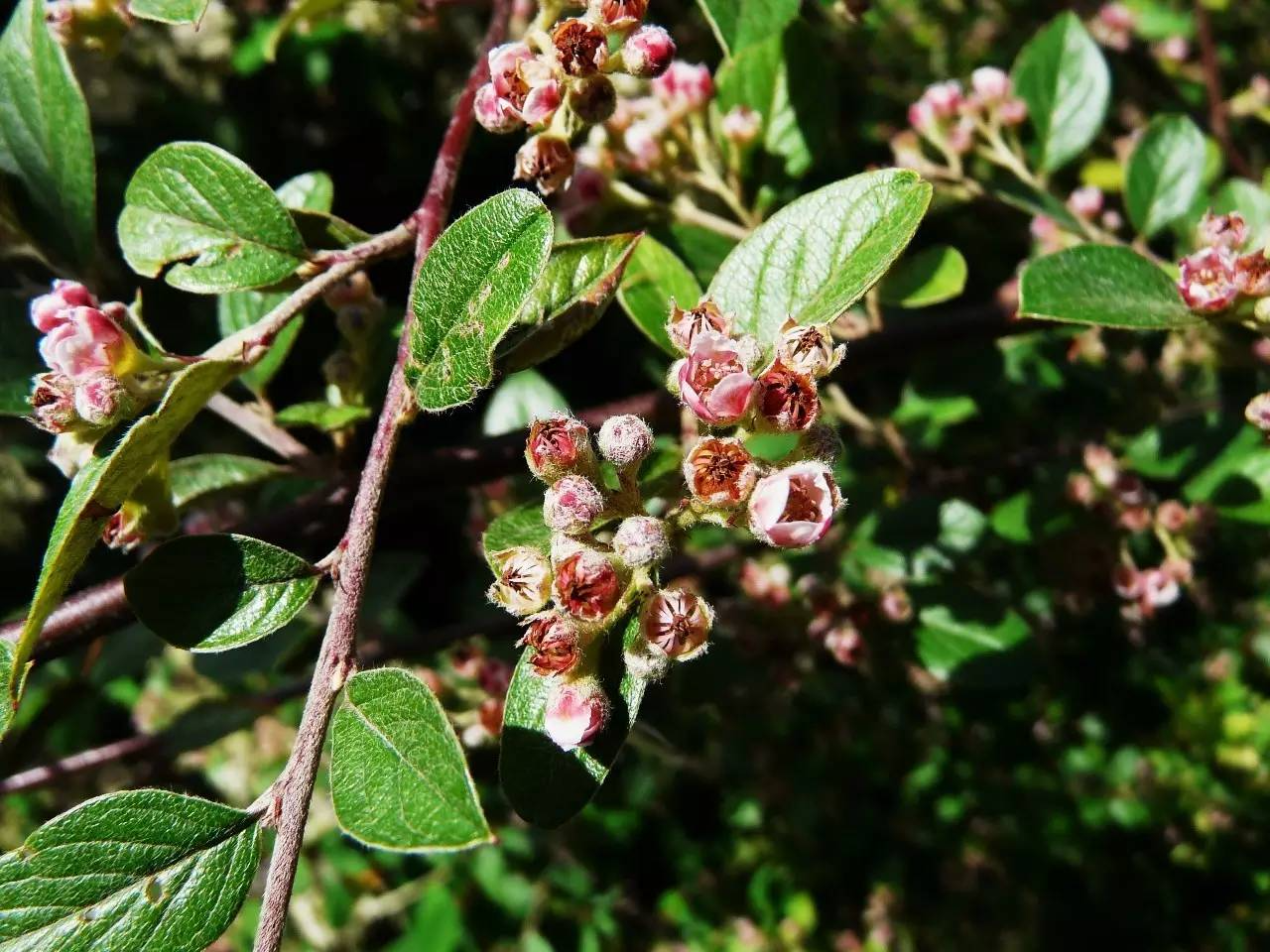
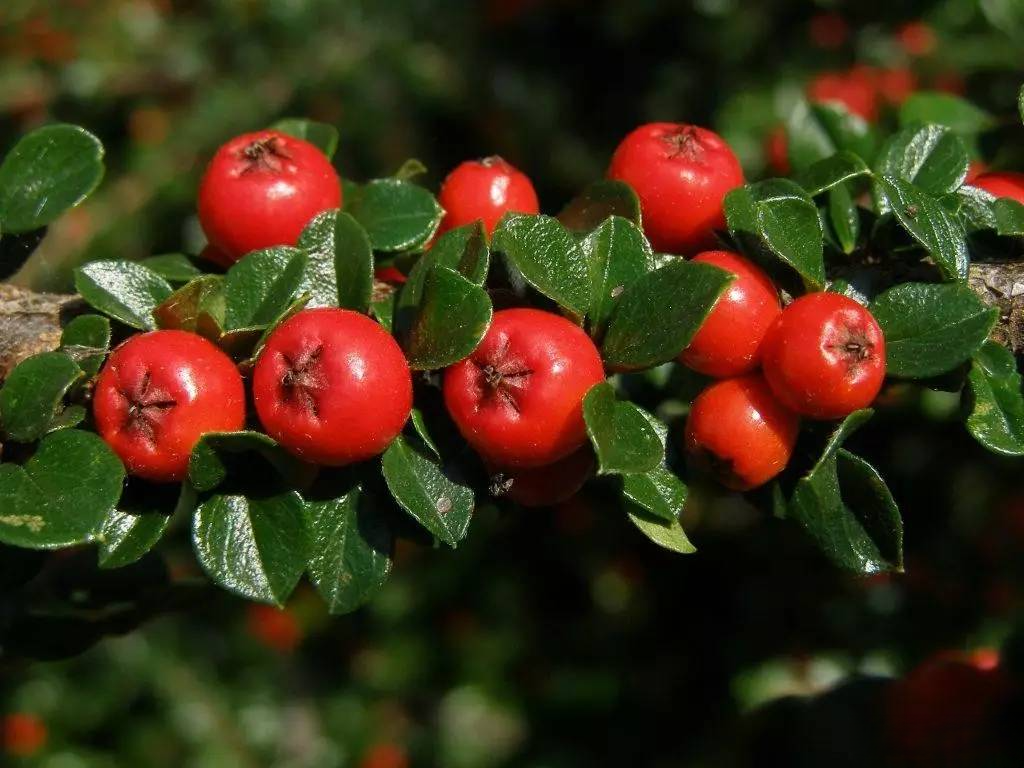
▲18. Cotoneaster serrata (flowering period has passed, fruiting) : Cotoneaster genus, Rosaceae, semi-evergreen creeping shrub, the main ornamental value of the branches is the red leaves in late autumn. In late autumn, the leaves of Cotoneaster serrata turn red, which is particularly gorgeous. Because Cotoneaster serrata is relatively low, it looks like a ball of fire from a distance, which is very bright. Accompanied by rockery and stacked stones , it is dotted beside the lawn and the stream, setting off each other, and the landscape is beautiful. The branches of Cotoneaster serrata are parallel and layered, so the tree shape is also beautiful. The flowering period is May-June, and the fruiting period is September-October.
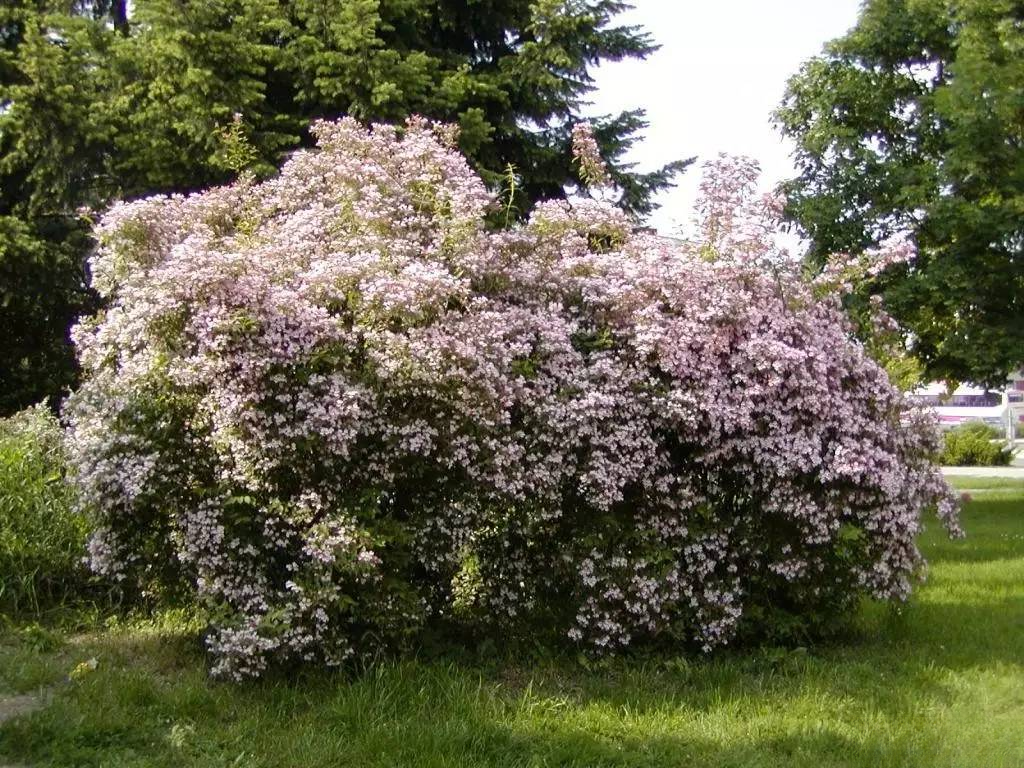
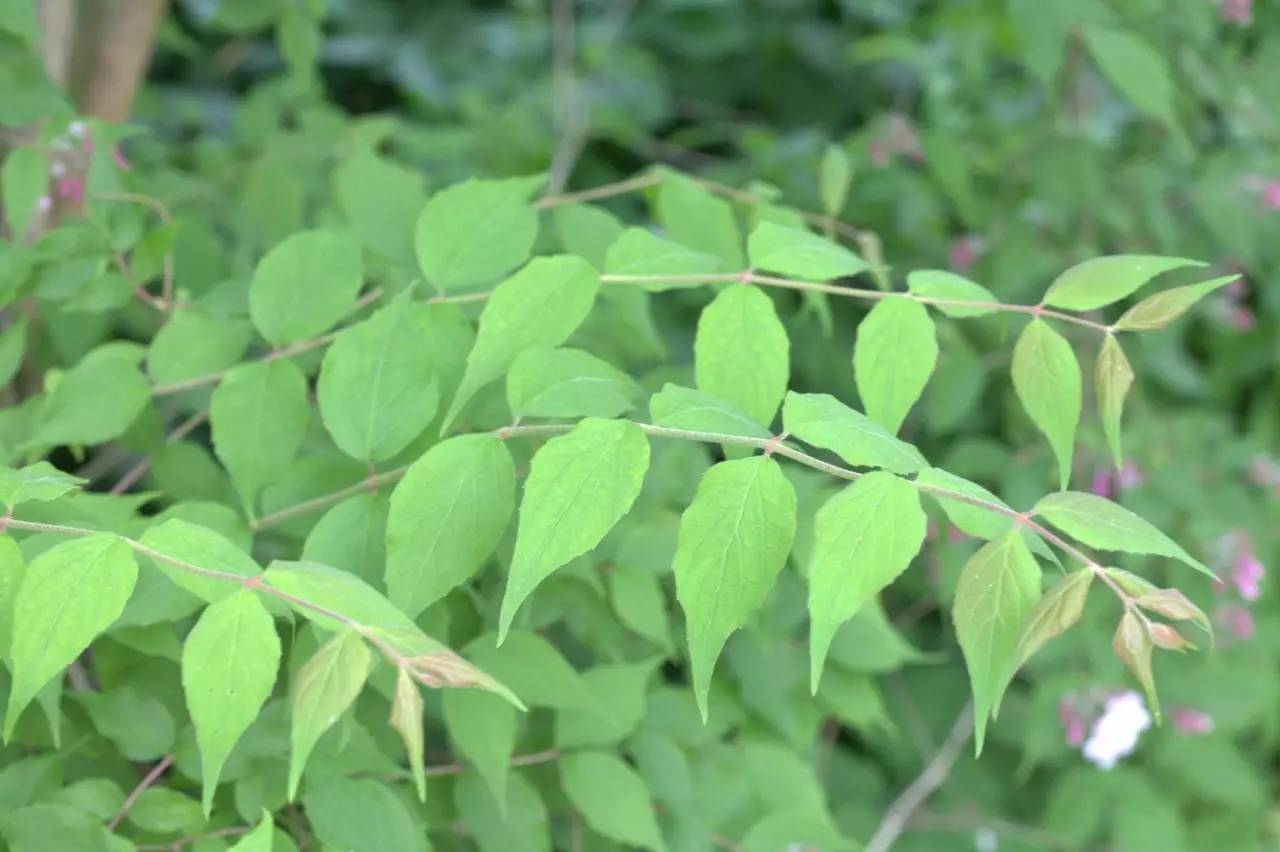
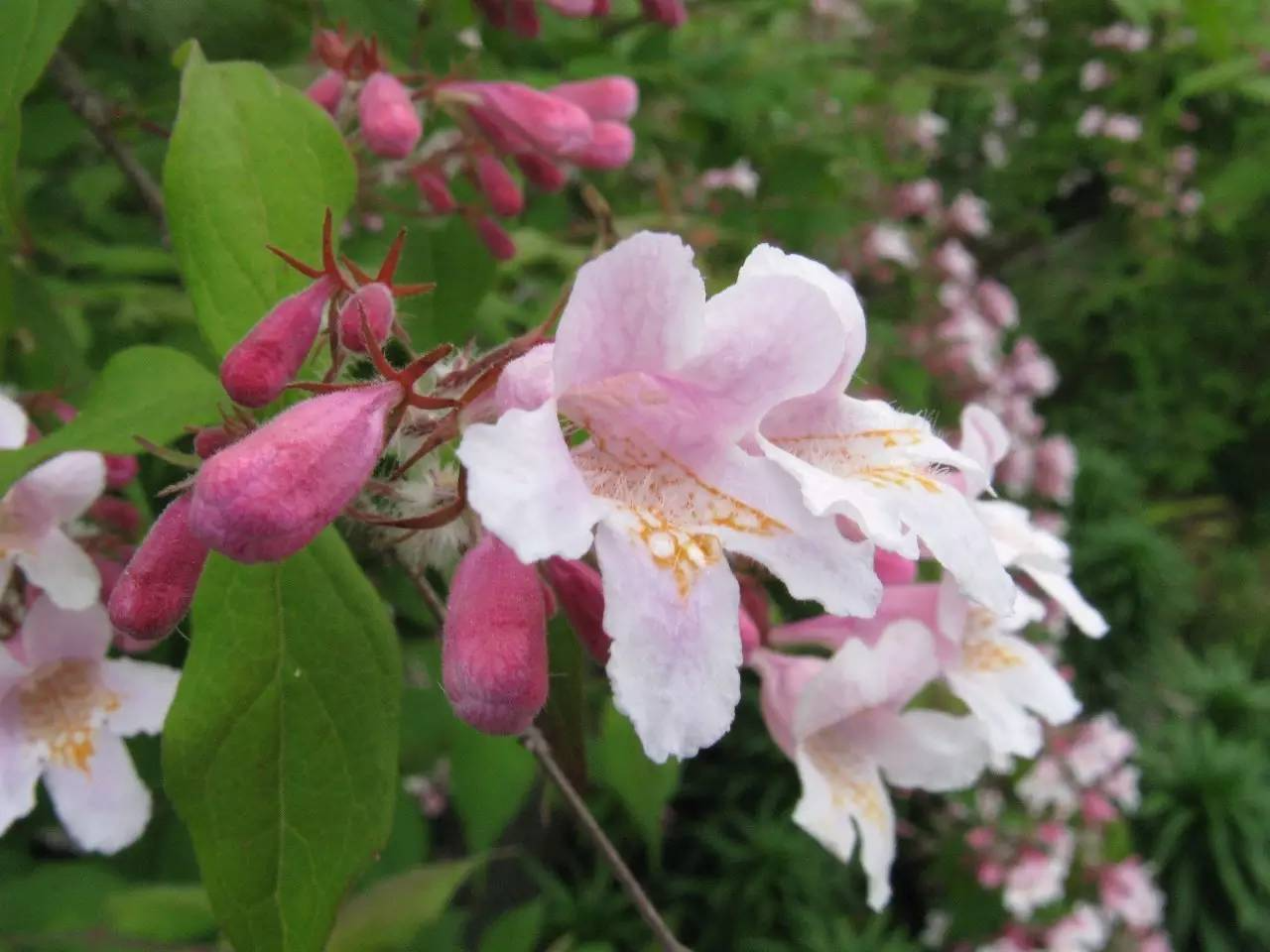
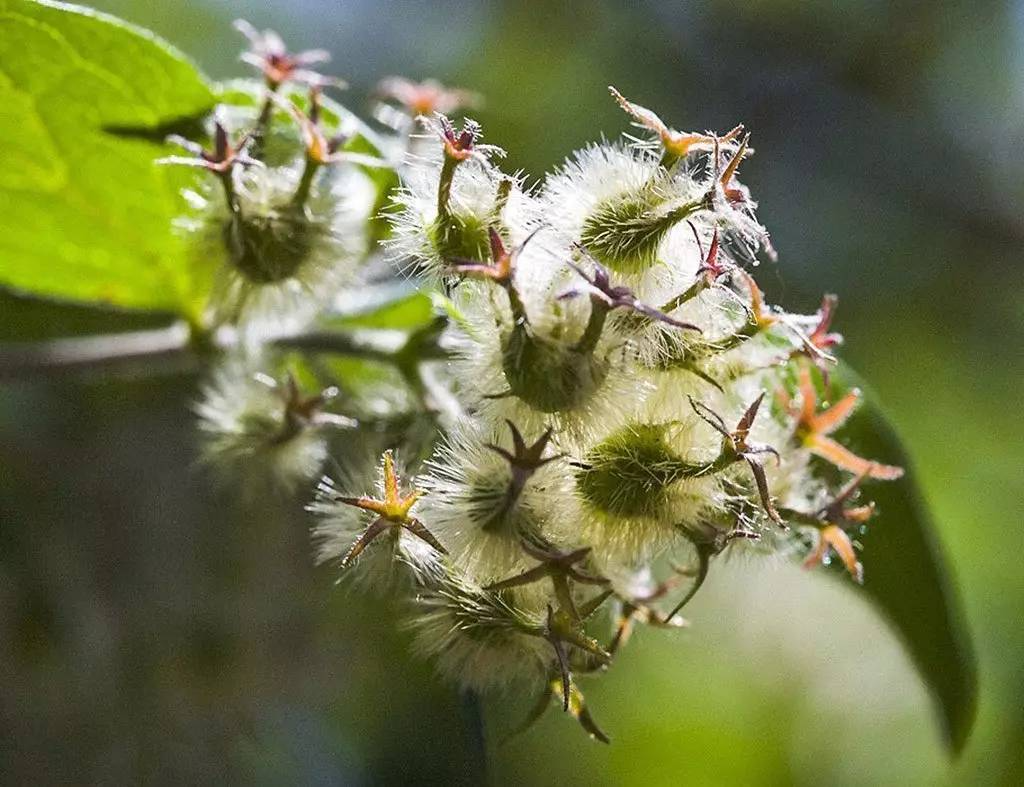
▲19. Eupatorium (flowering period has passed, fruiting) : Eupatorium genus of Caprifoliaceae, a characteristic flower and tree in the Midwest. Introduced to the United States for cultivation, it is known as a "beautiful shrub". Eupatorium flowers are dense and colorful, and the flowering period is in early summer when all flowers wither, so it is even more valuable. It is suitable for outdoor planting, potted planting or cut flowers. The flowering period is May-June, and the fruiting period is August-September.
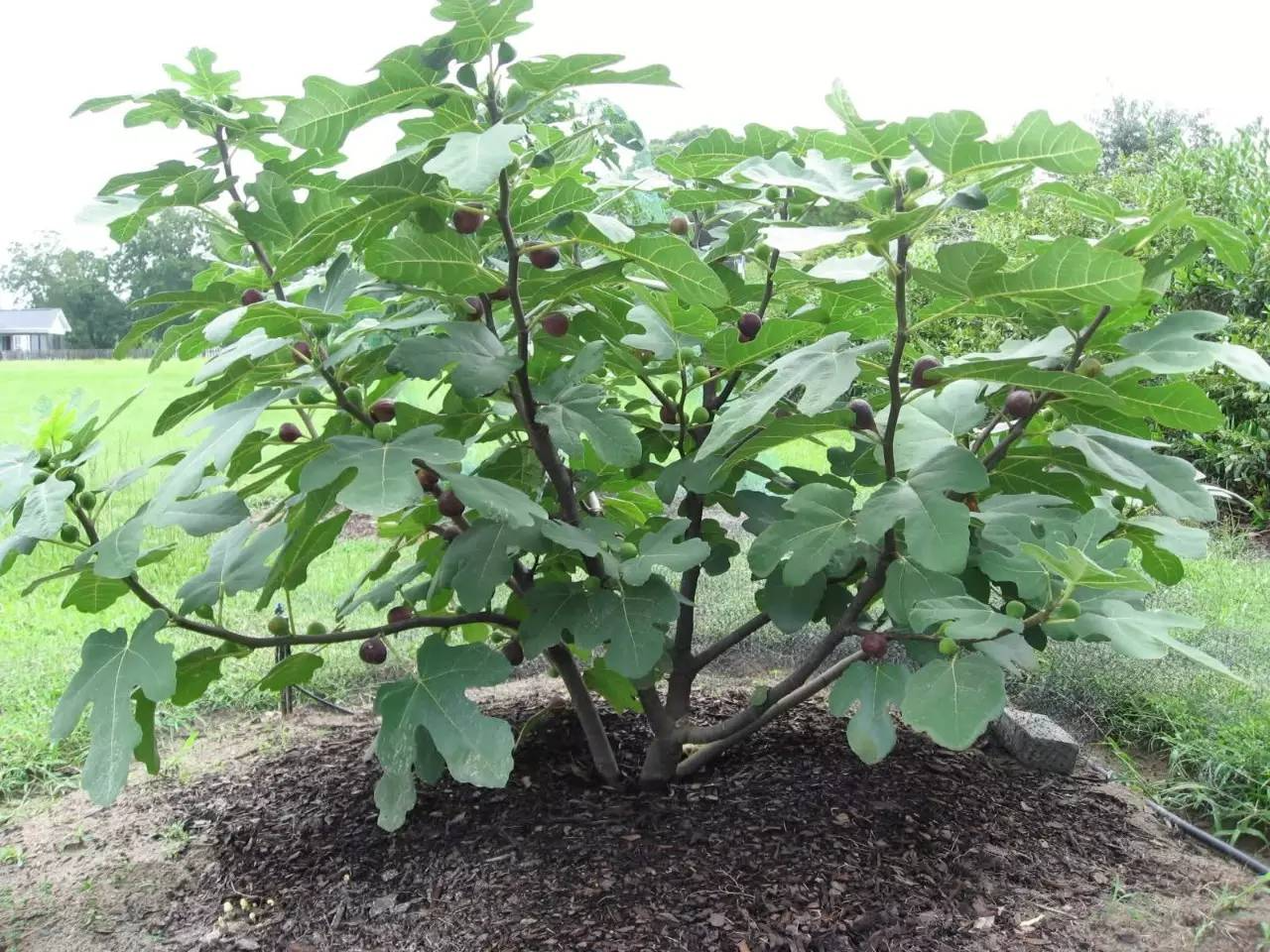
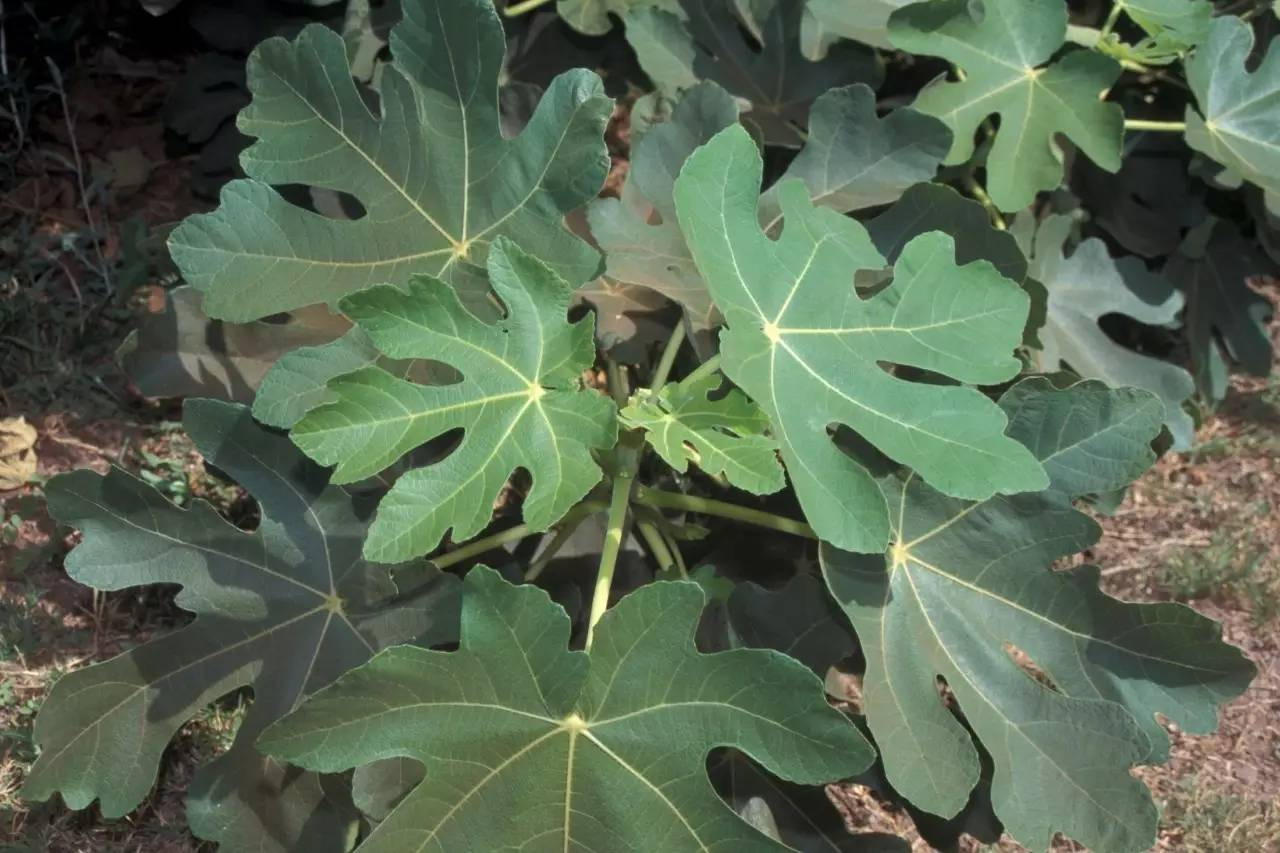
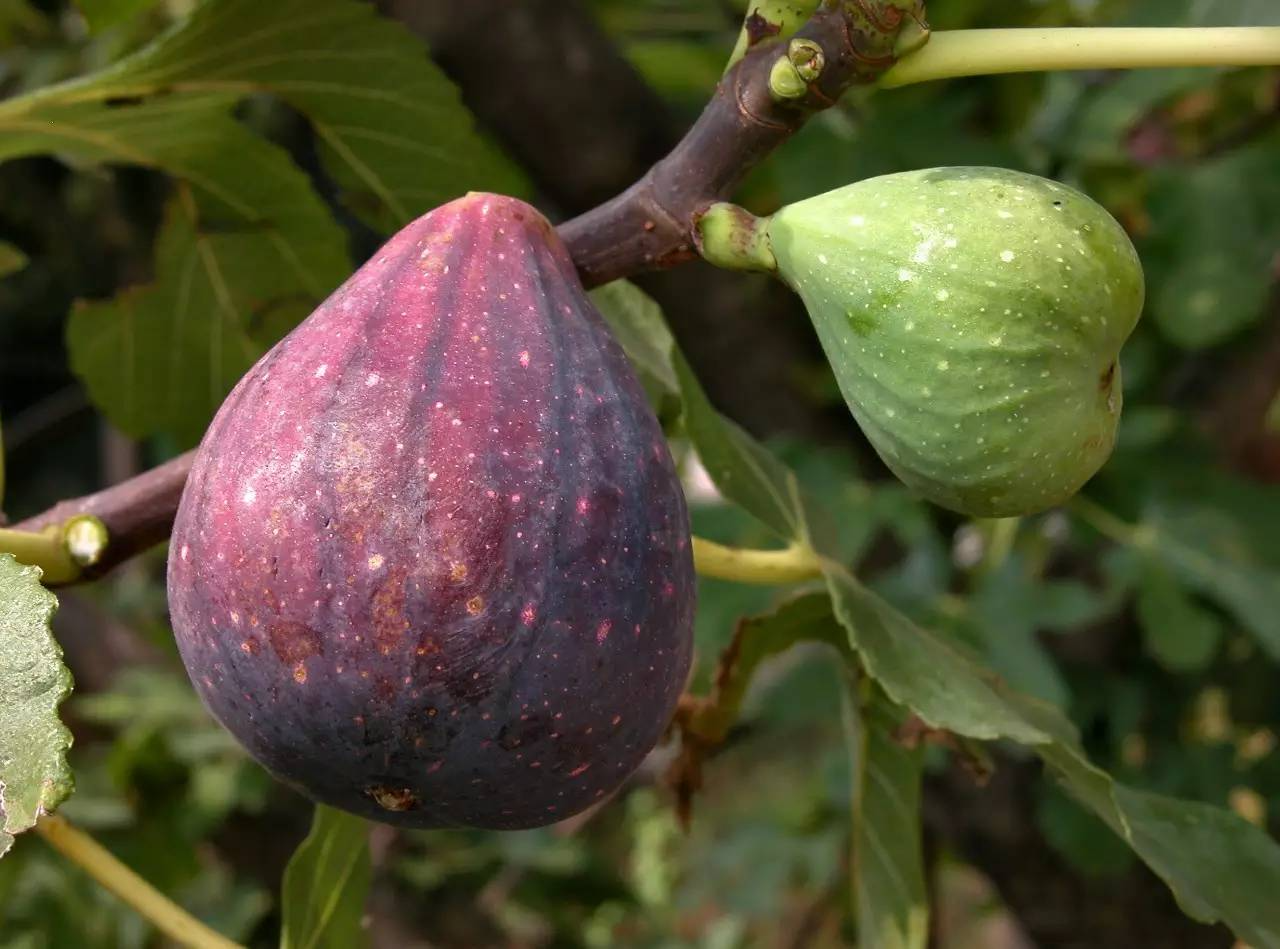
▲20. Fig (in fruit) : Moraceae Ficus, deciduous shrub, native to the Mediterranean coast. Figs are luxuriant and elegant, with good ornamental value, and are good ornamental trees for gardens and courtyards. They bear fruit in the same year they are planted, and are one of the best potted fruit trees, and one of the potted fruit trees with the highest profit margins. The fruit is bulbous, with a small hole at the tail, and the pollen is spread by wasps.
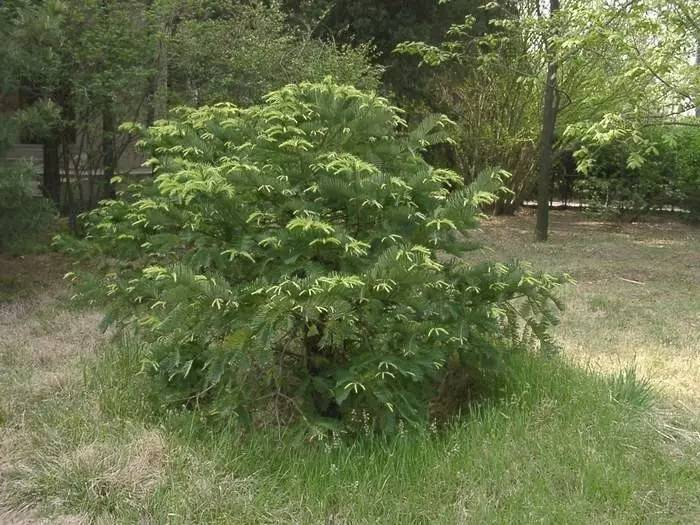
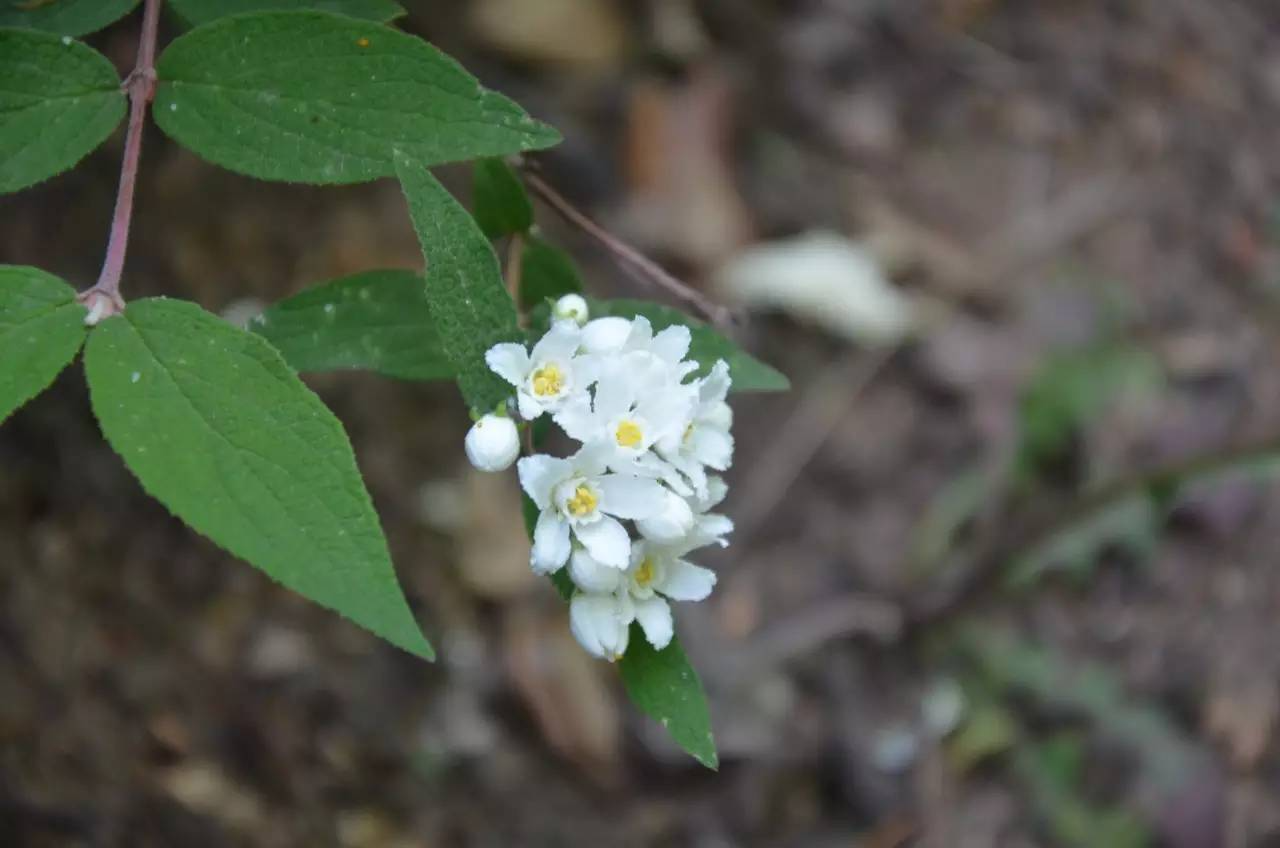
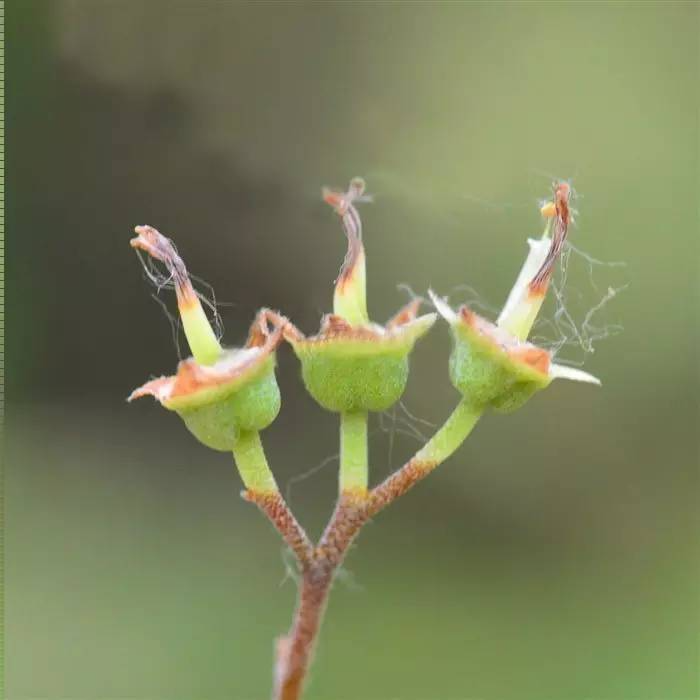
▲21. Deutzia parviflora (flowering period has passed, fruiting) : Deutzia parviflora of Saxifragaceae, native to China, has elegant flowers, small but dense, and blooms in the summer when there are few flowers, making it a good material for landscaping. In landscaping, Deutzia parviflora can be used as a natural flower hedge, or planted in clusters to decorate lawns and forest edges, or planted in pieces, or used to decorate rockery. Its branches can be placed in vases for viewing. Flowering period is May-June, and fruiting period is August-October.
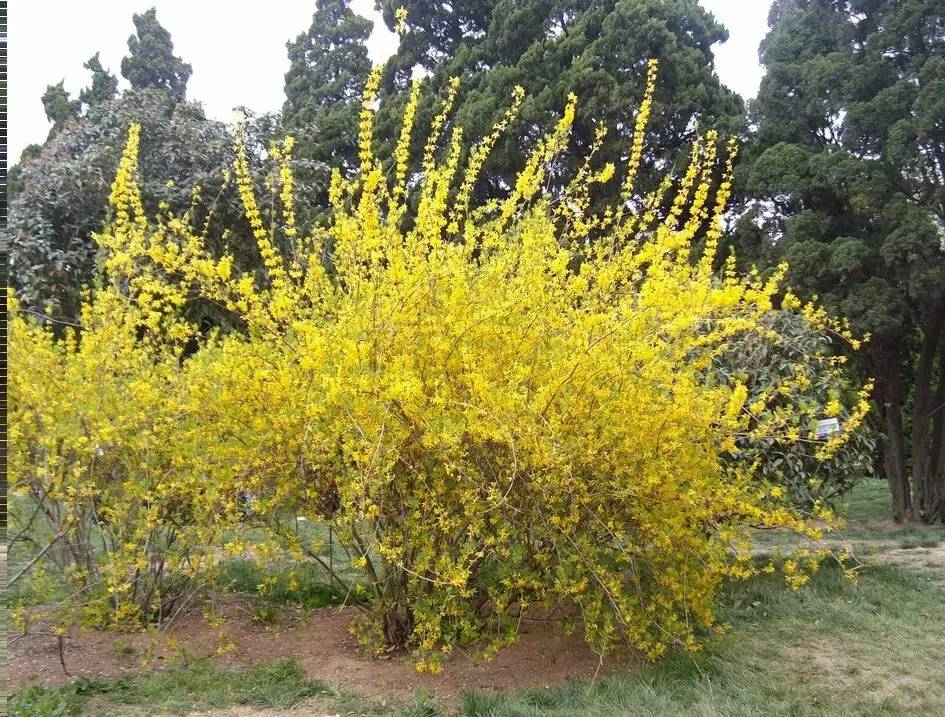
▲Forsythia in spring

▲Summer Forsythia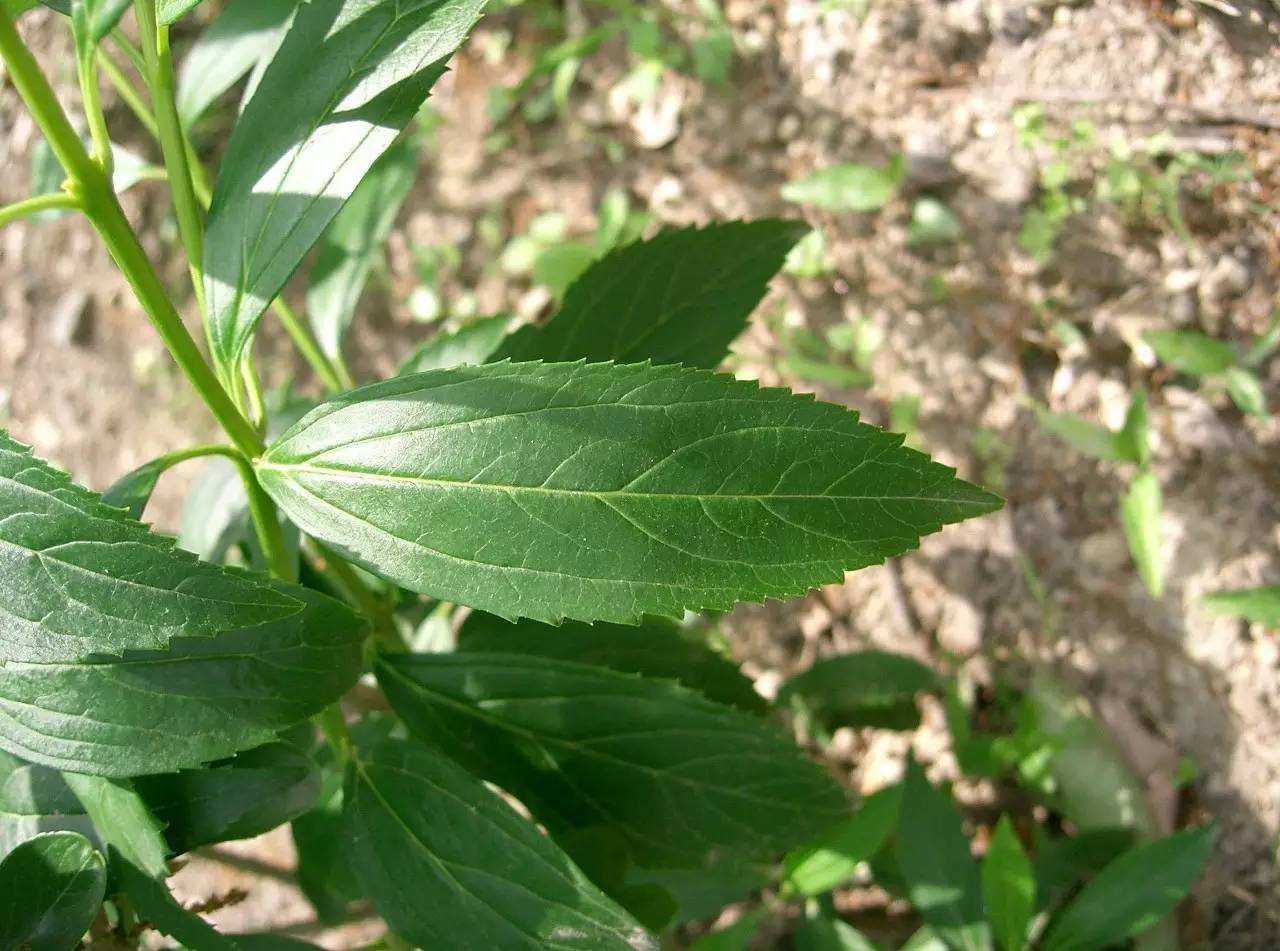
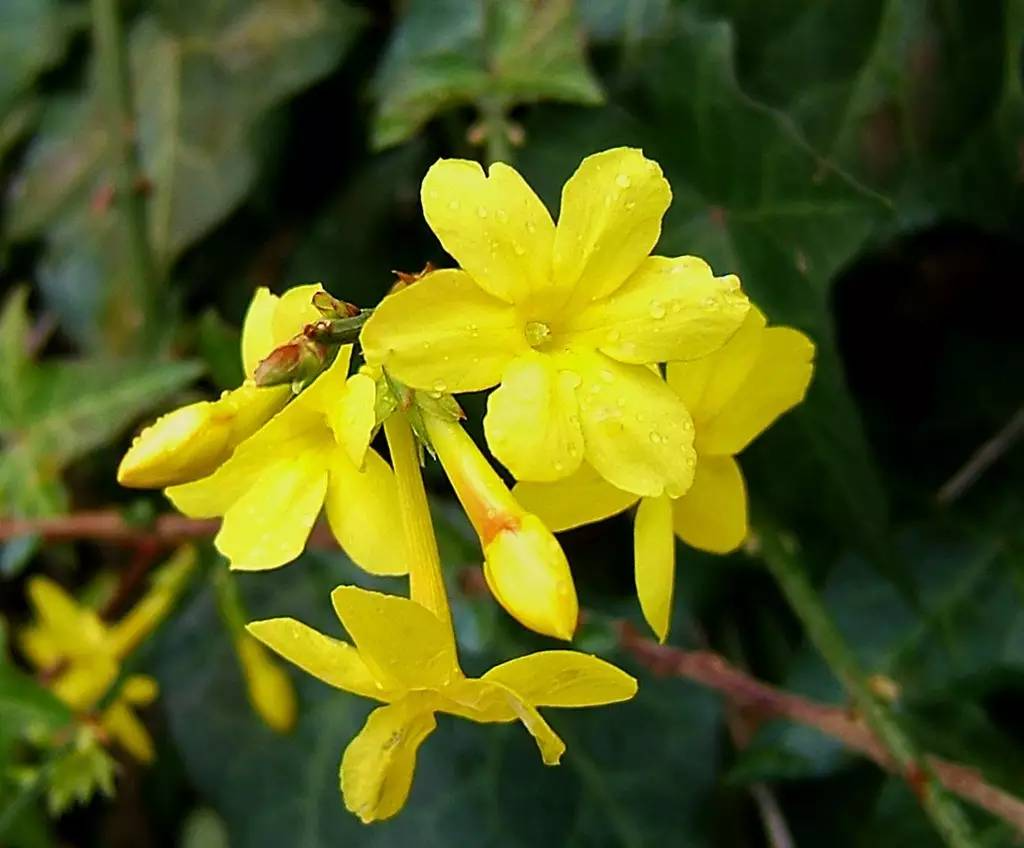
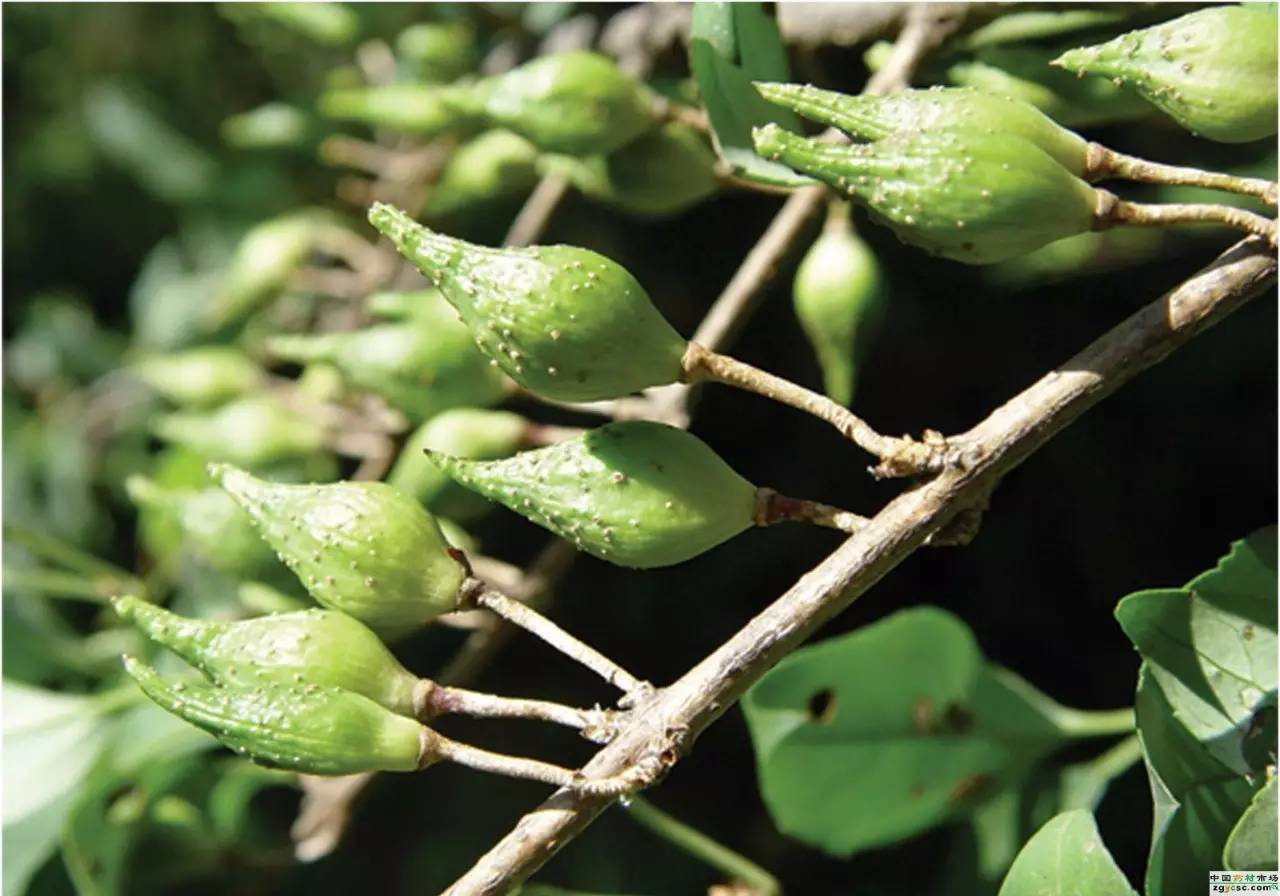
▲22. Forsythia suspensa (flowering period has passed, fruiting) : Oleaceae Forsythia genus, commonly known as a string of gold in Hong Kong, it blooms before the leaves in early spring, the flowers are fragrant and bright, the branches are full of golden yellow, gorgeous and lovely, it is an excellent early spring flowering shrub. It is the city flower of Seoul, the capital of South Korea. The flowering period is March-April, and the fruiting period is July -September.
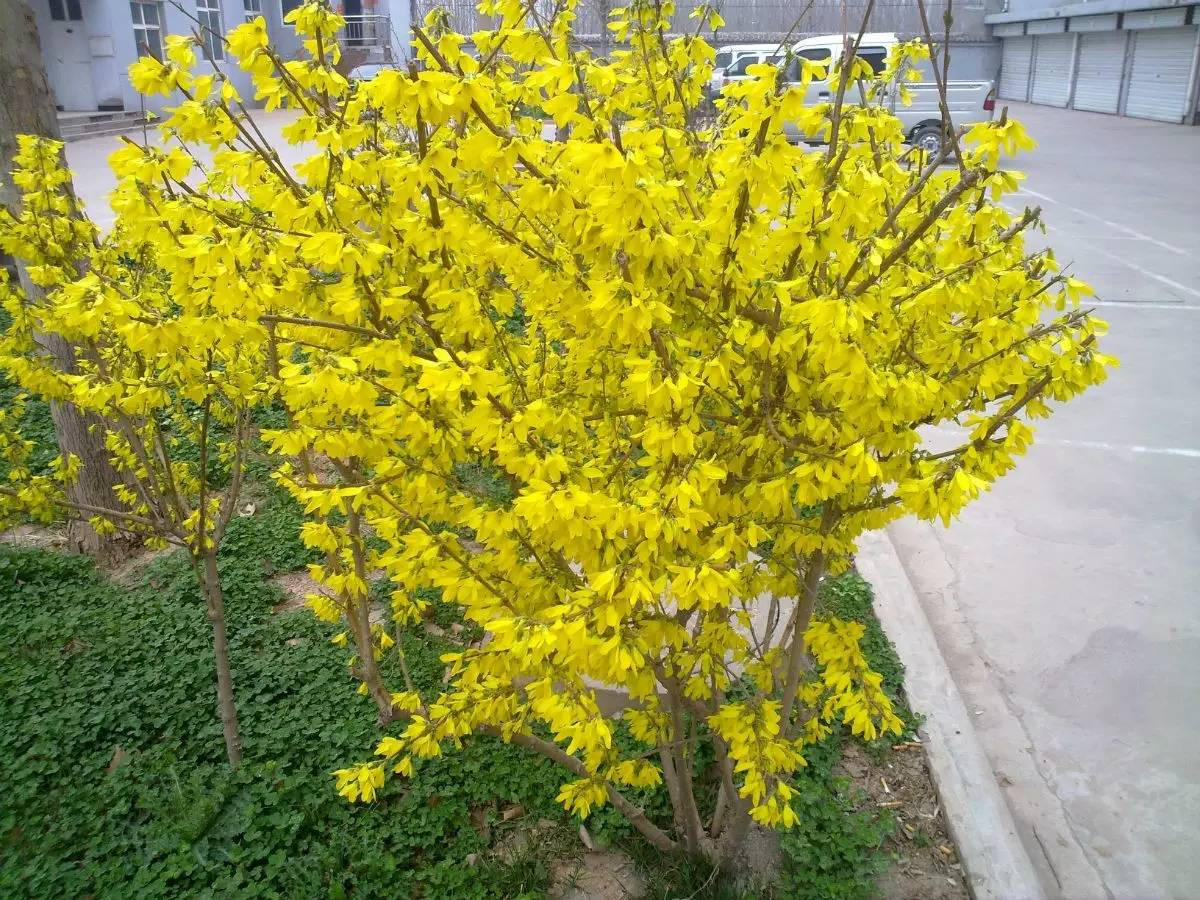
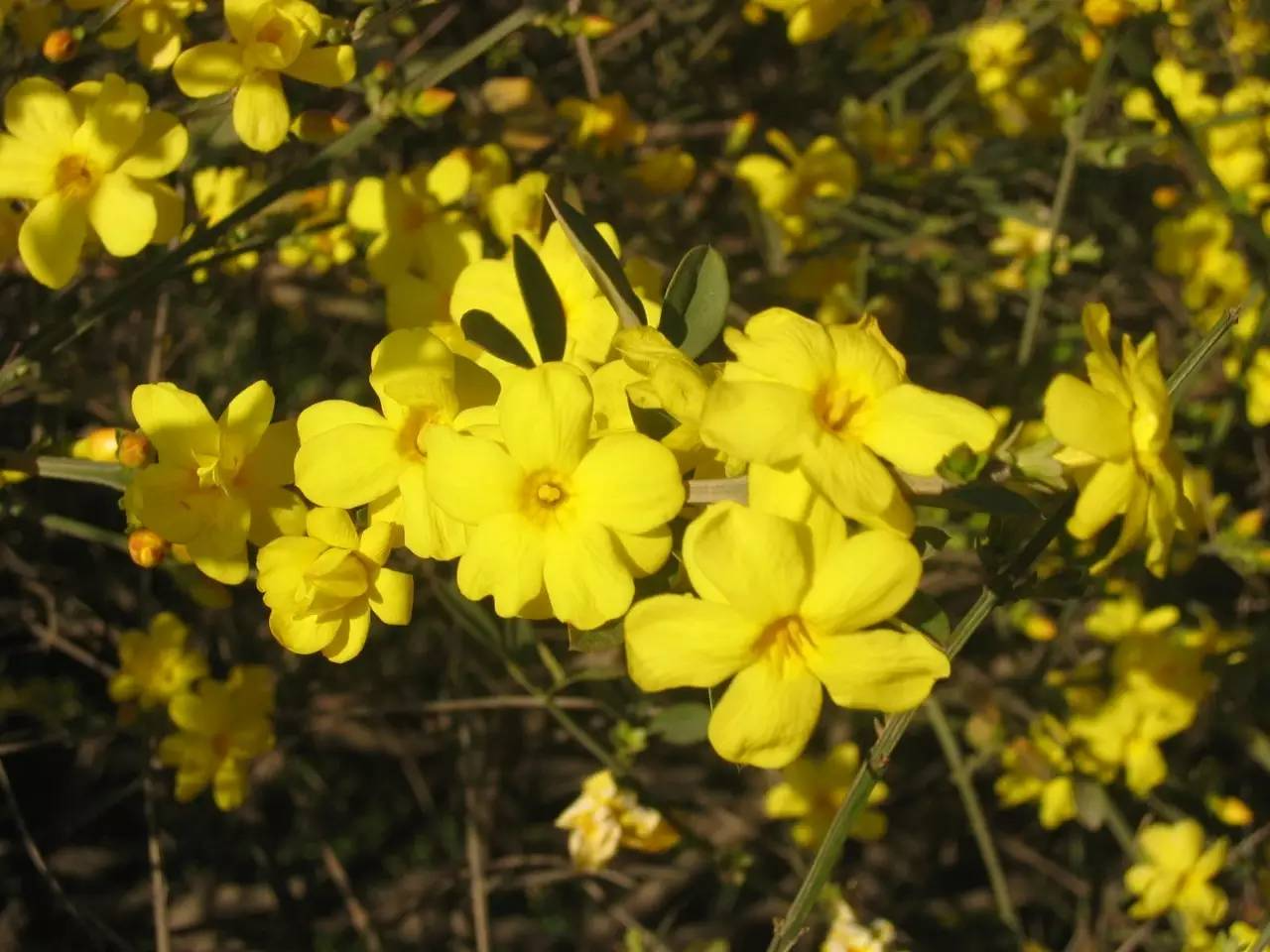
▲ Spring weeping
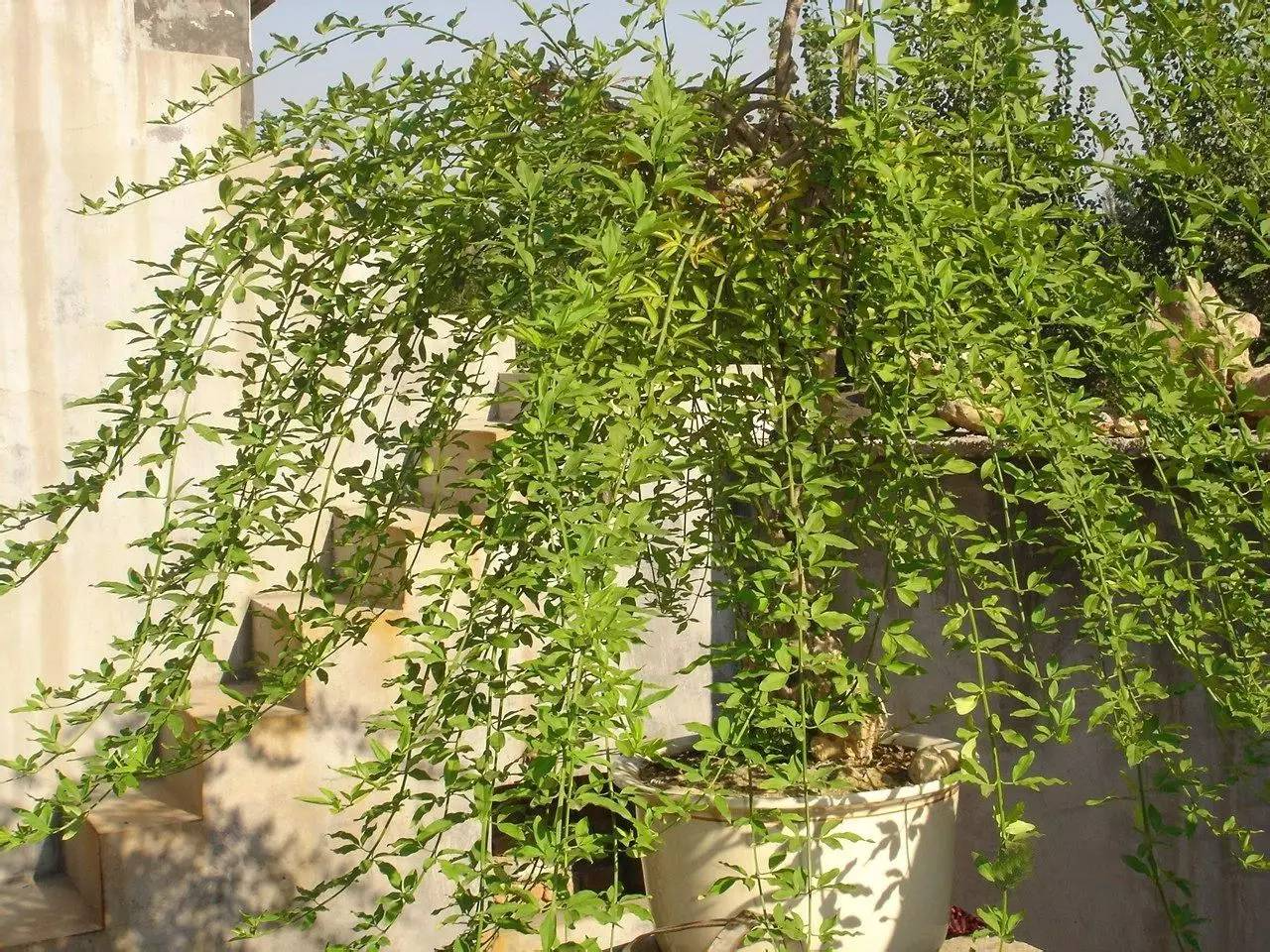
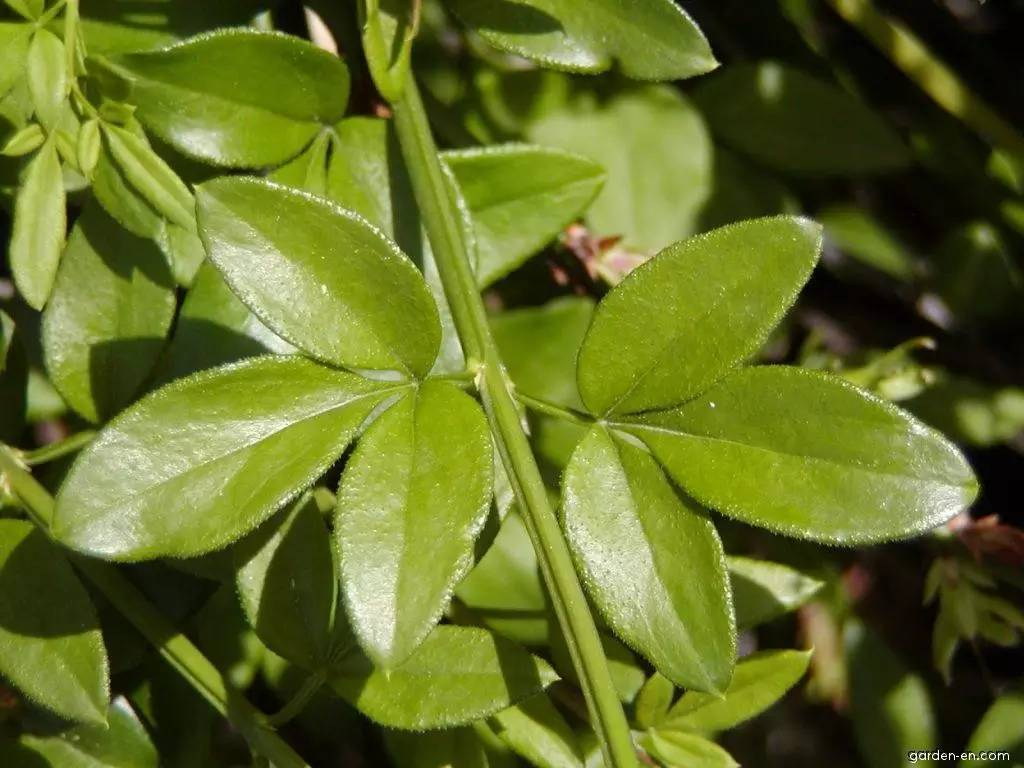
▲ Welcome to spring in summer
▲23. Winter jasmine (flowering period has passed, no fruit) : Jasmine genus of Oleaceae, also known as winter jasmine, yellow jasmine, golden belt, blooms before leaves, has a delicate fragrance, golden yellow, and red blush on the outside. It is named because it blooms the earliest among all flowers, and after blooming, spring comes when all flowers bloom. The flowering period is from February to April, and it usually does not bear fruit.
Winter jasmine, plum blossom, narcissus and camellia are collectively known as the "Four Friends in the Snow" and are one of the most common flowers. Winter jasmine is not only dignified and beautiful in color, but also has an extraordinary temperament. It is not afraid of the cold, is not selective in climate and soil, and has strong adaptability. It has always been loved by people. Winter jasmine has a history of more than 1,000 years. It is recorded in Bai Juyi's poem "Summoning Liu Langzhong on Behalf of Winter jasmine" in the Tang Dynasty, Han Qi's "Welcoming Spring in the East Hall of the Central Secretariat" in the Song Dynasty, and Zhou Wenhua's "History of Ru'nan Nursery" in the Ming Dynasty.
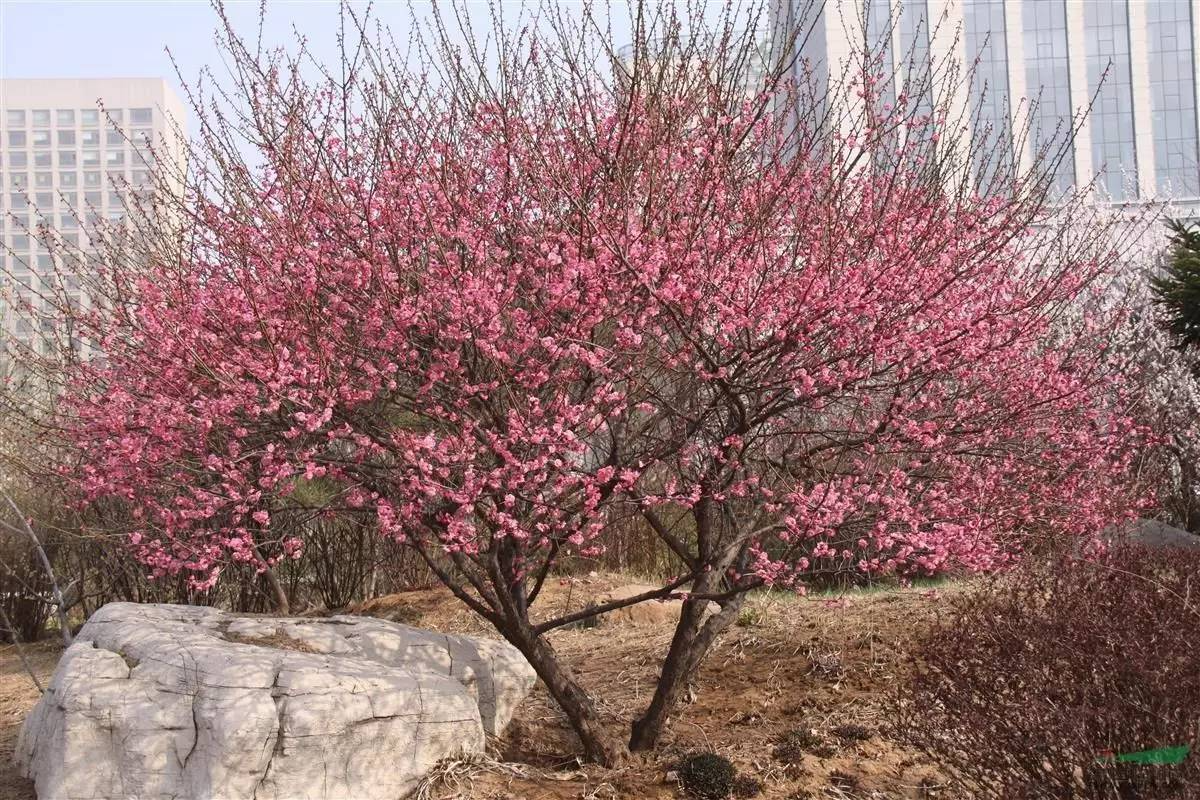
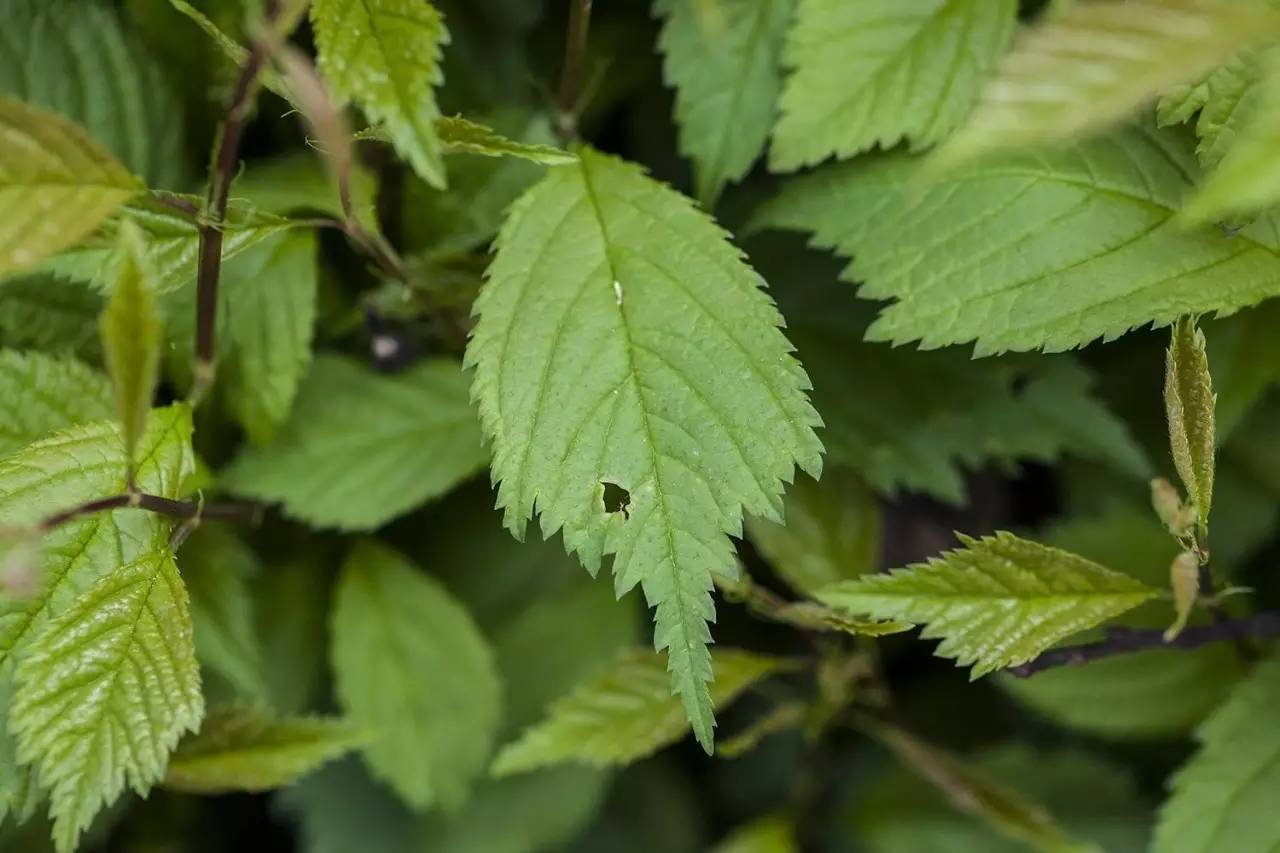
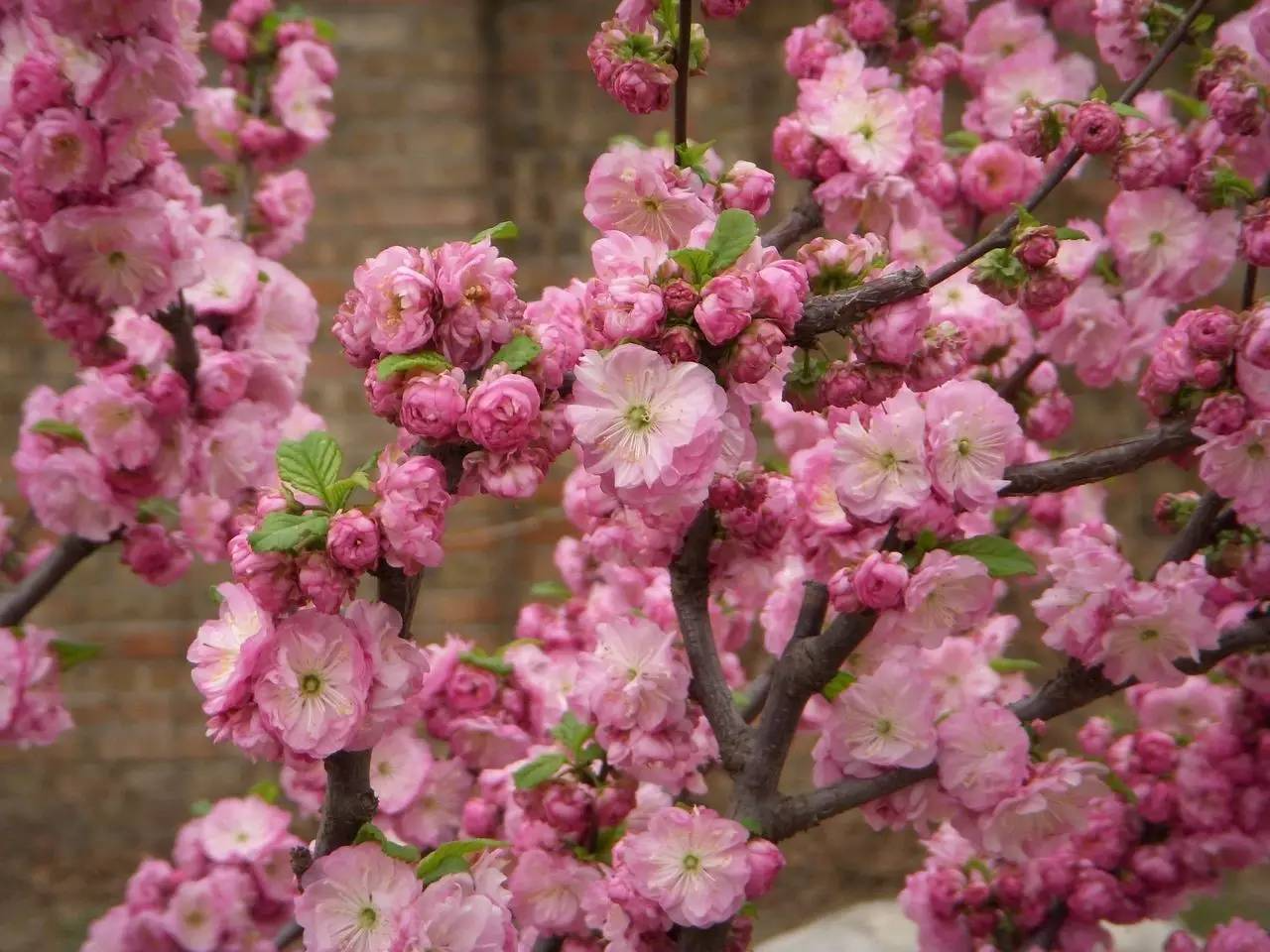
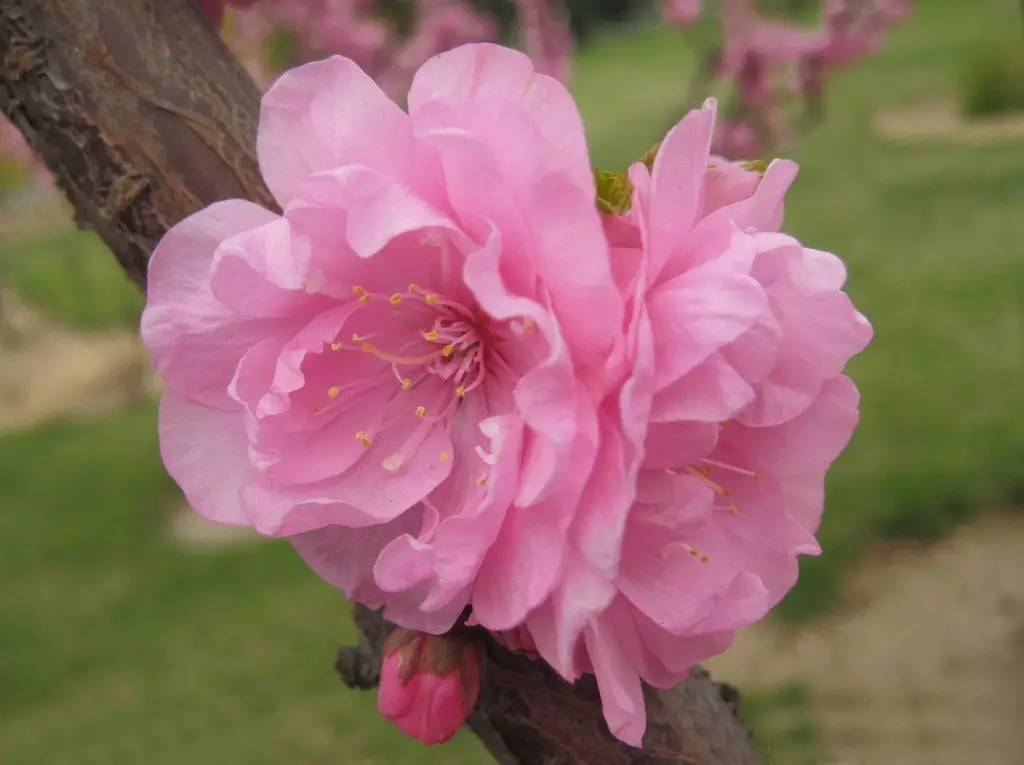
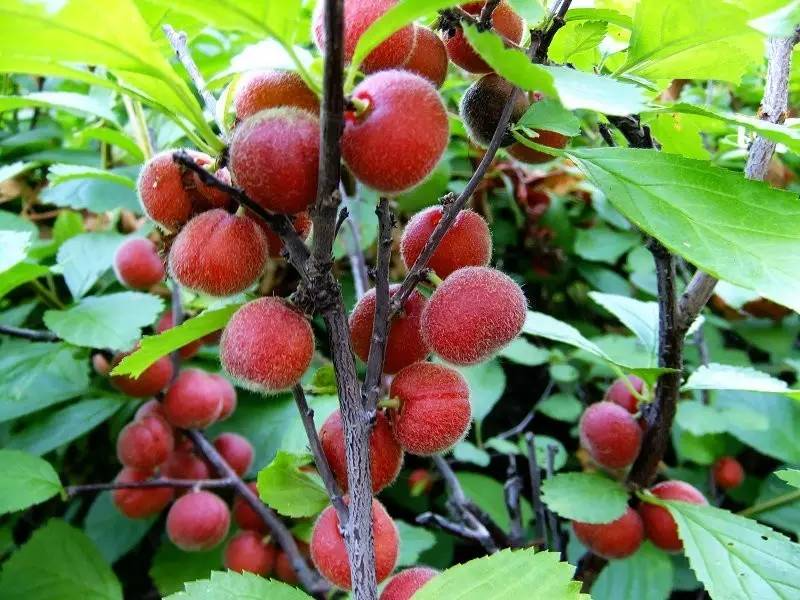
▲24. Prunus mume (flowering period has passed, fruiting) : Prunus mume belongs to the genus Prunus in the Rosaceae family. Its leaves resemble elm trees and its flowers resemble plum blossoms, hence the name "Prunus mume". Prunus mume has dense branches and leaves, and colorful flowers. It is an important greening and ornamental shrub species for gardens, streets, and roadsides in the north. When planted with plants of other colors, the flowers are extremely beautiful in shape and color when they bloom in spring and autumn. The flowers of various colors compete with each other for beauty, creating a pleasant scenery. It is a rare gardening plant.
Prunus mume has a history of cultivation for hundreds of years and is planted in most parks across the country. It blooms early and is mainly for viewing. Common cultivated types include Prunus mume (double petals, pink; usually 10 sepals) and Prunus mume (10 petals and sepals each, pink flowers; leaves are hairless on the underside). The flowering period is April to May, and the fruiting period is May to July.
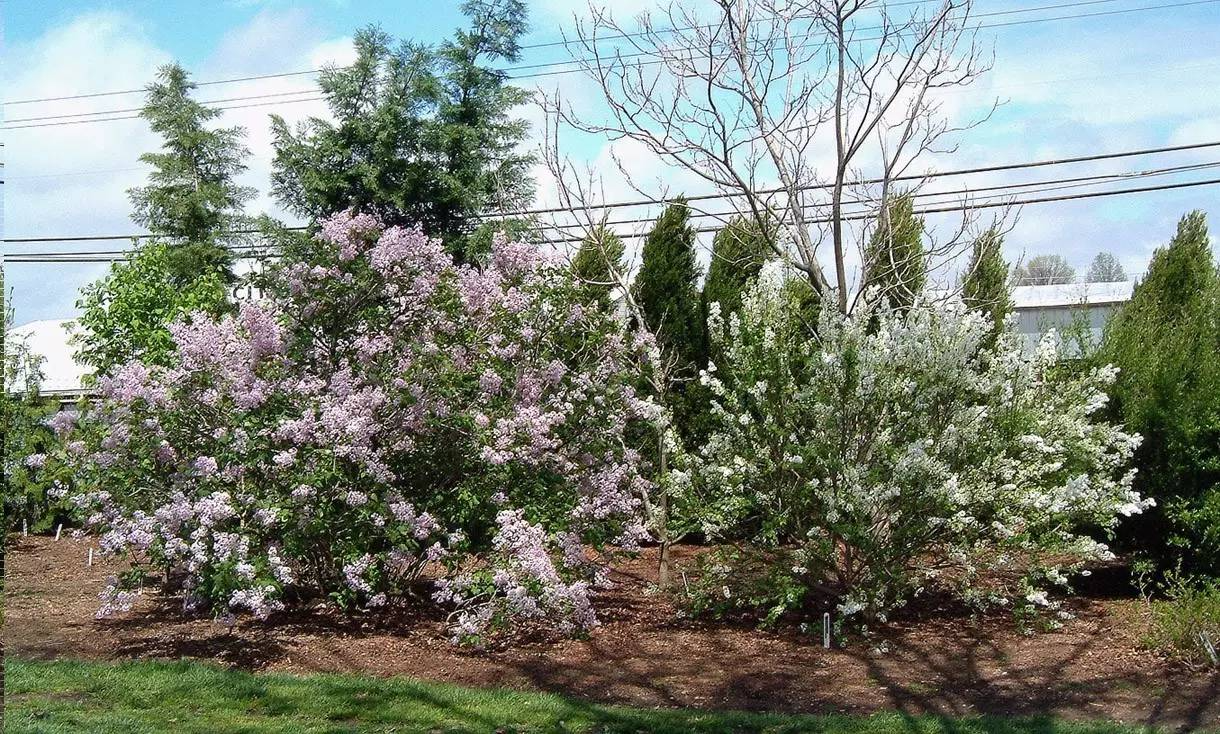
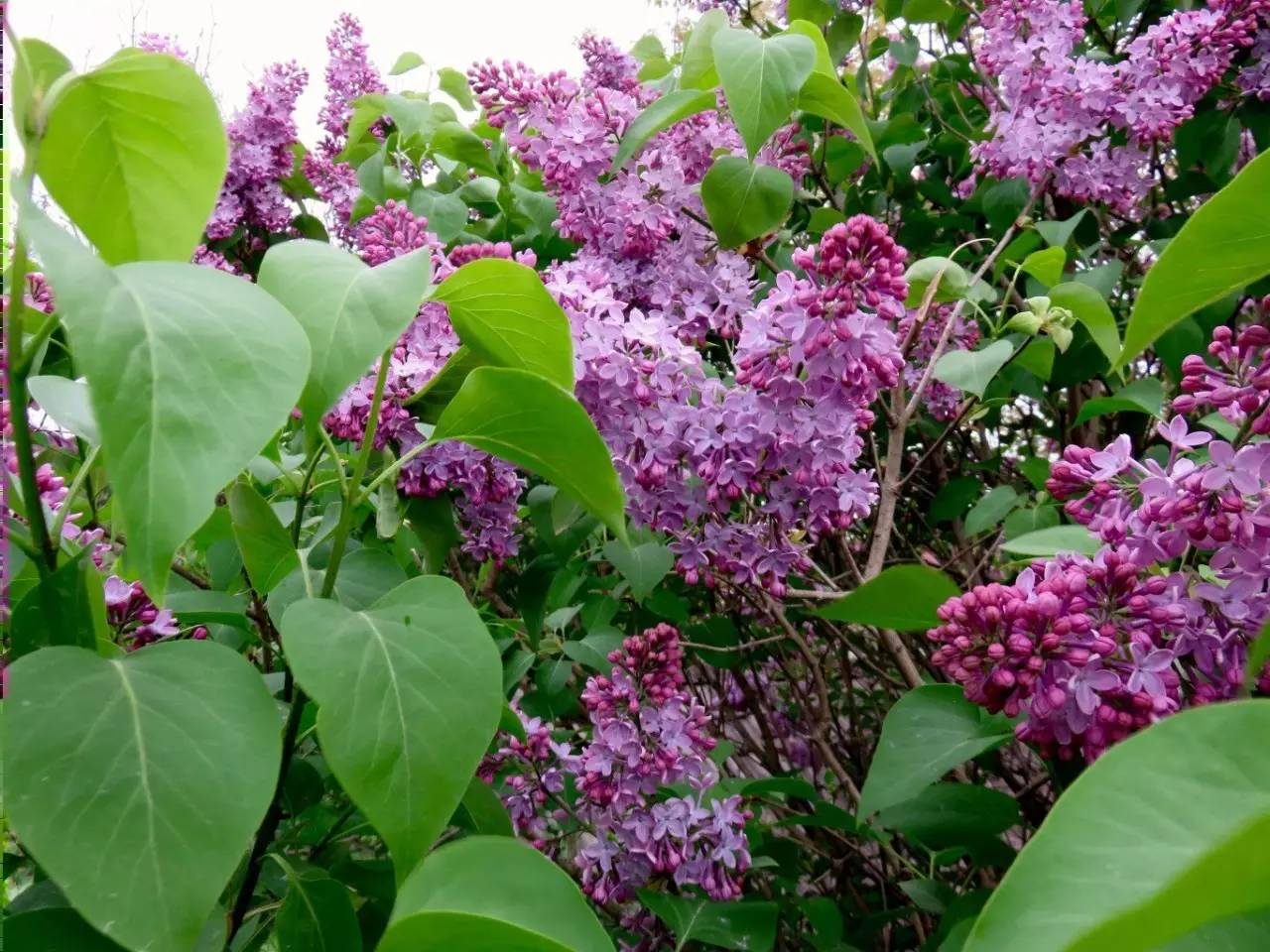
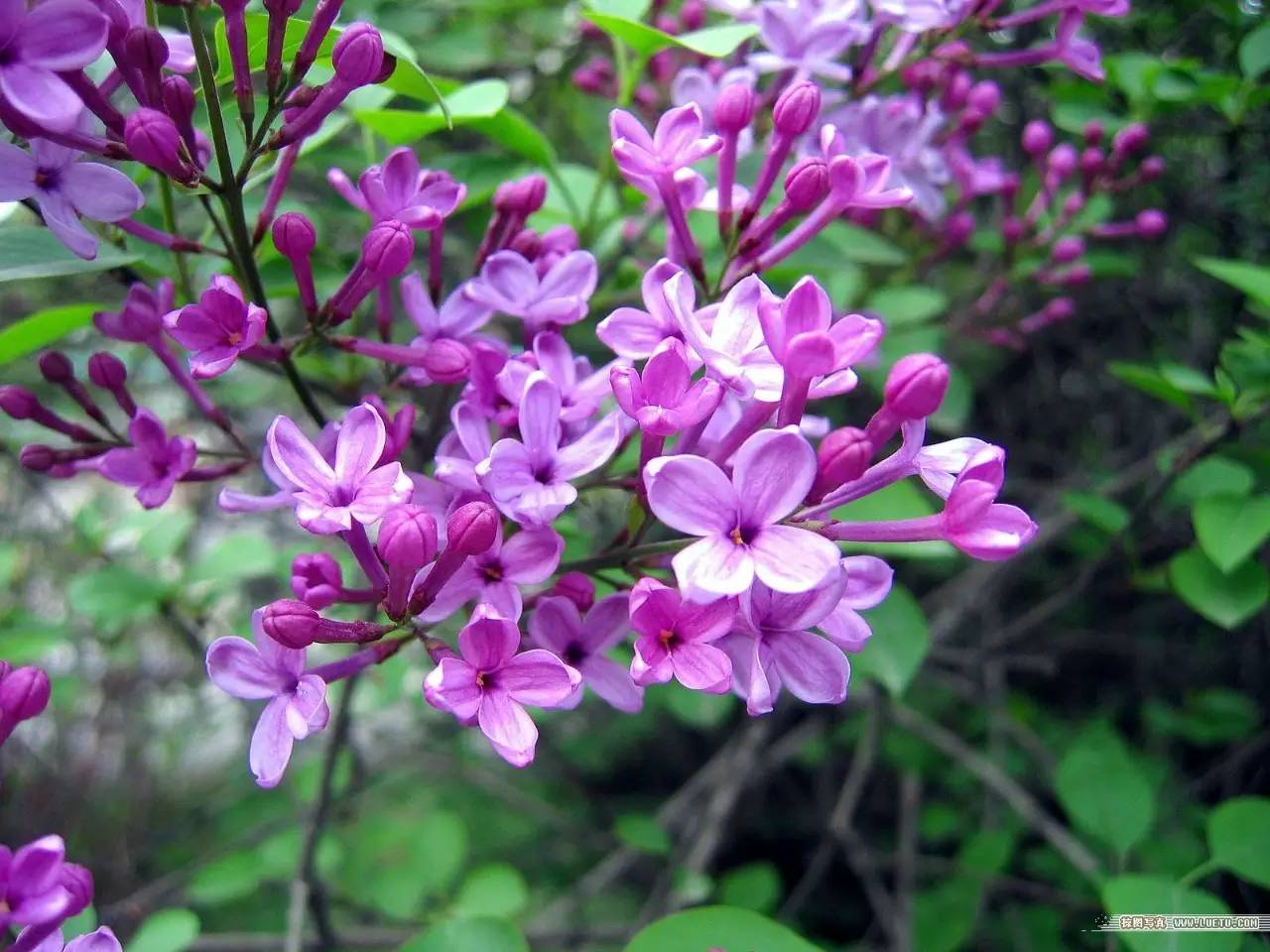
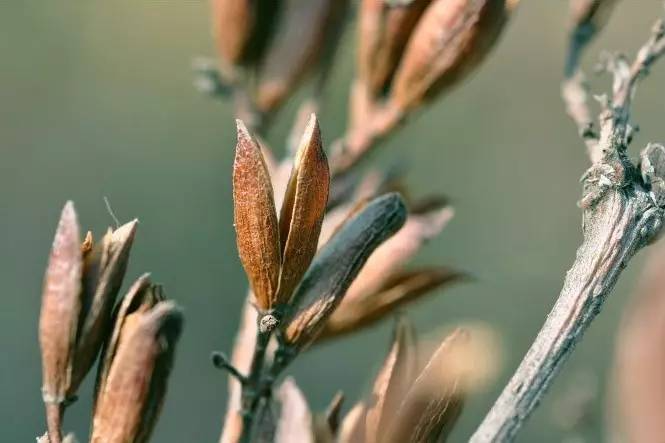
▲25. Syringa (flowering period has passed, fruiting) : Syringa genus of Oleaceae, also known as lilac, North China lilac, hundred knots, etc., native to China, with a cultivation history of more than 1,000 years, it is a precious flower. Suitable for garden cultivation, in spring when it blooms, the huge and colorful inflorescence covers the whole plant, exuding fragrance, and has a very good ornamental effect. Flowering period is April-May, and fruiting period is June-October.
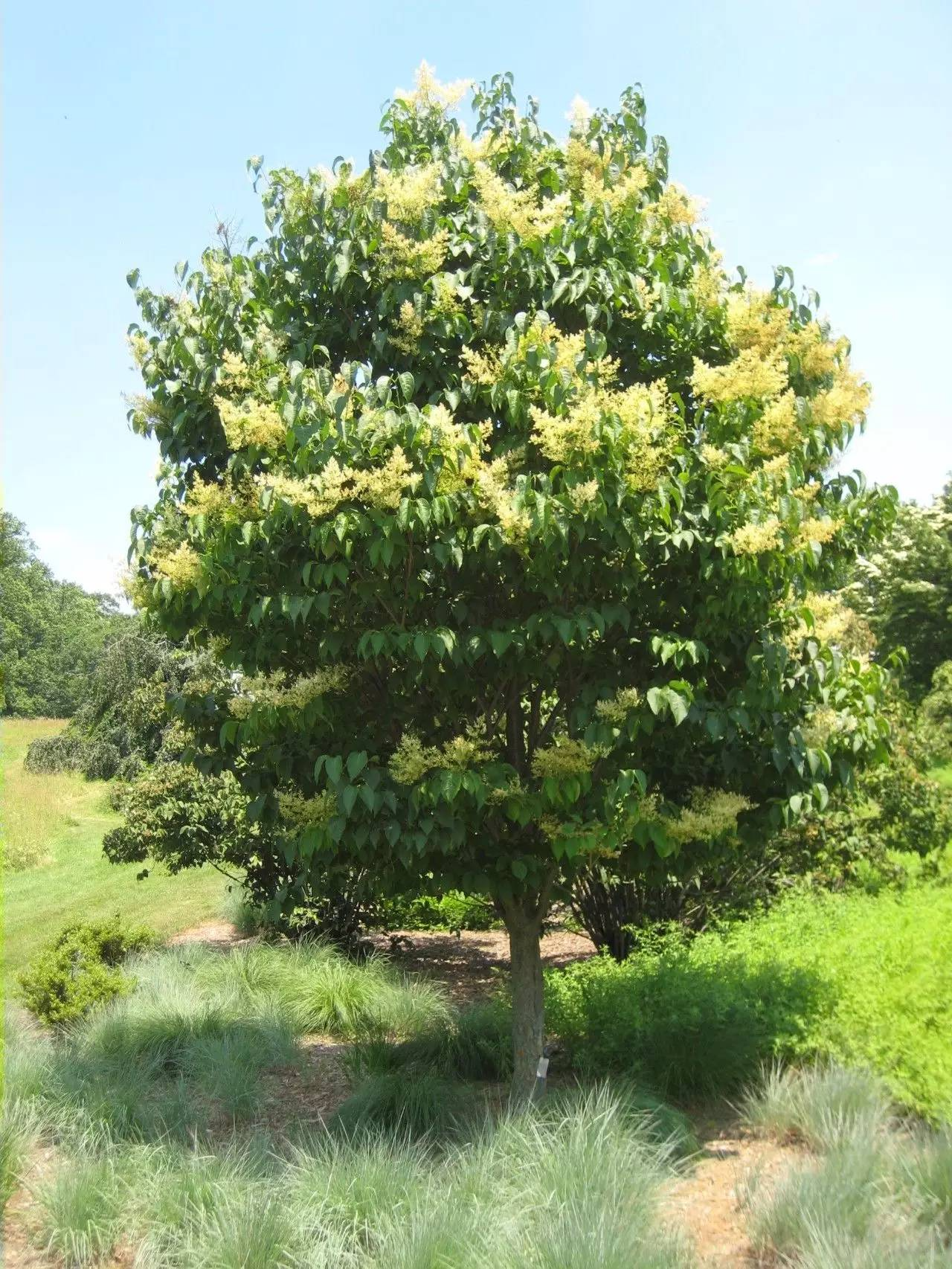
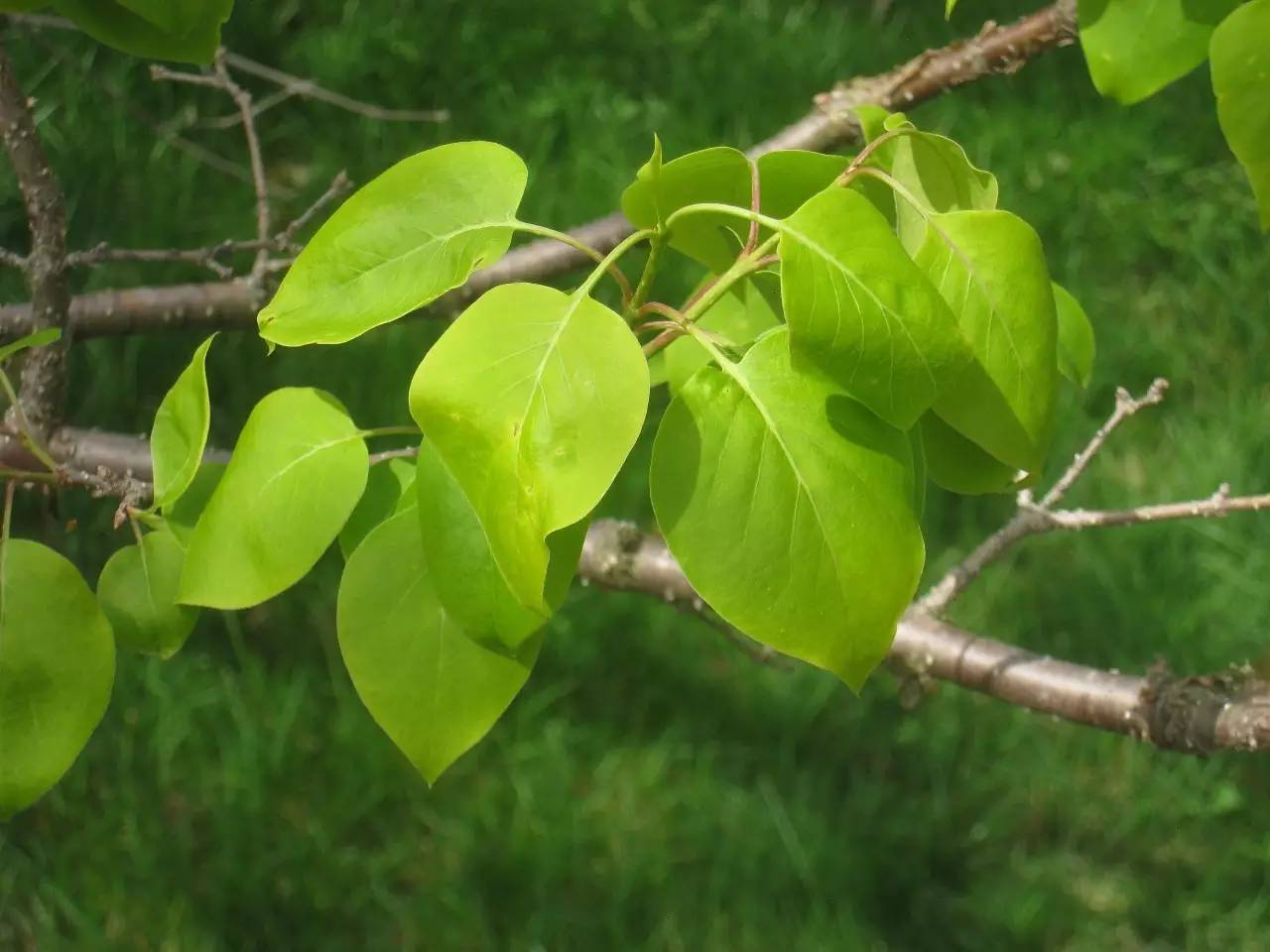
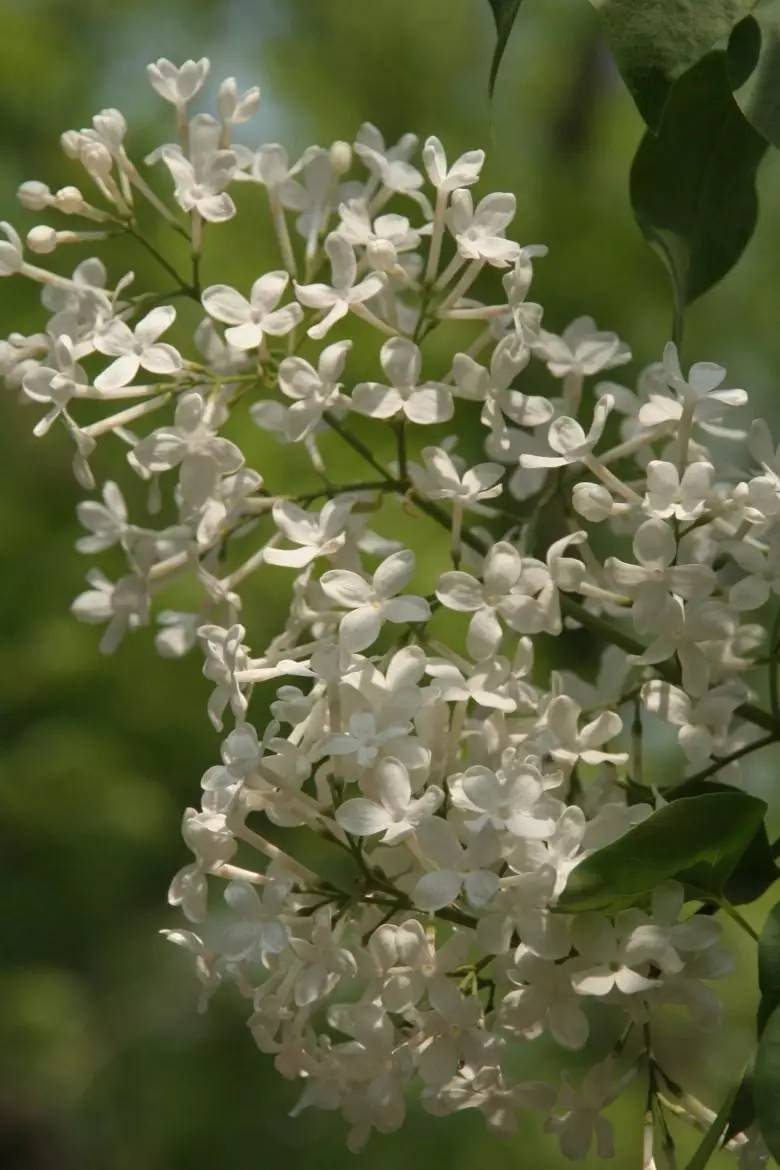
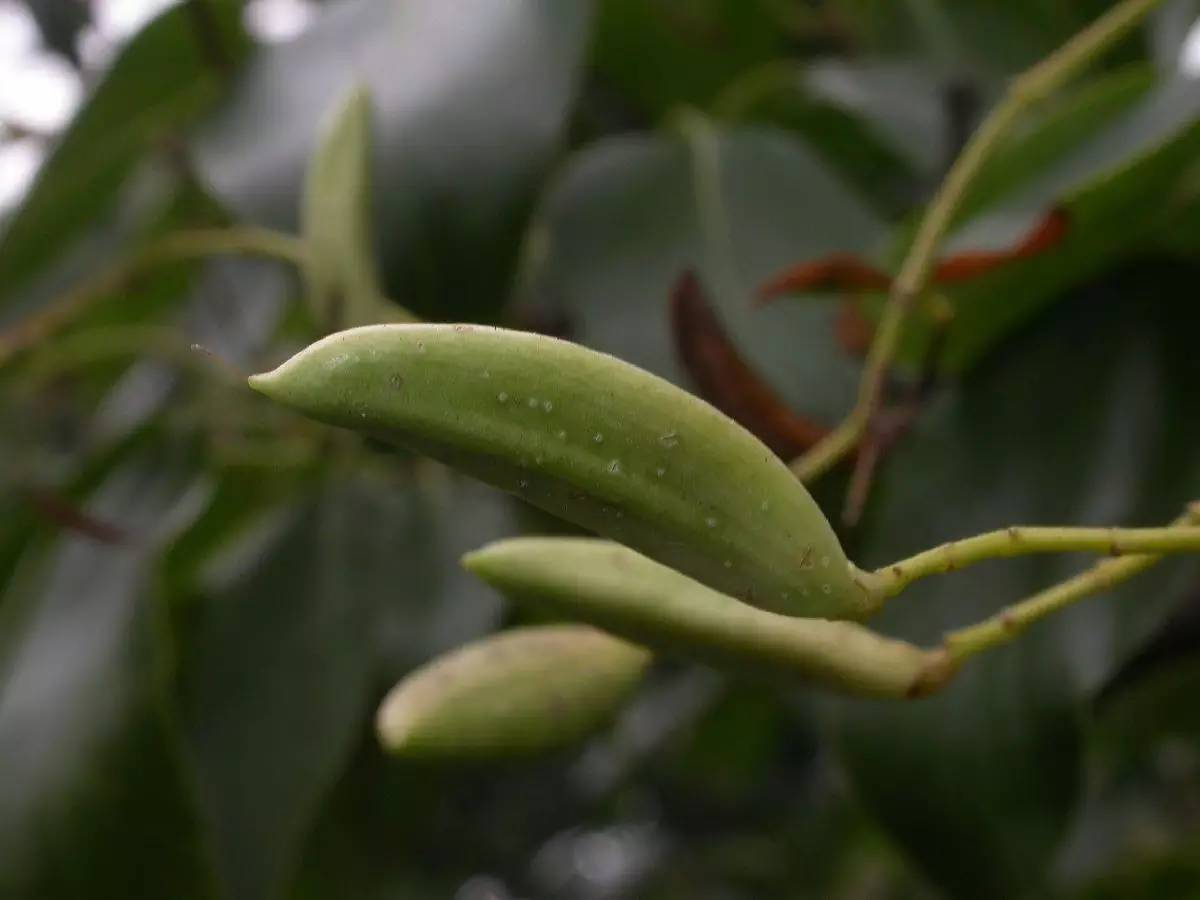
▲26. Beijing lilac (flowering period has passed, fruiting) : Oleaceae lilac genus, large shrub or small tree, late-flowering lilac species, one of the few ornamental trees in Beijing. It has strong adaptability to urban environment and can also be used as a landscape tree and street tree. Beijing lilac is the preferred rootstock for grafting and propagation of excellent varieties of lilac.
With luxuriant branches and leaves, it is widely cultivated in Beijing gardens for ornamental purposes. It is an excellent flower and tree in early summer in northern gardens. The flowering period is from May to June, and the fruiting period is from August to October.
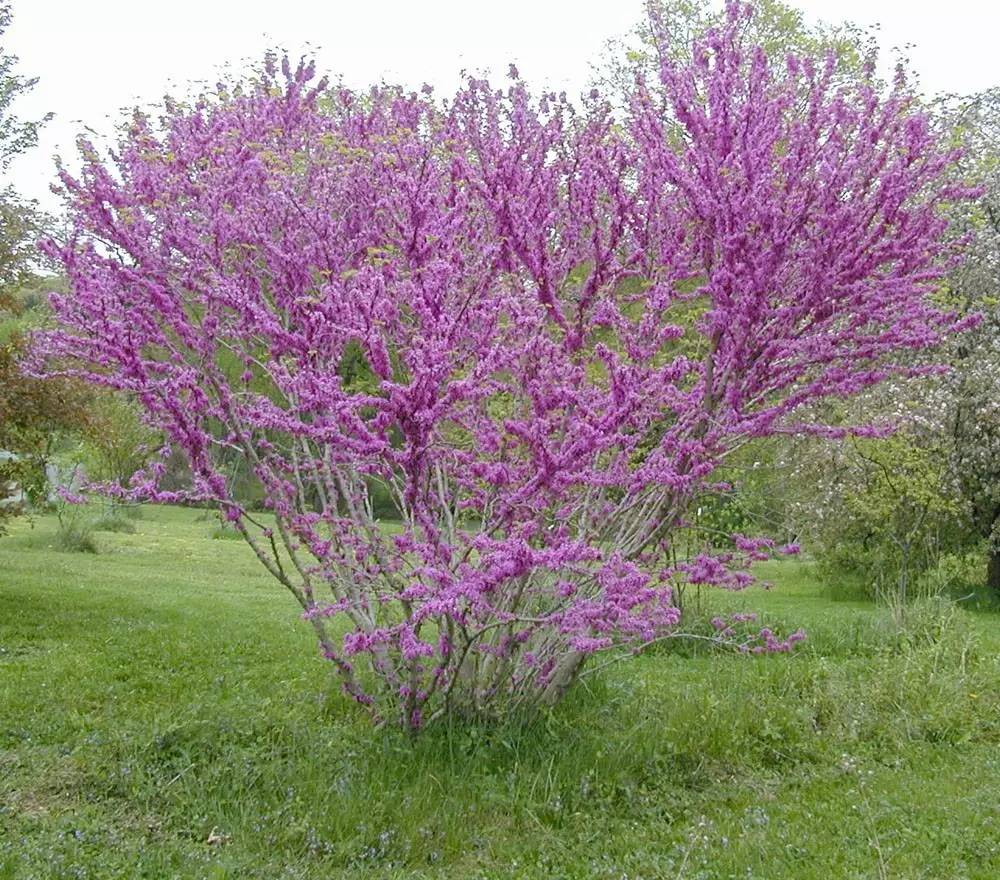
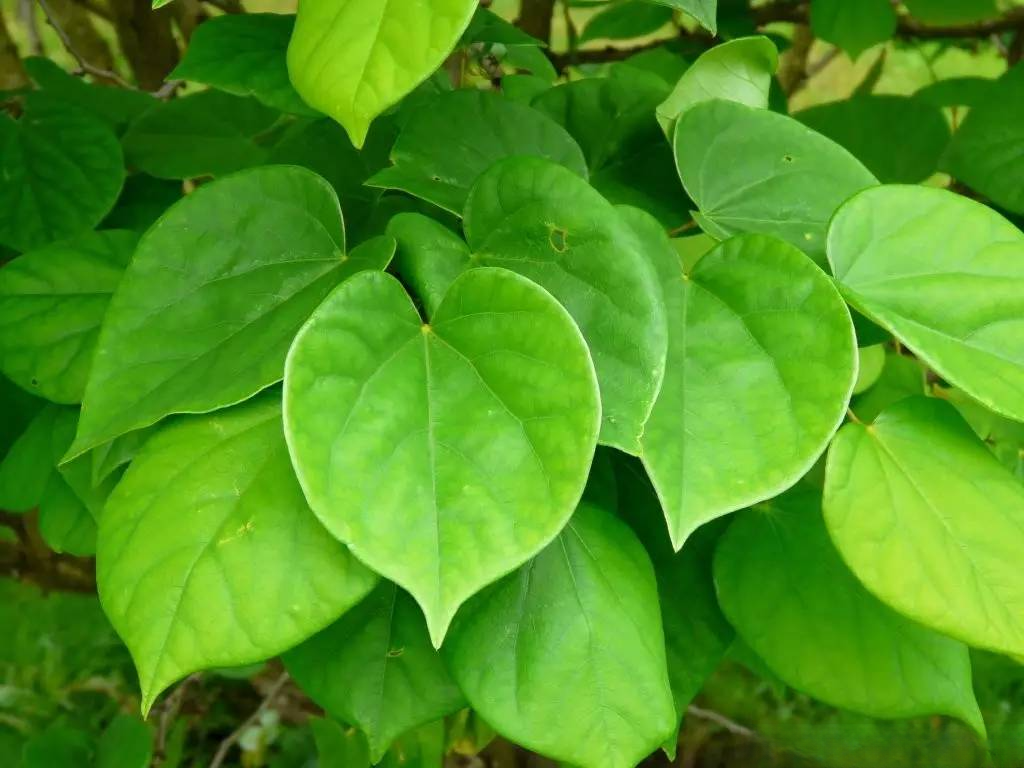
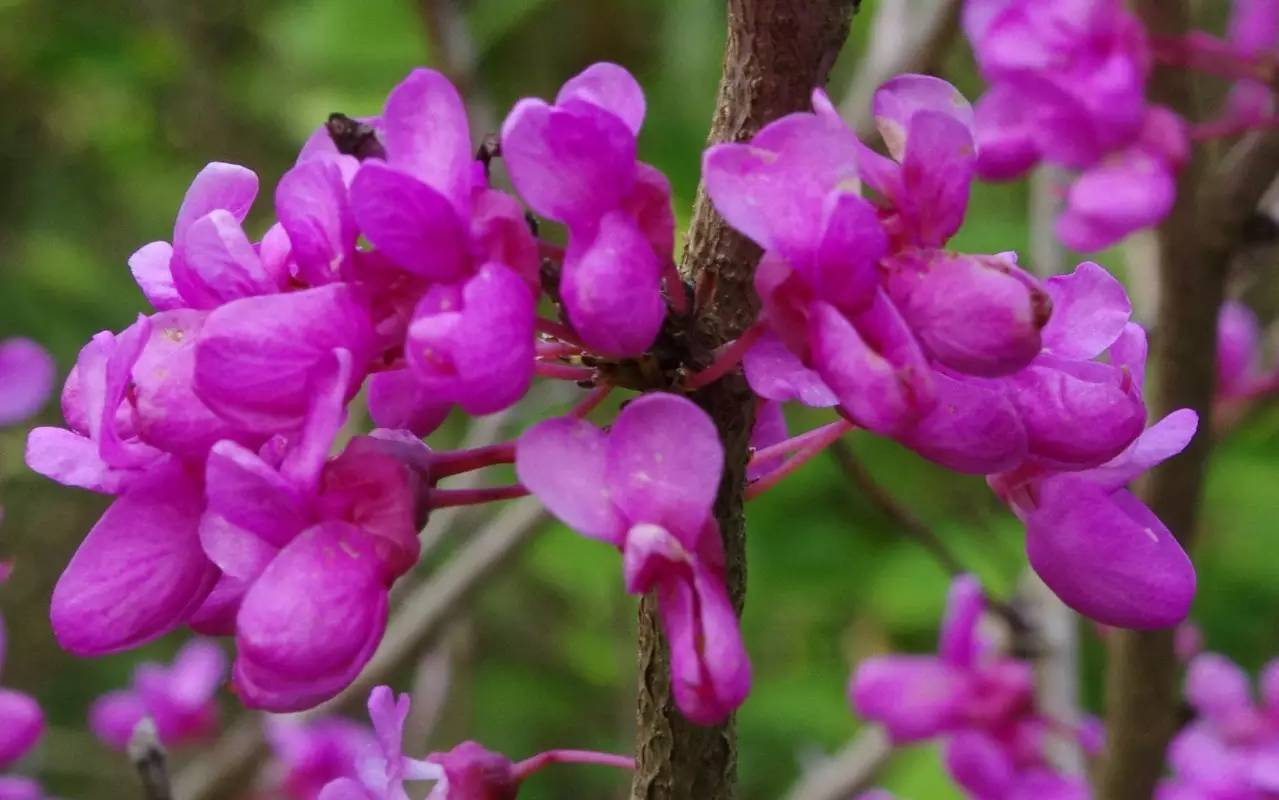
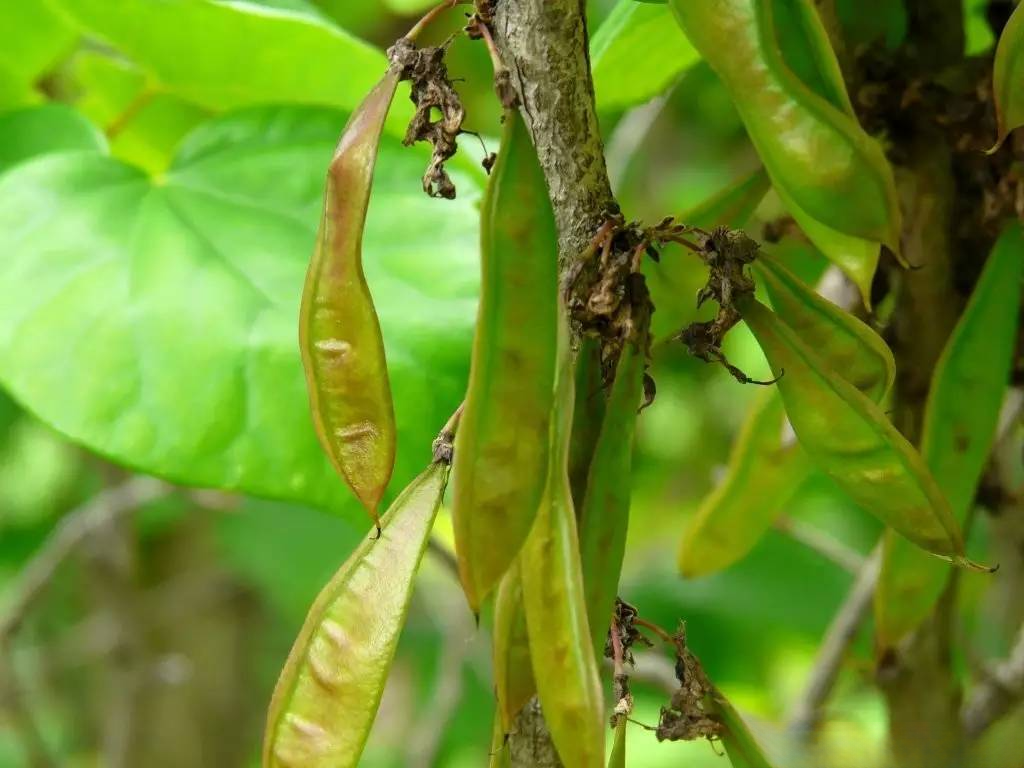
▲27. Bauhinia (flowering period has passed, fruiting) : Bauhinia genus of Leguminosae, native to China, Bauhinia has deep roots in the courtyards of ordinary people, and has always been a symbol of family harmony and deep affection. Lu Ji, a scholar in the Jin Dynasty, wrote in a poem: "Three bauhinias are happy on the same tree, and four birds are sad in different forests." Flowering period is March-April; fruiting period is August-October.
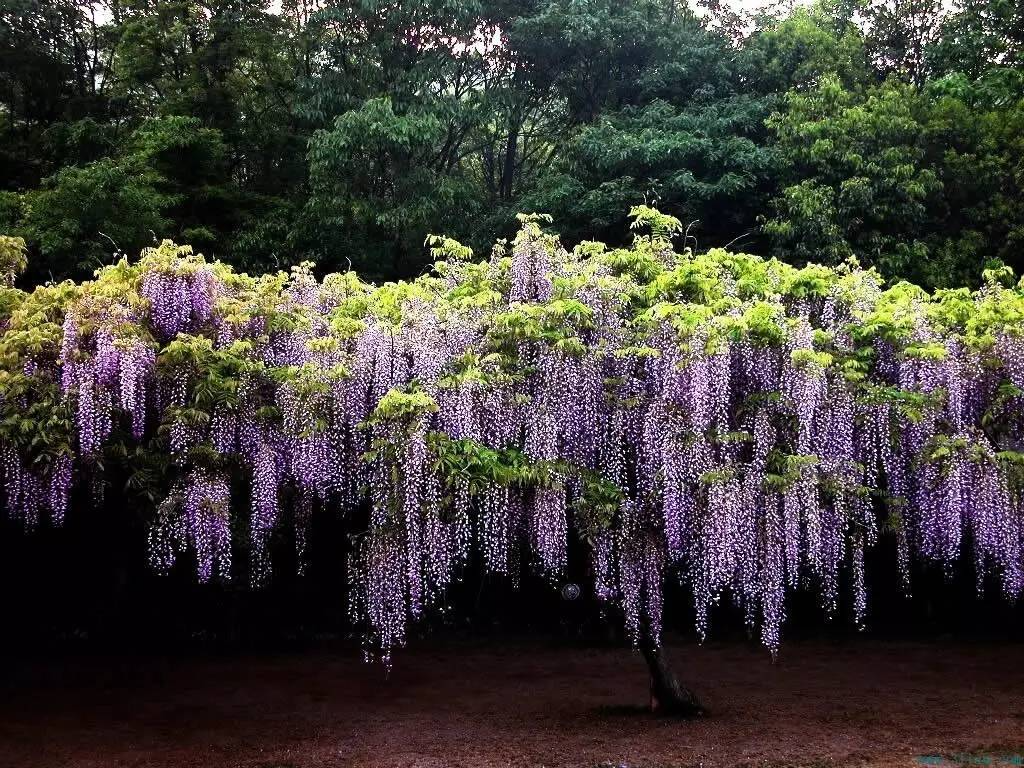
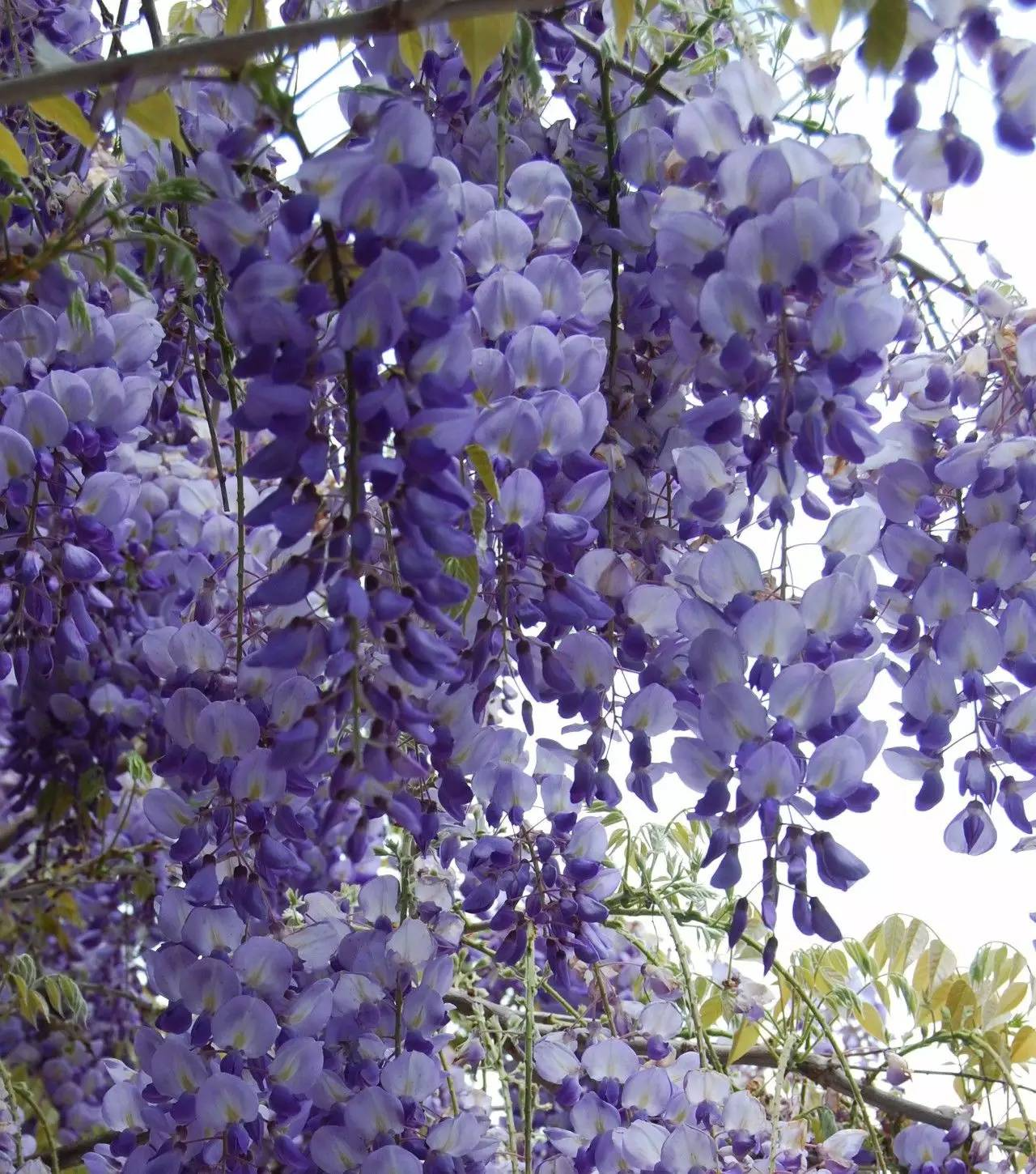
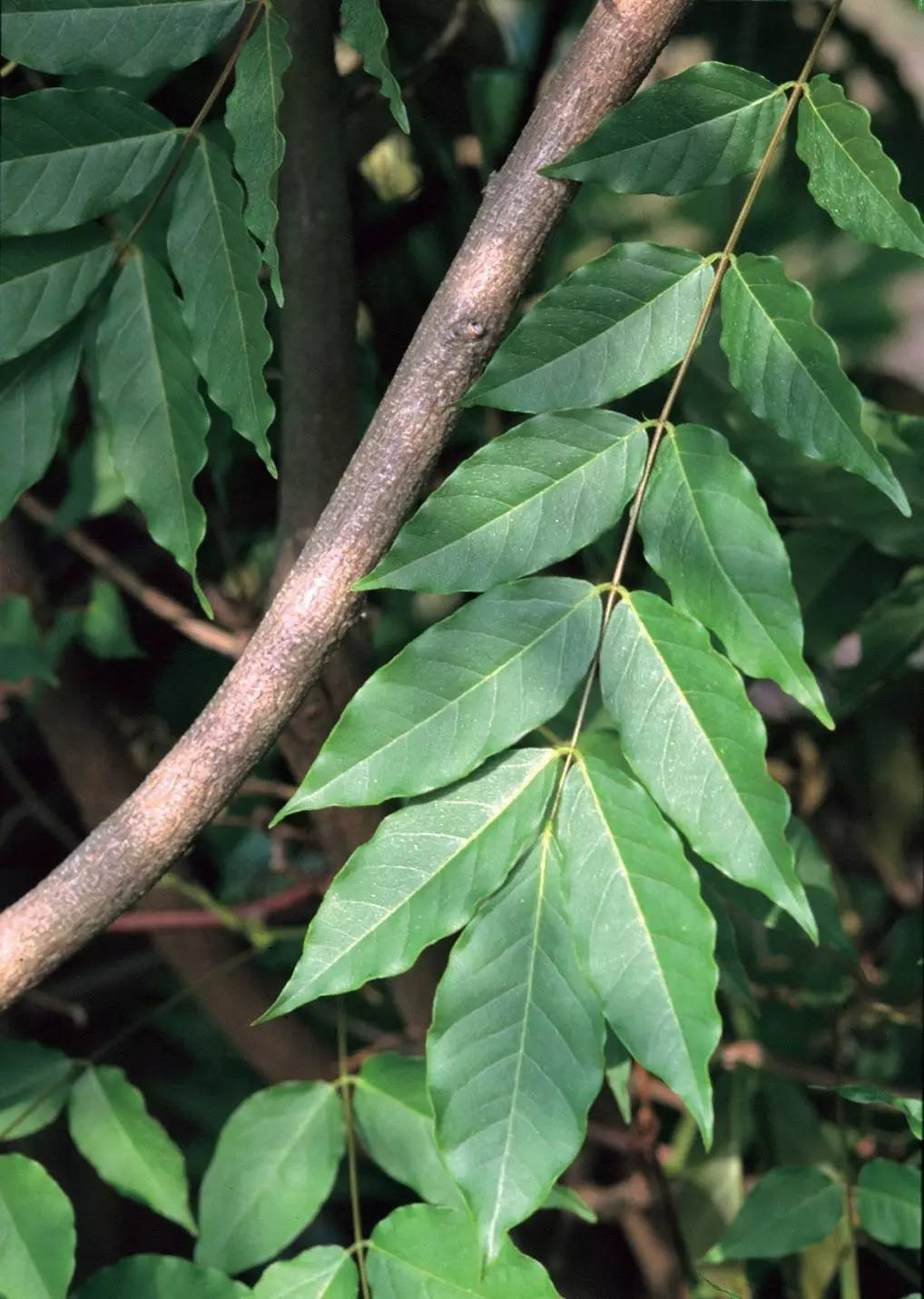
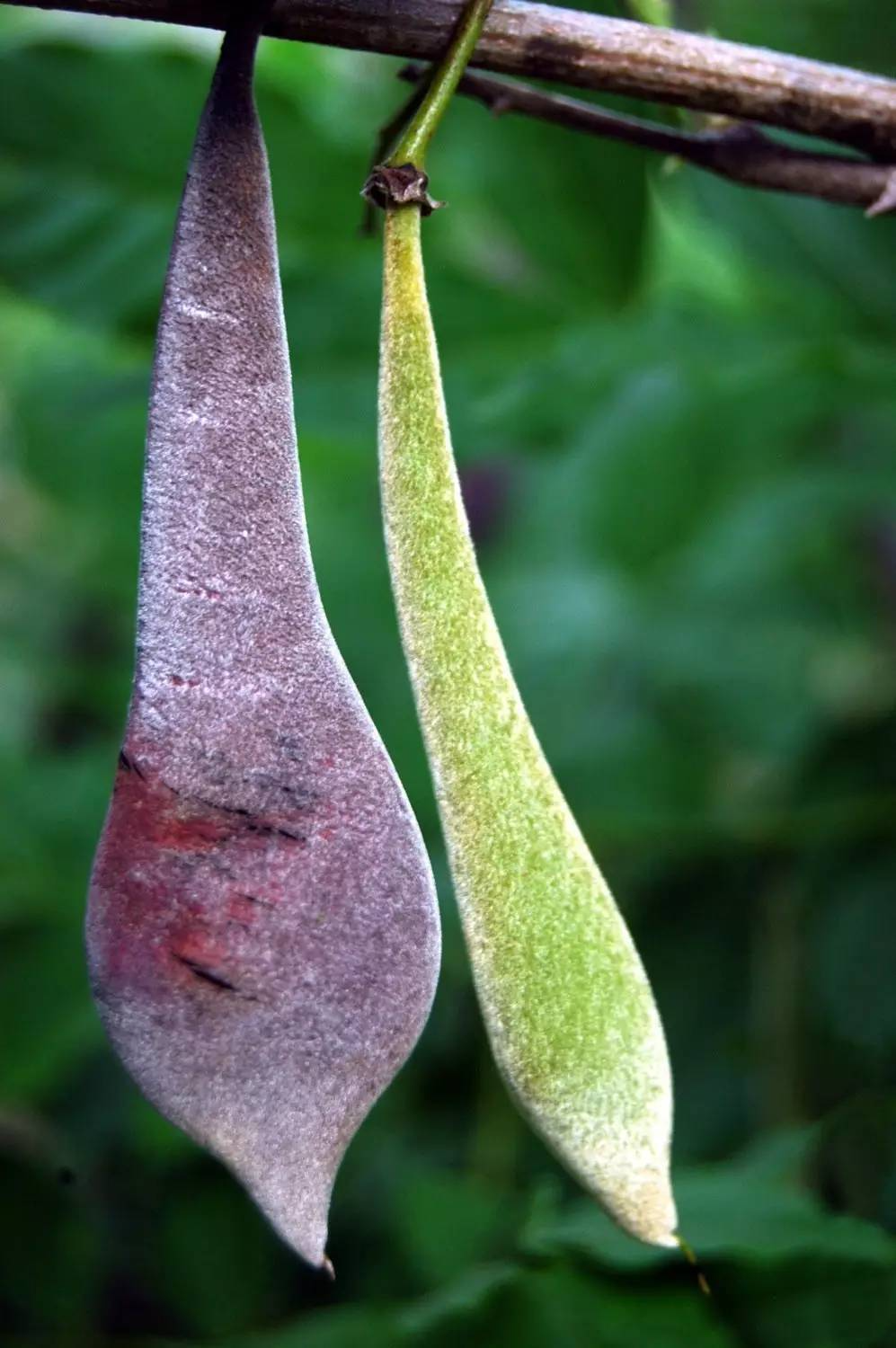
▲28. Wisteria (flowering period has passed, fruiting) : Wisteria genus of Leguminosae, also known as vine and red vine, has been cultivated as a garden trellis plant since ancient times. It blooms before leaves, and purple spikes are dangling with sparse young leaves, which is very beautiful. It is an excellent ornamental vine plant, generally used in garden trellises. In spring, purple flowers are in full bloom, which is very interesting. It is suitable for planting on lakeside, poolside, rockery, stone archway, etc. It has a unique style and is also commonly used for bonsai. The flowering period is April-May, and the fruiting period is May-August. The fruit is poisonous.
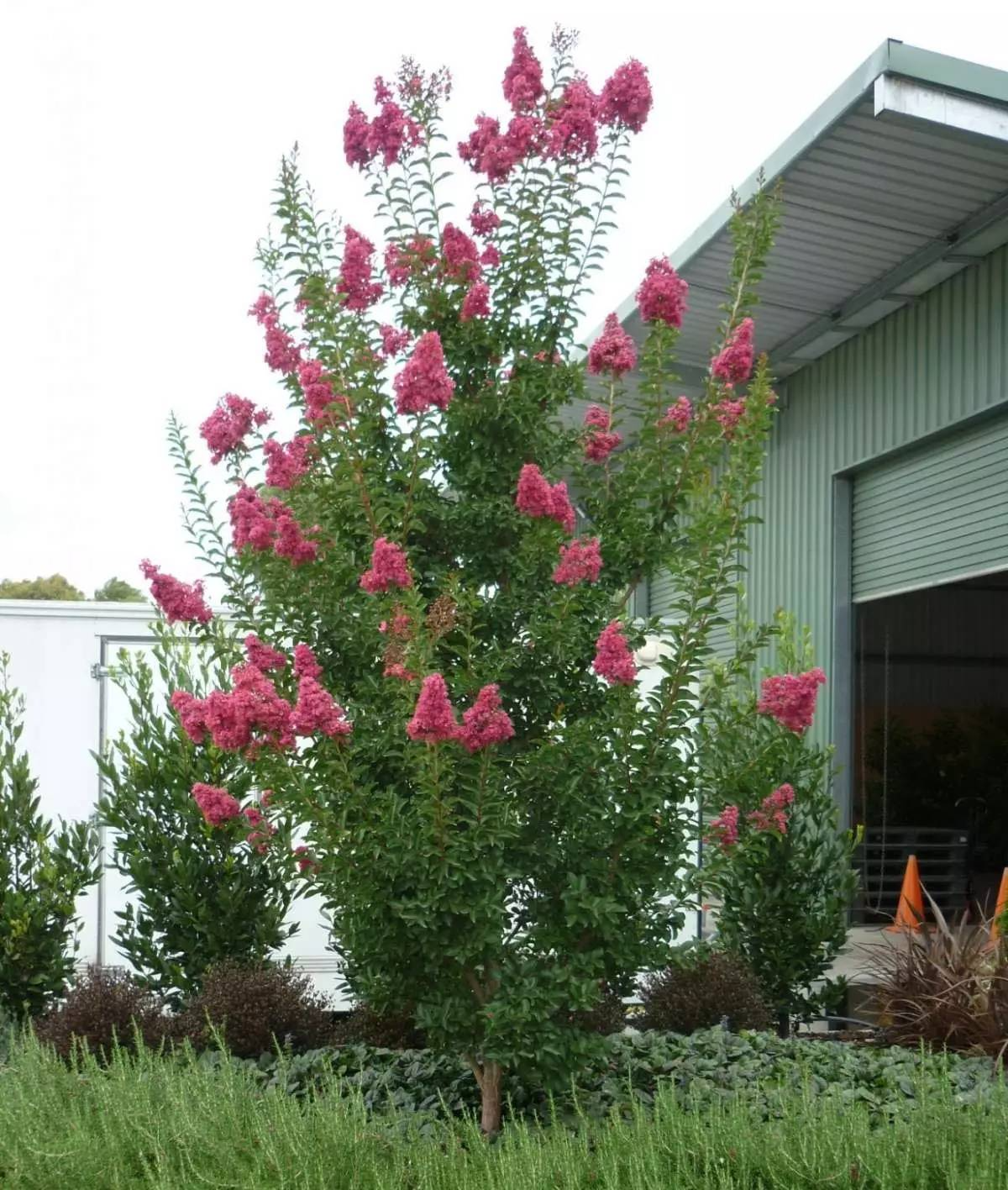

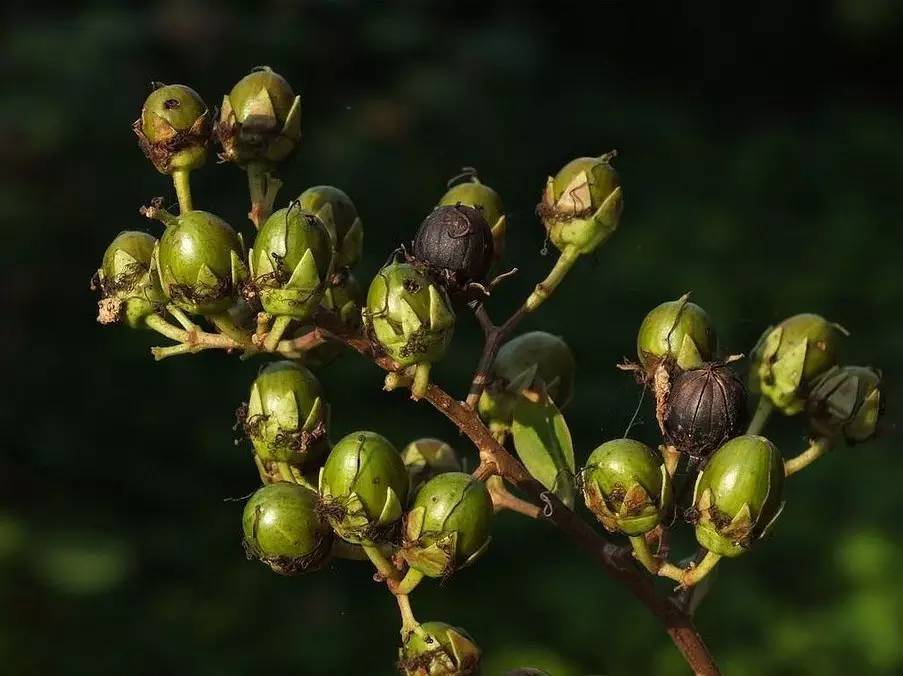
▲29. Crape Myrtle (in bloom) : This tree belongs to the genus Crape Myrtle of the Lythraceae family. It has a graceful posture, a smooth and clean trunk, and bright flowers. It blooms in the summer and autumn when there are few flowers. The flowering period is long, so it is called "Hundred Days Red". There is also a praise that "the green in midsummer covers the eyes, and this flower fills the house with red". It is a good bonsai material for viewing flowers, trunks, and roots. The roots, bark, leaves, and flowers can all be used as medicine. The flowering period is from June to September, and the fruiting period is from September to December.
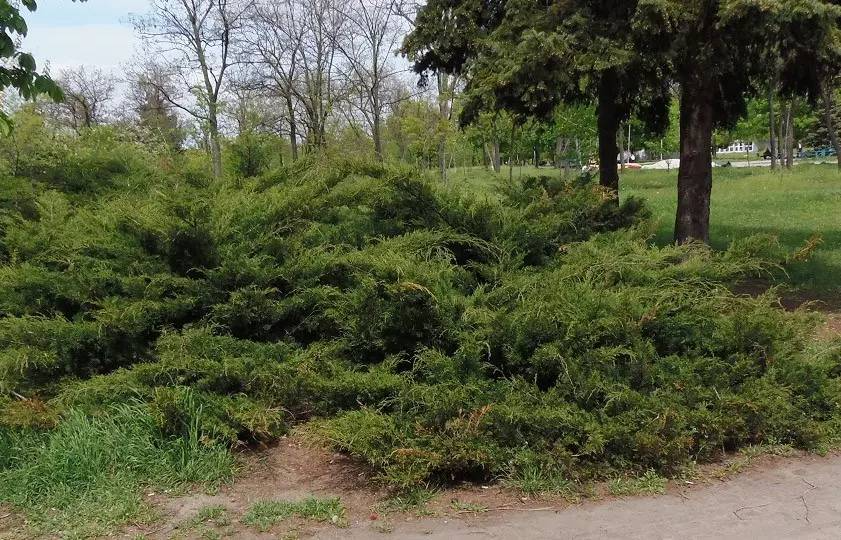
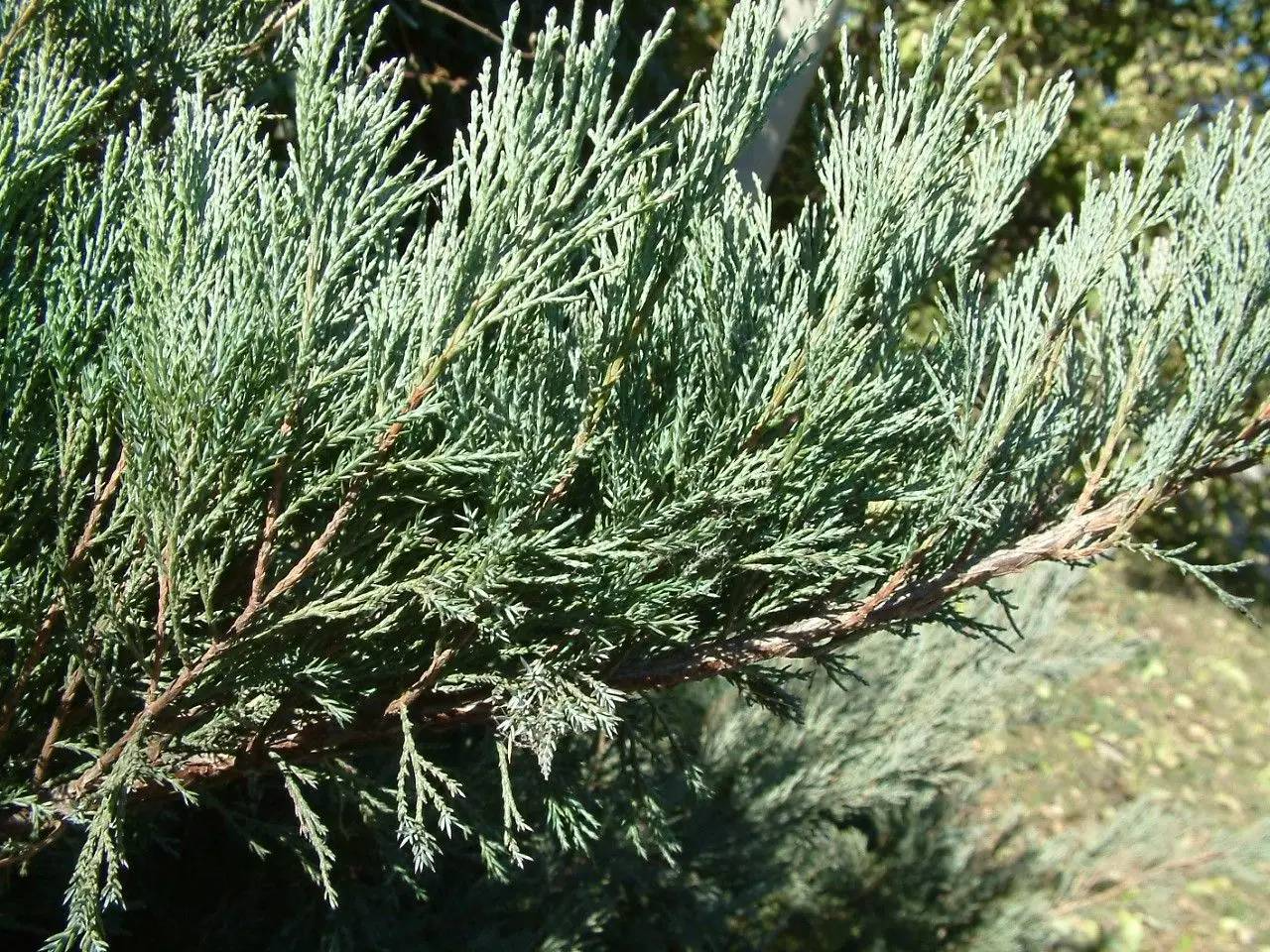

▲30. Juniperus chinensis: Juniperus genus, Cupressaceae, creeping shrub, dioecious, rarely monoecious. Often planted on slopes for viewing and slope protection, or as evergreen ground cover and foundation planting to increase the level. Creeping and graceful, it is a good ground cover tree species. It has strong adaptability and is suitable for slope protection and sand fixation, as a tree species for soil and water conservation and sand fixation afforestation. It is a good soil and water conservation and sand fixation afforestation greening tree species in North China and Northwest China.